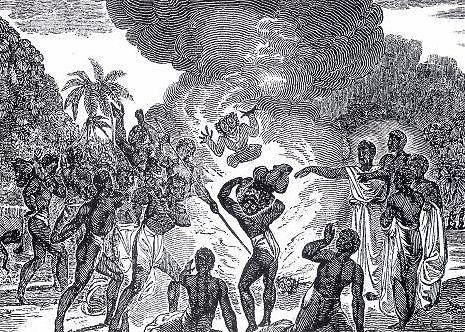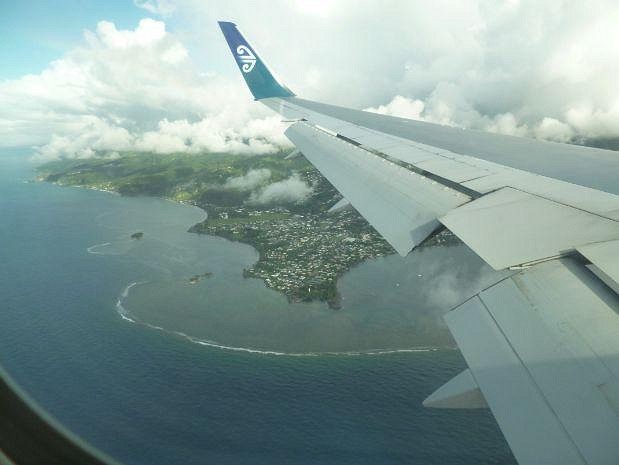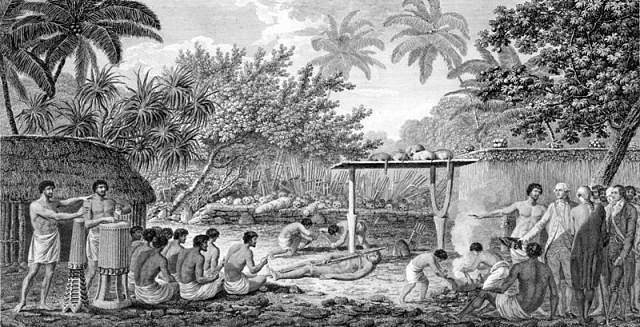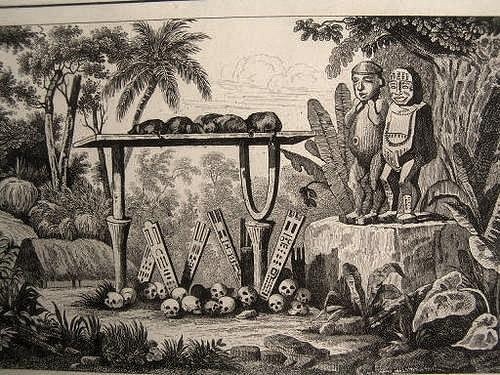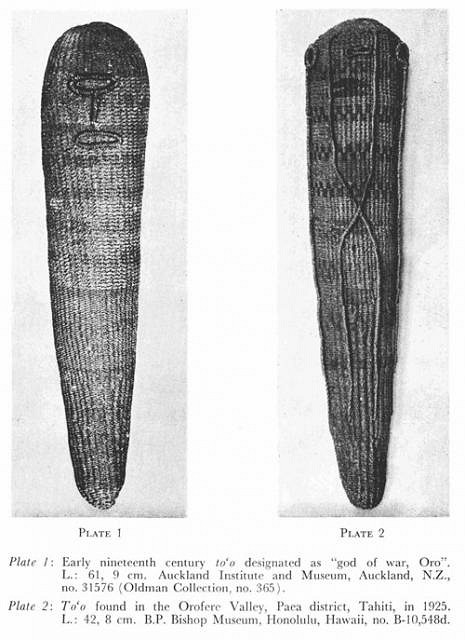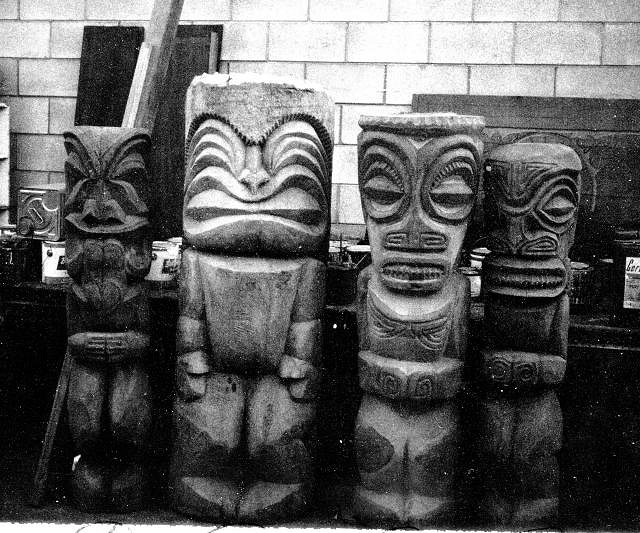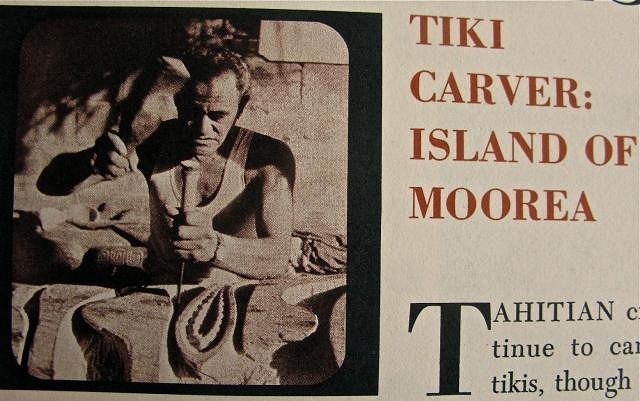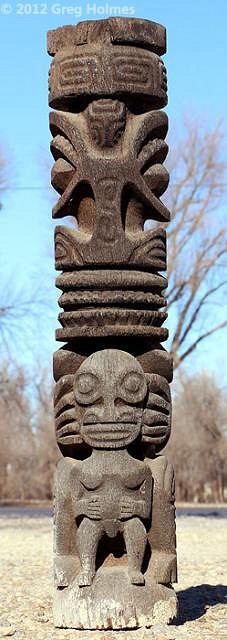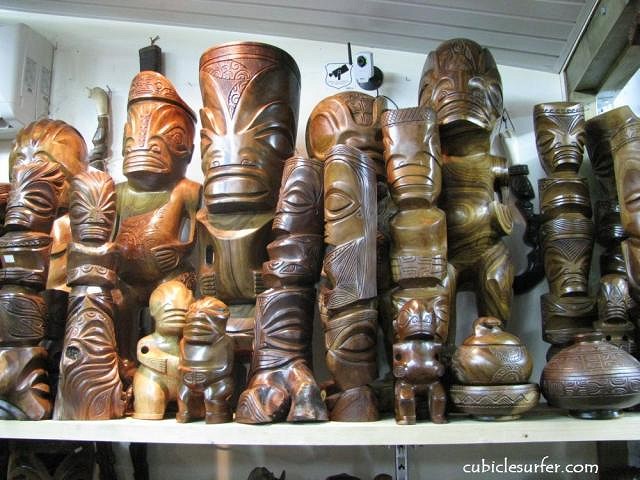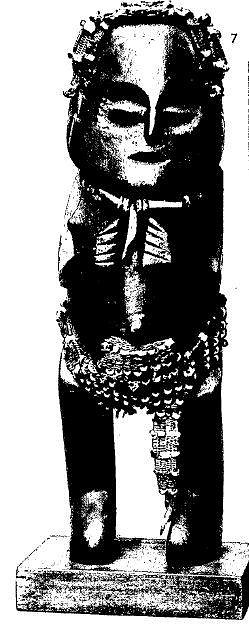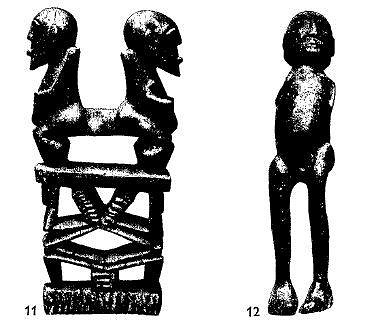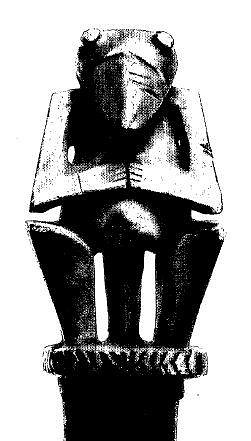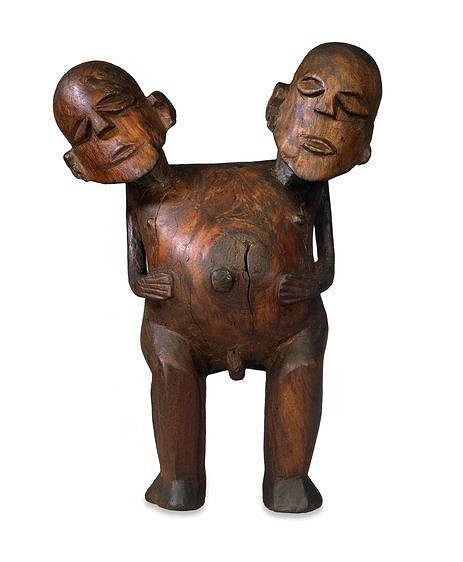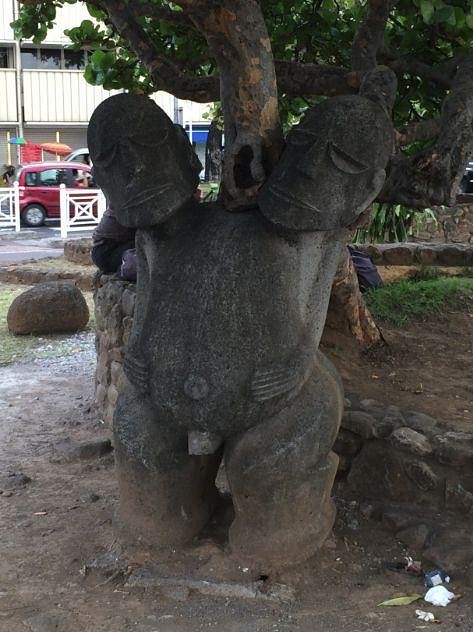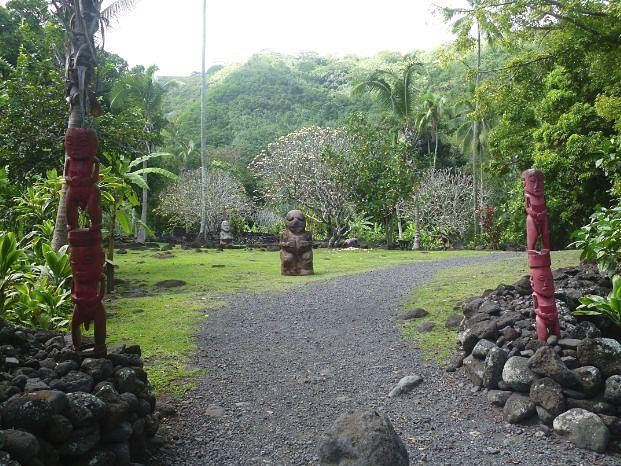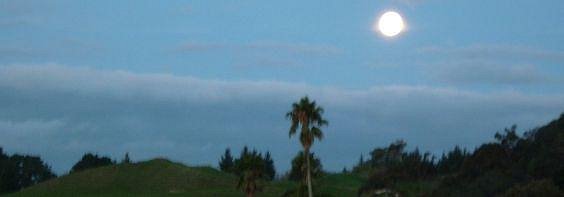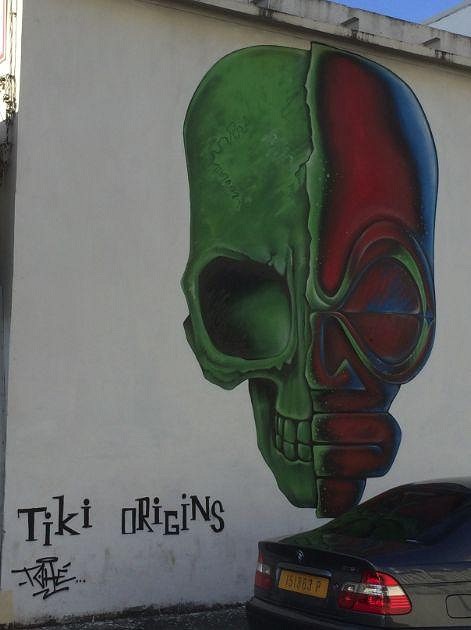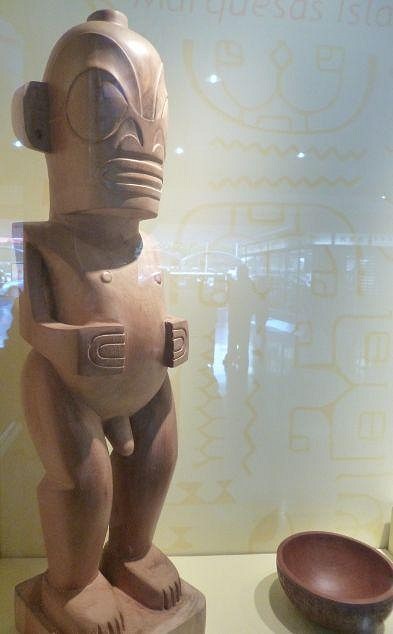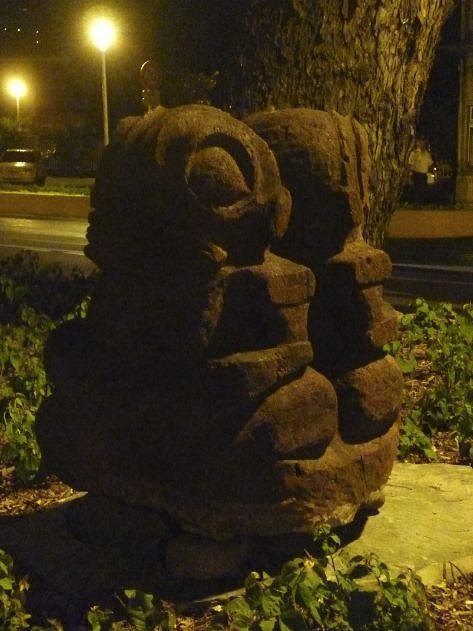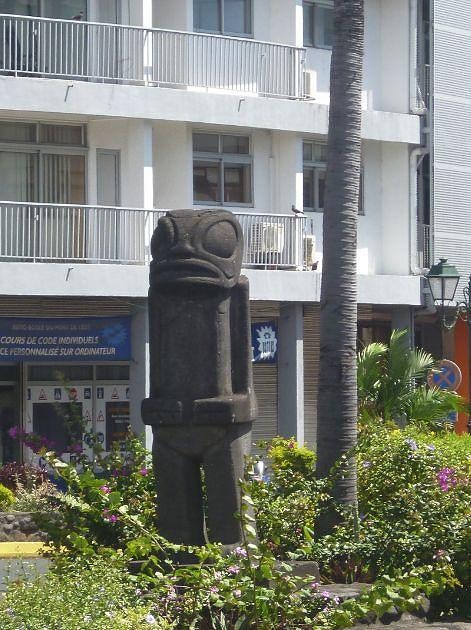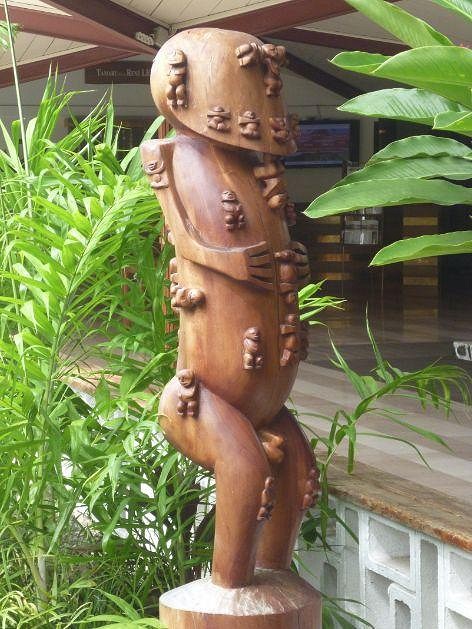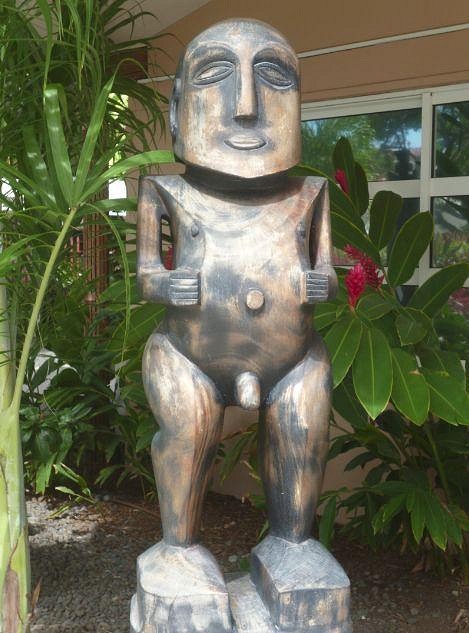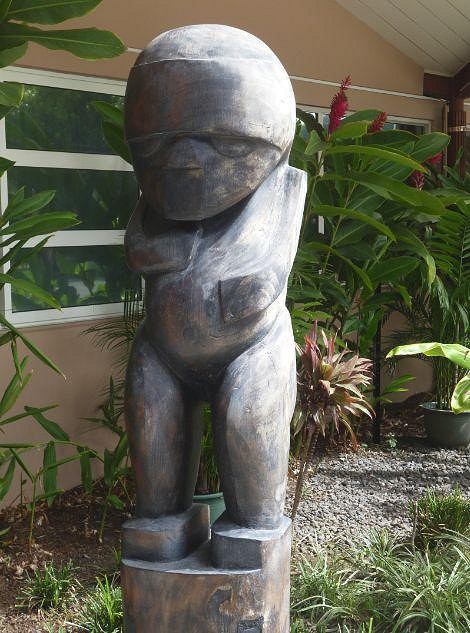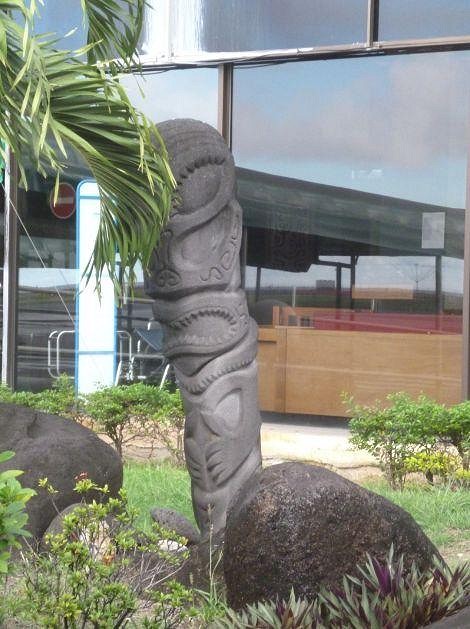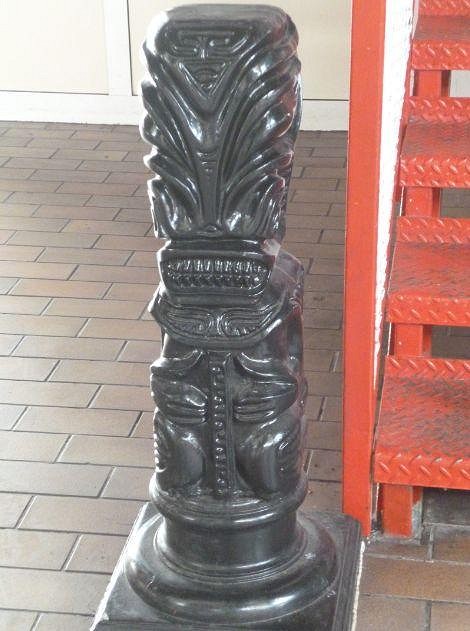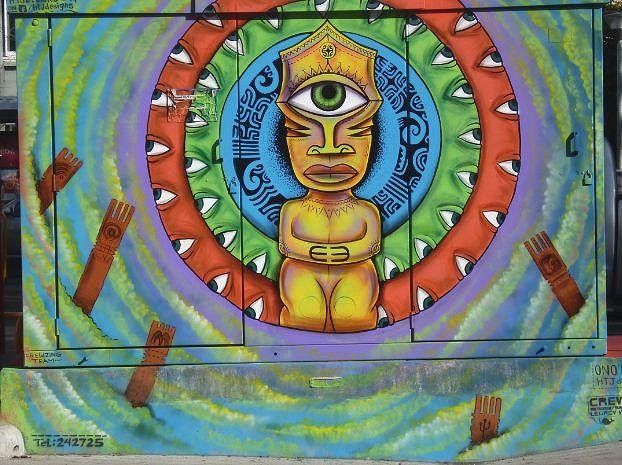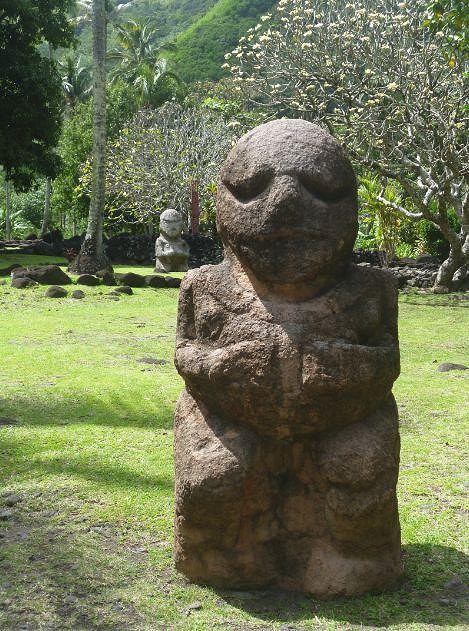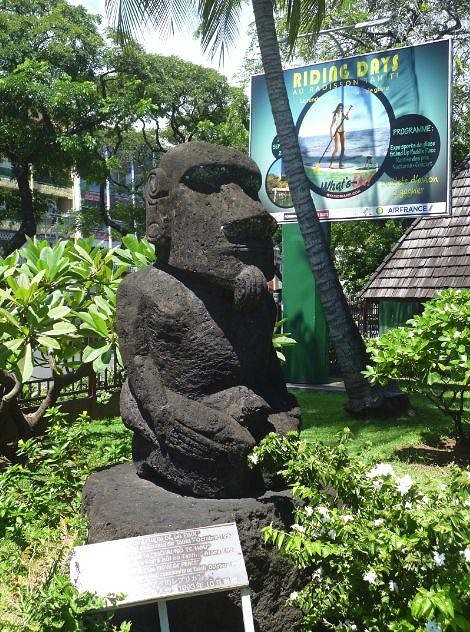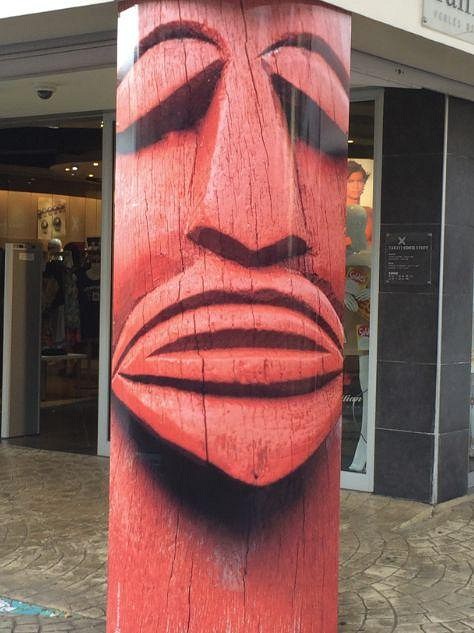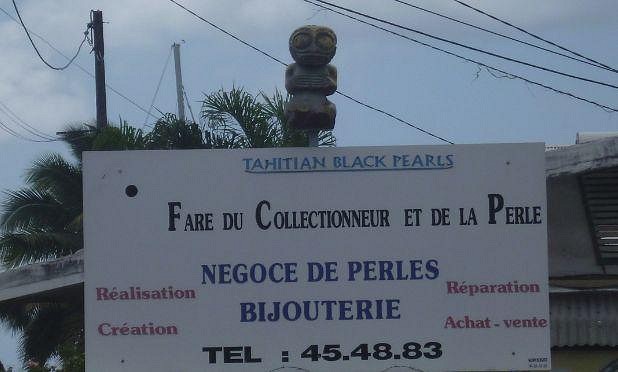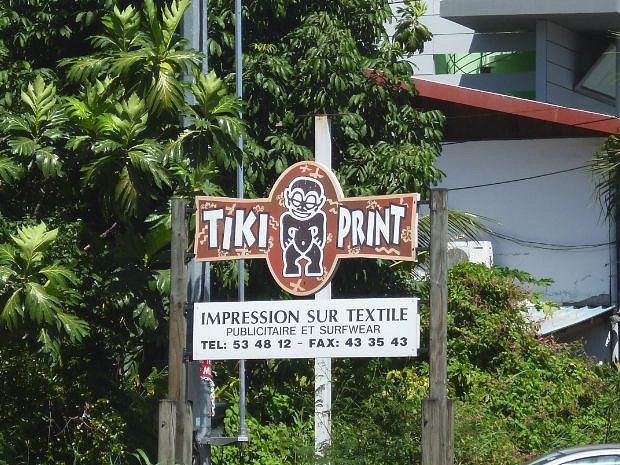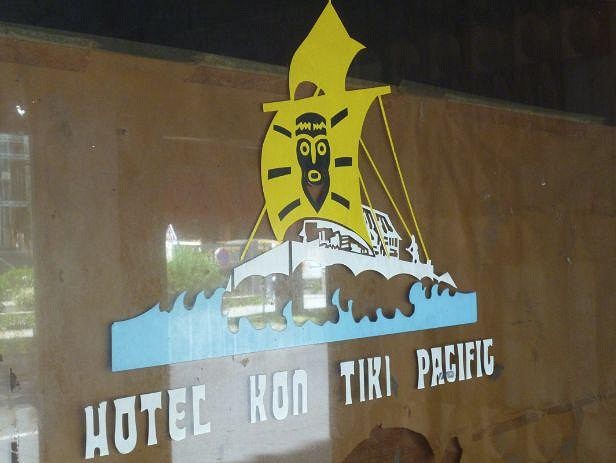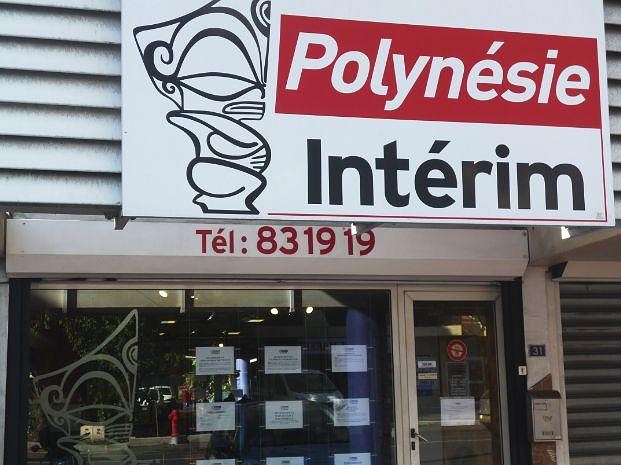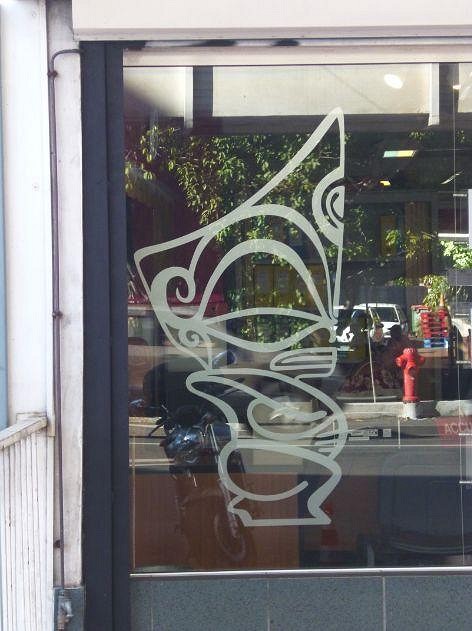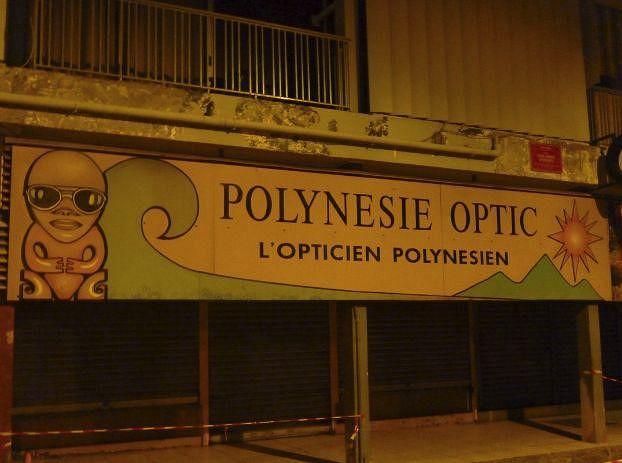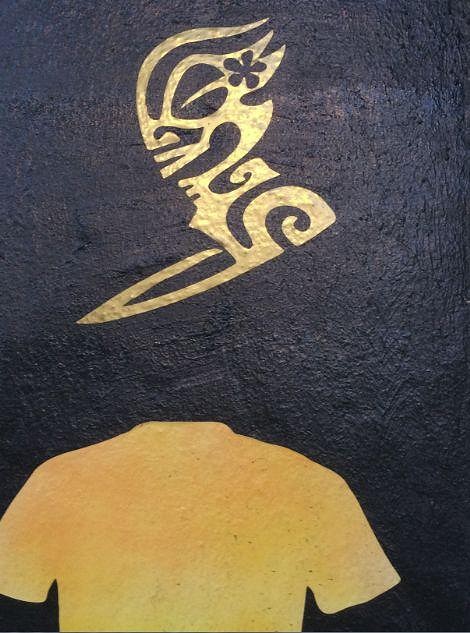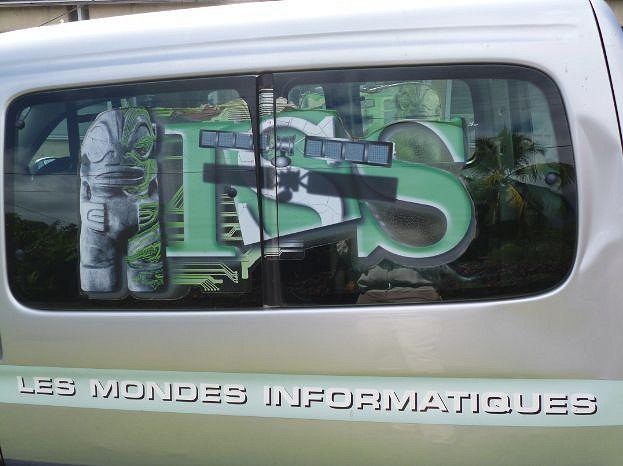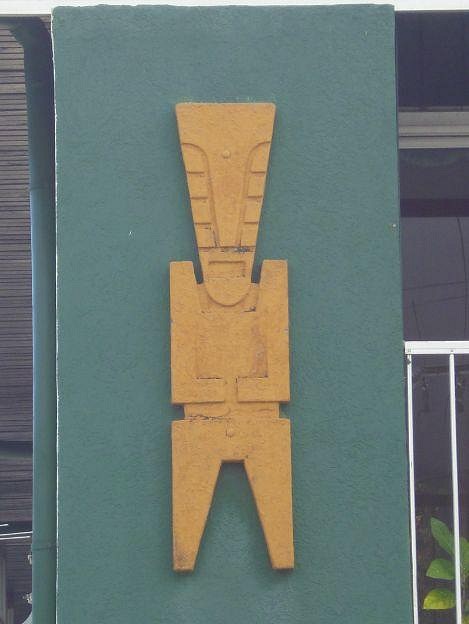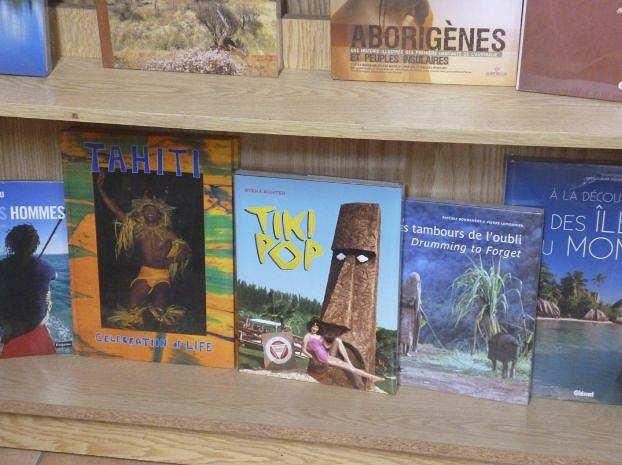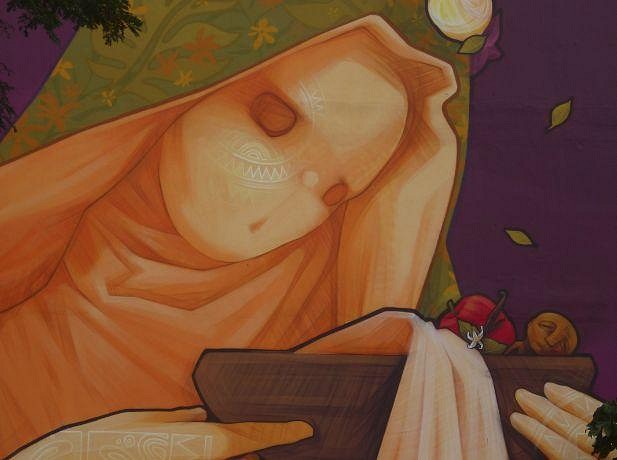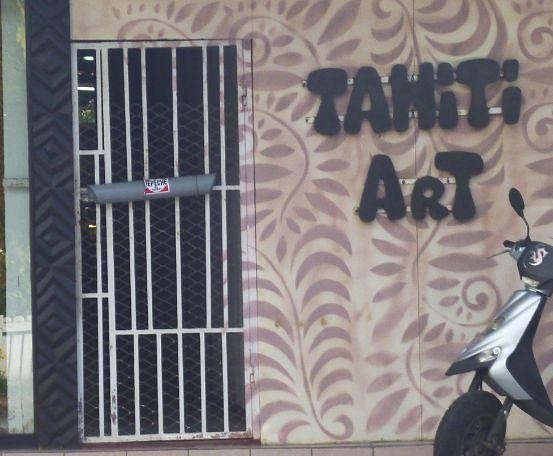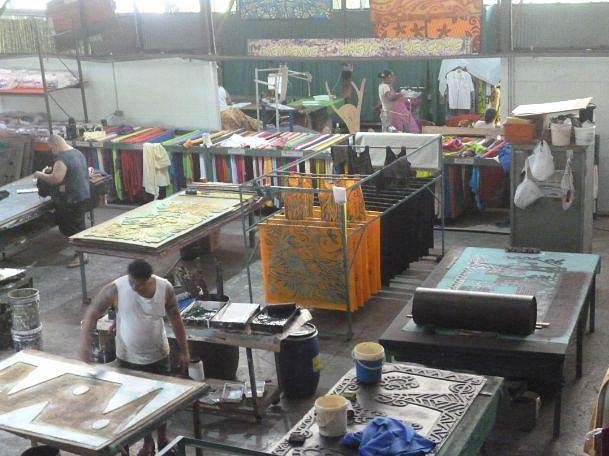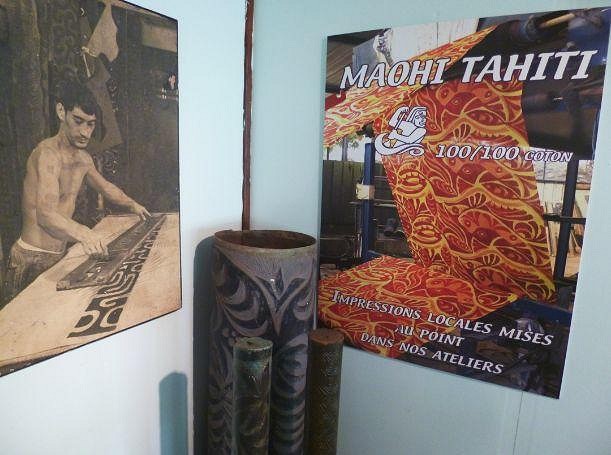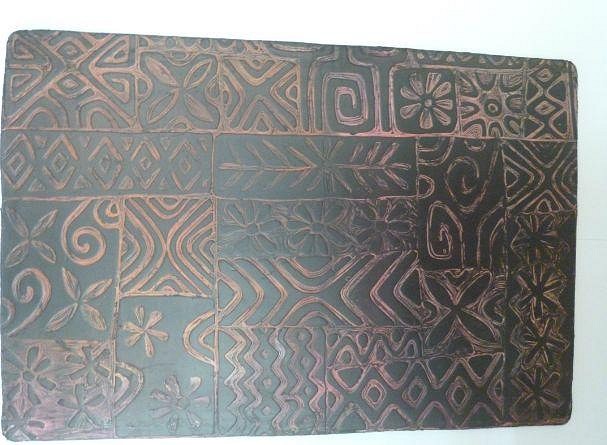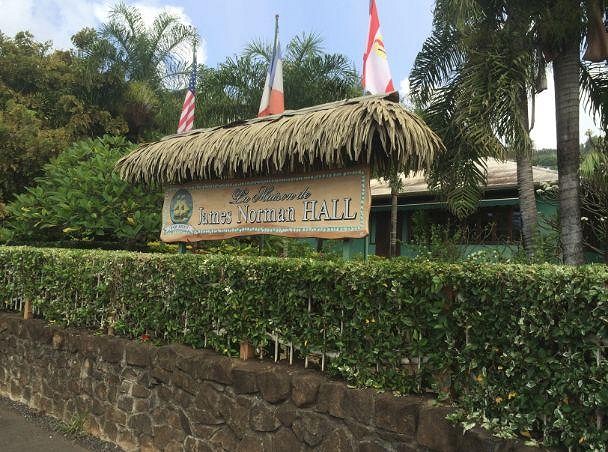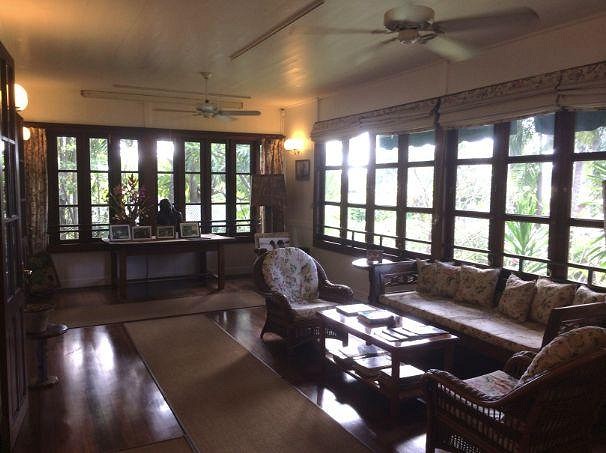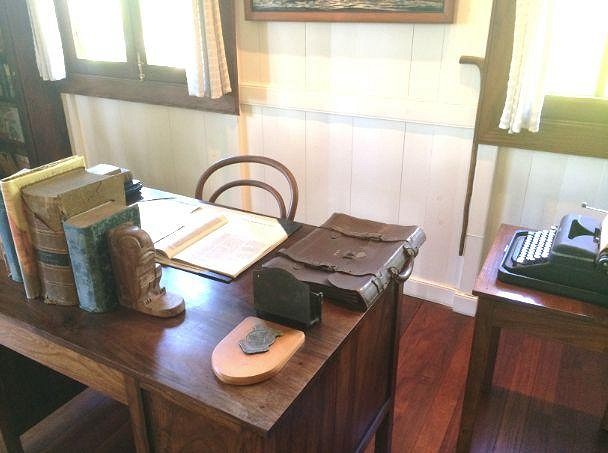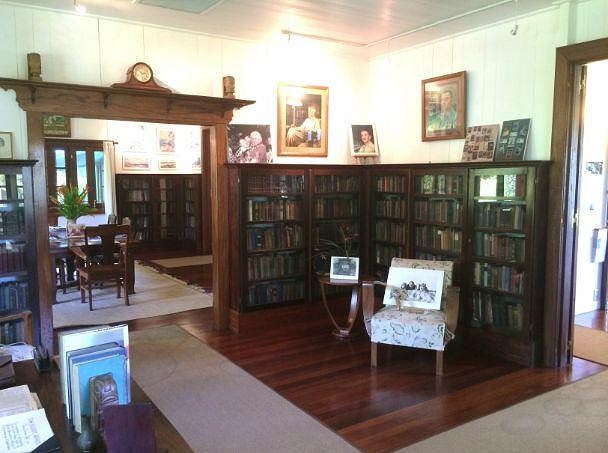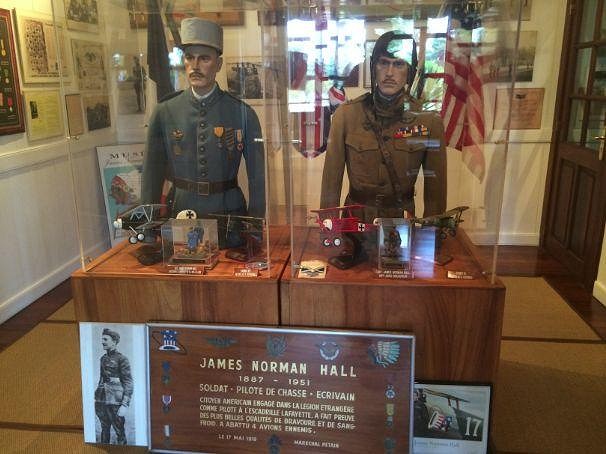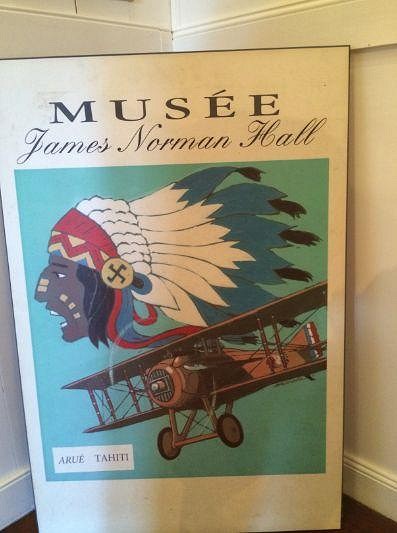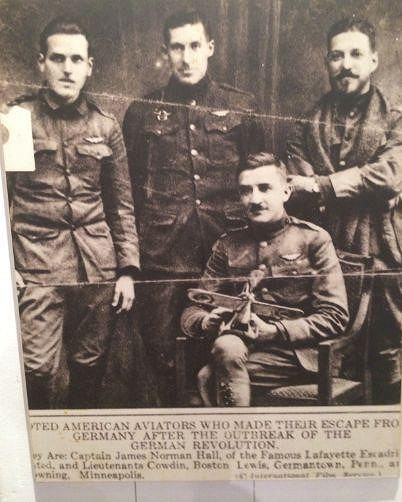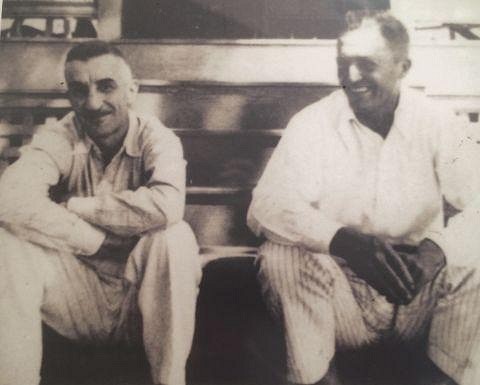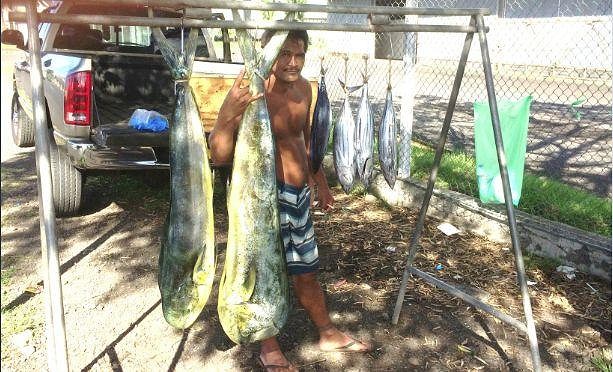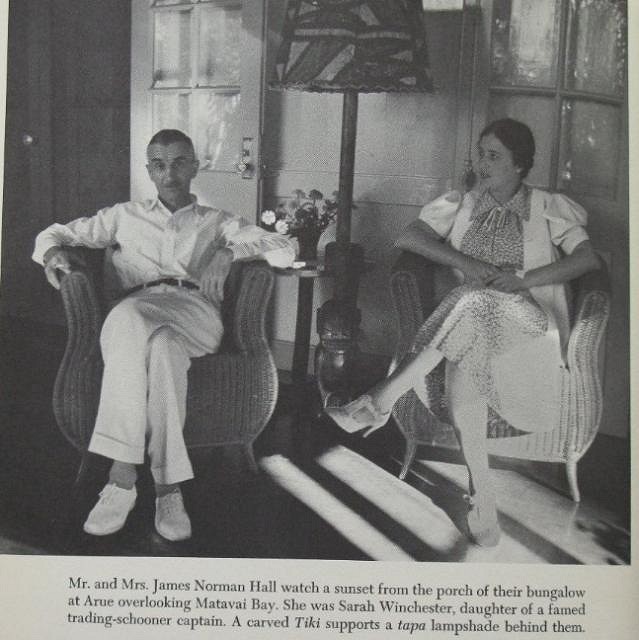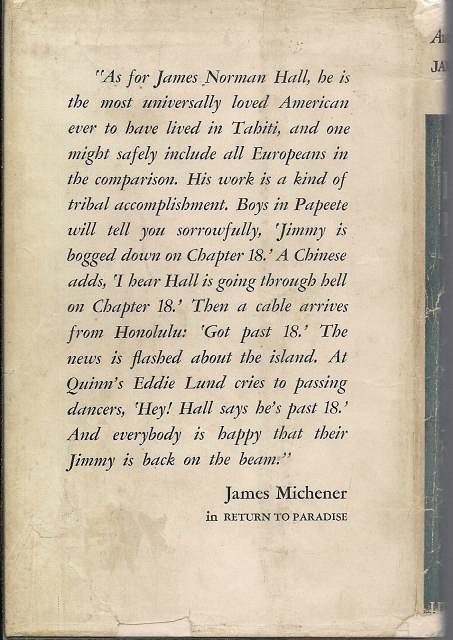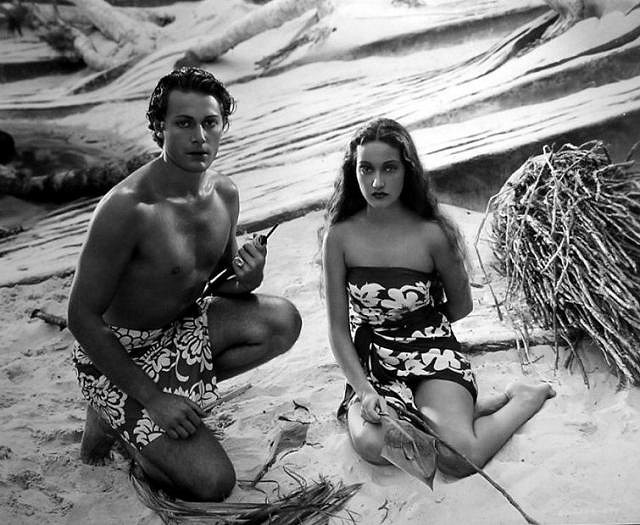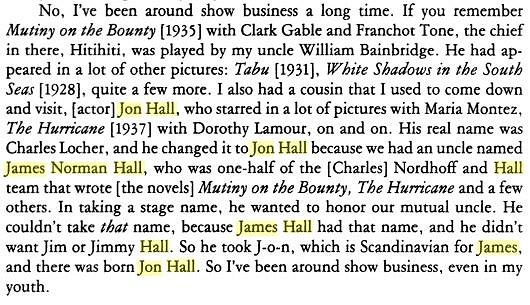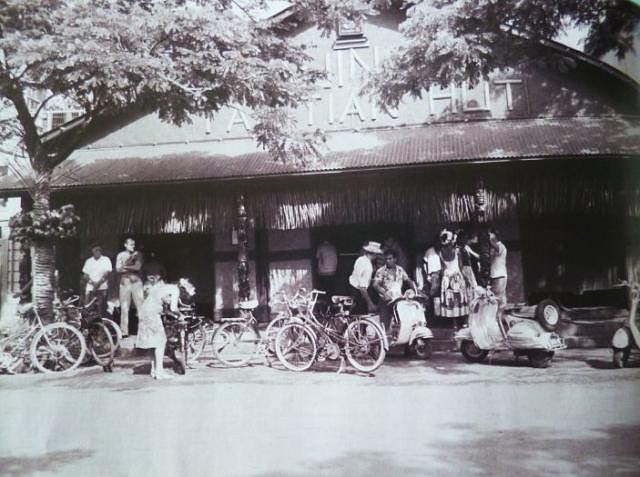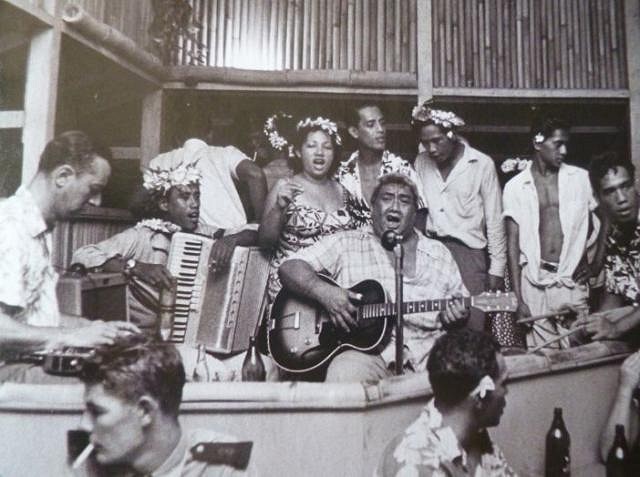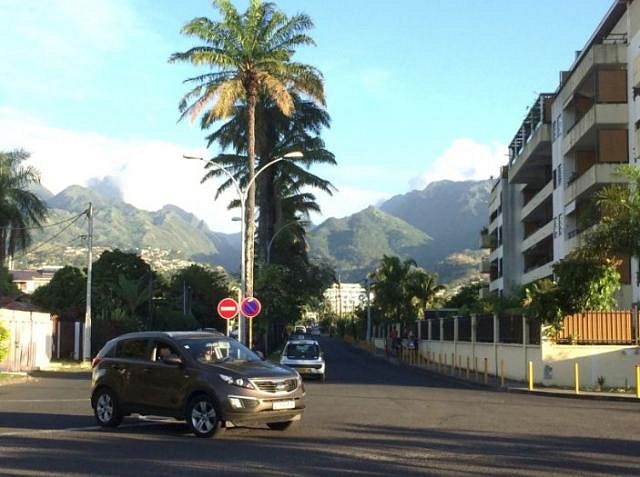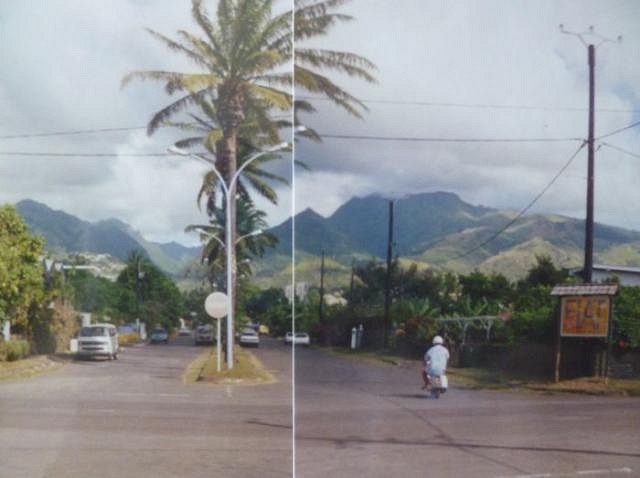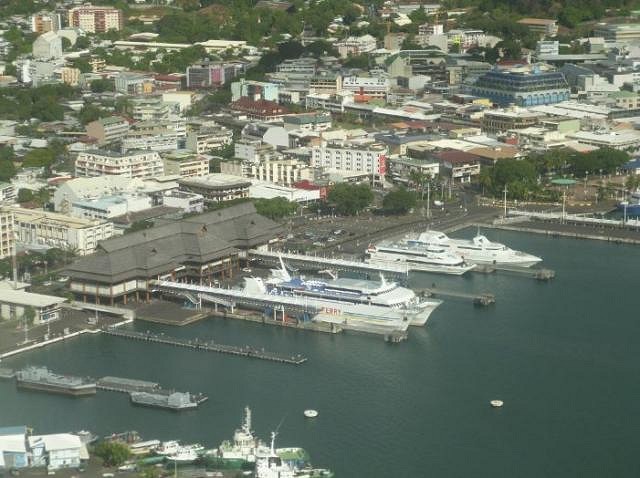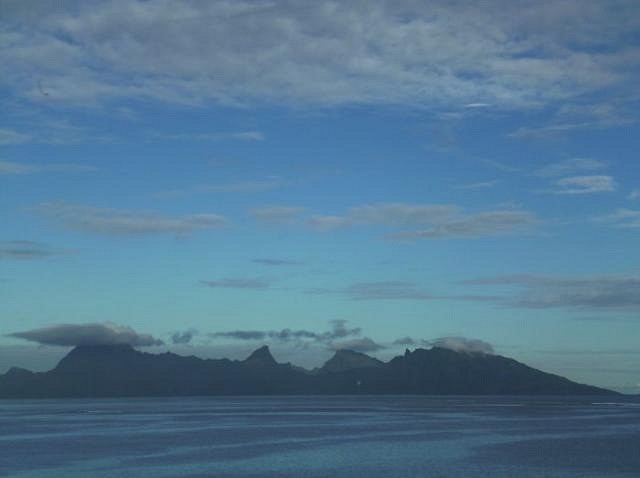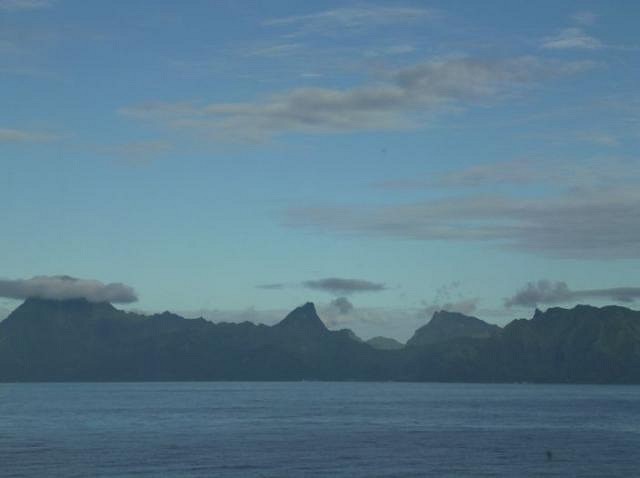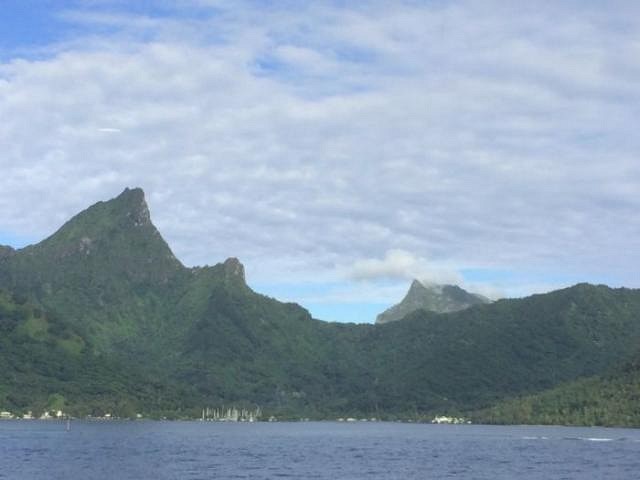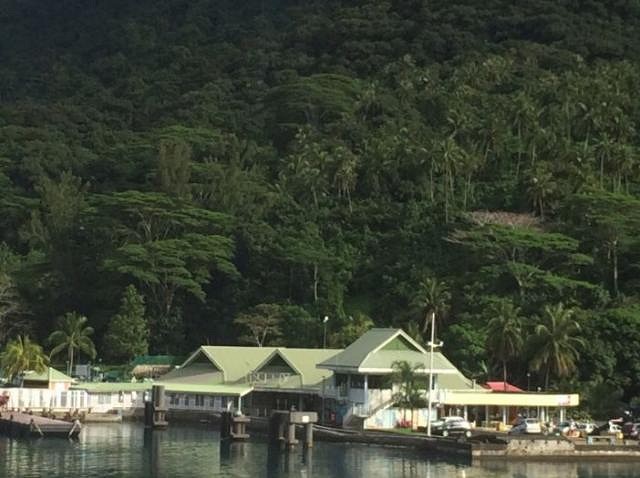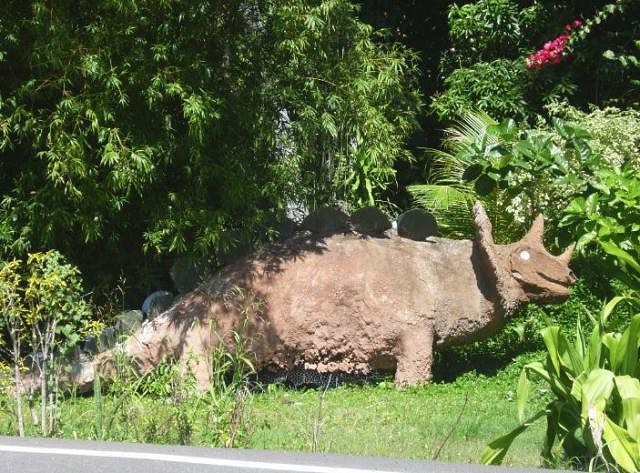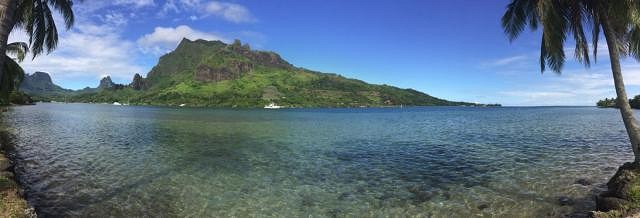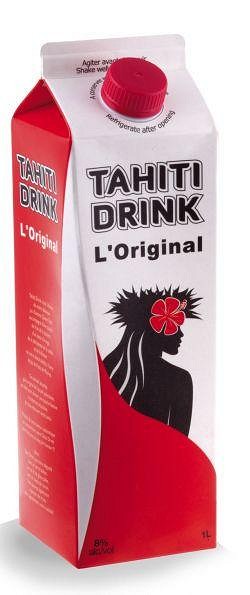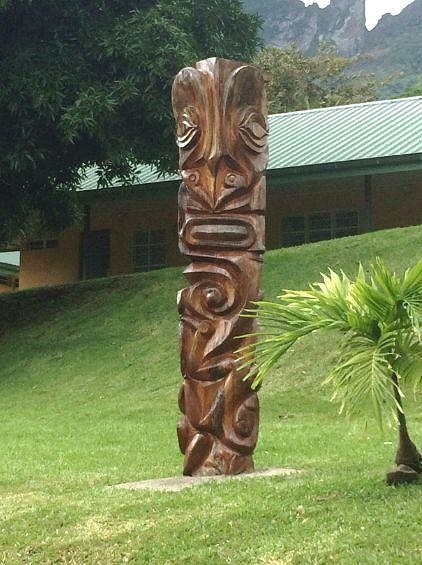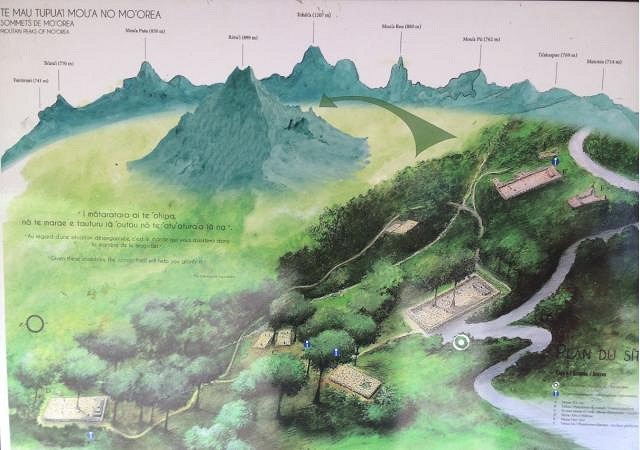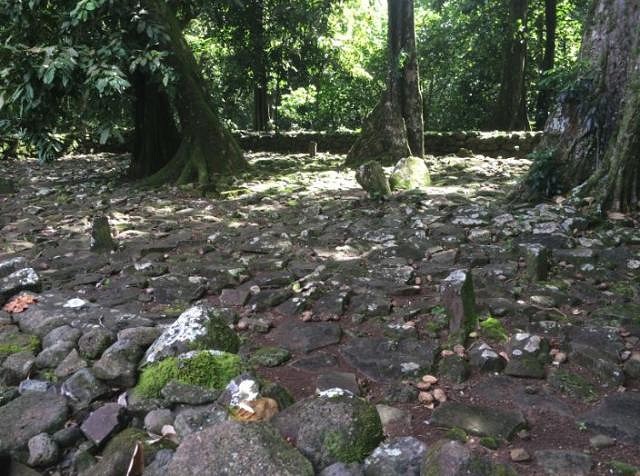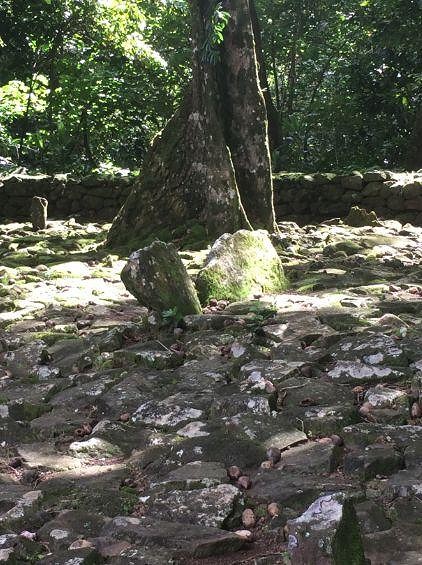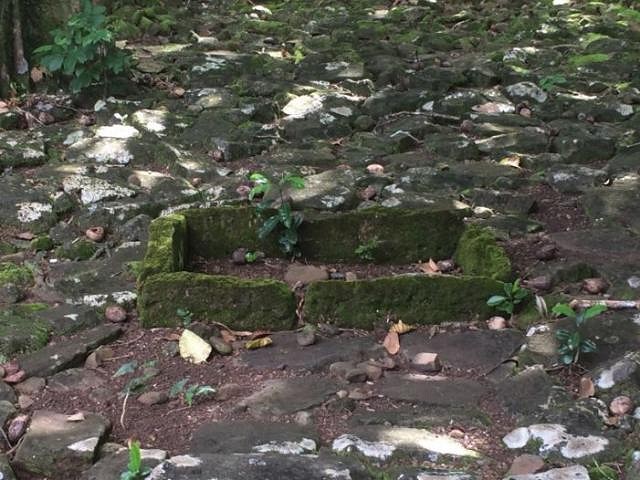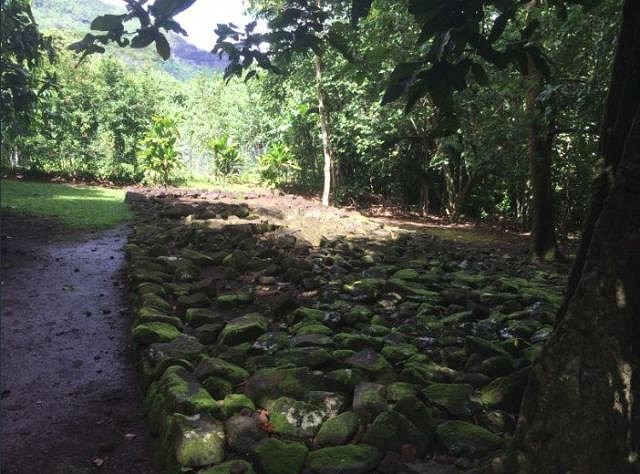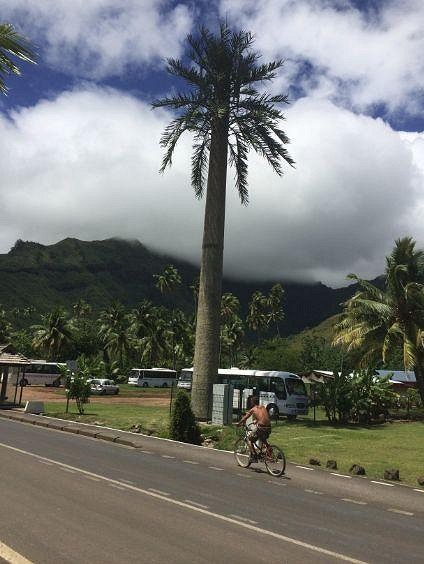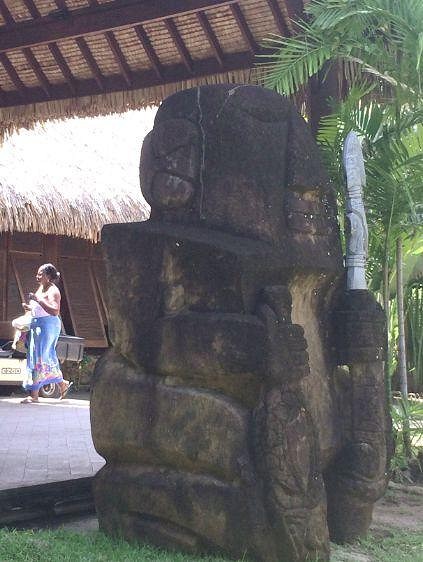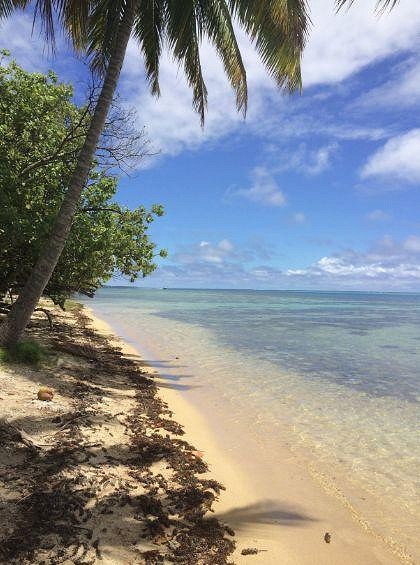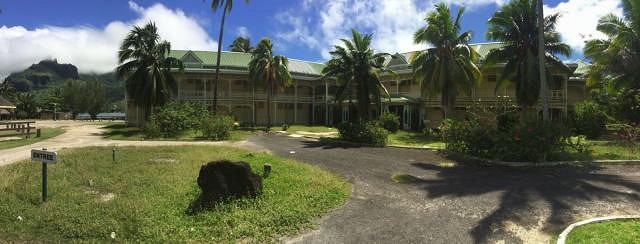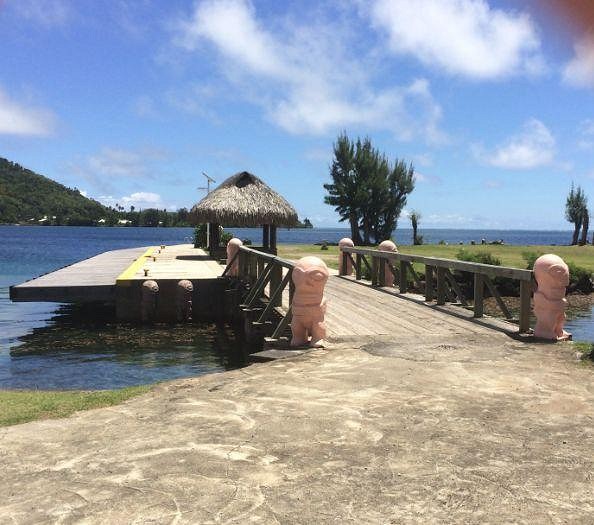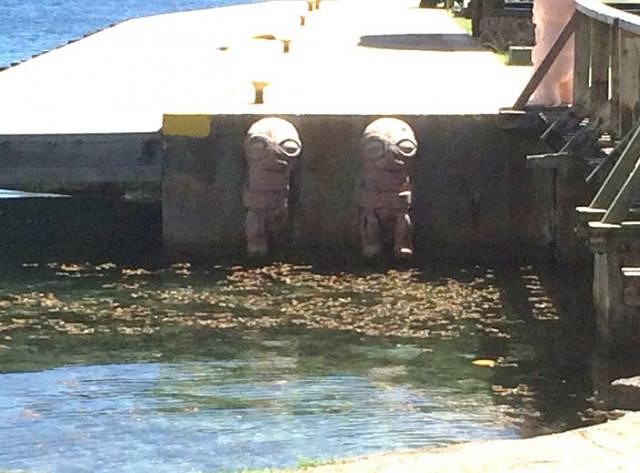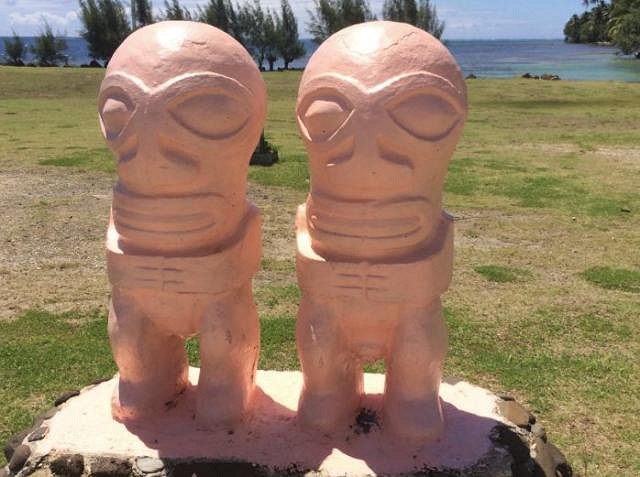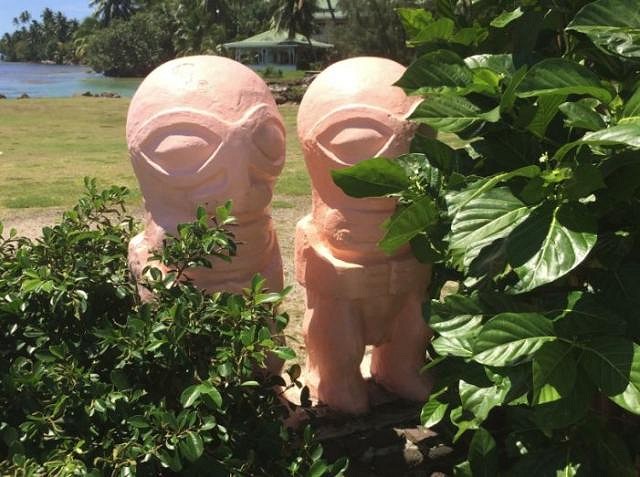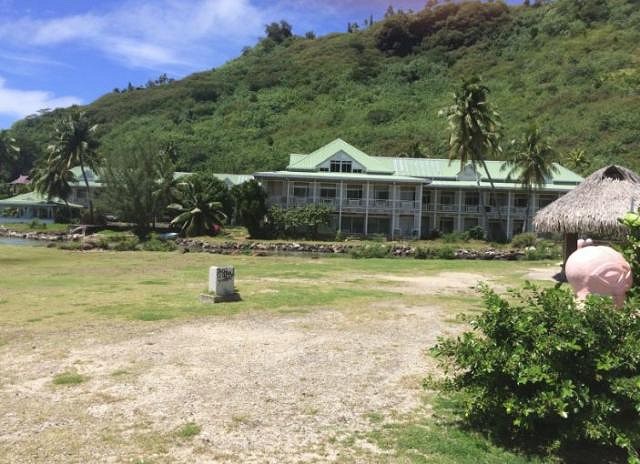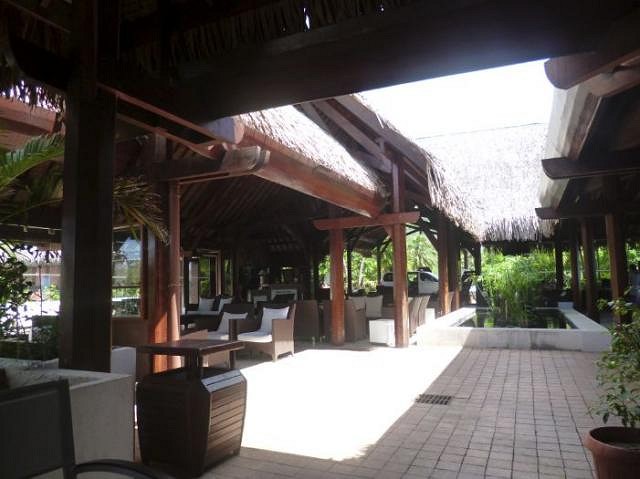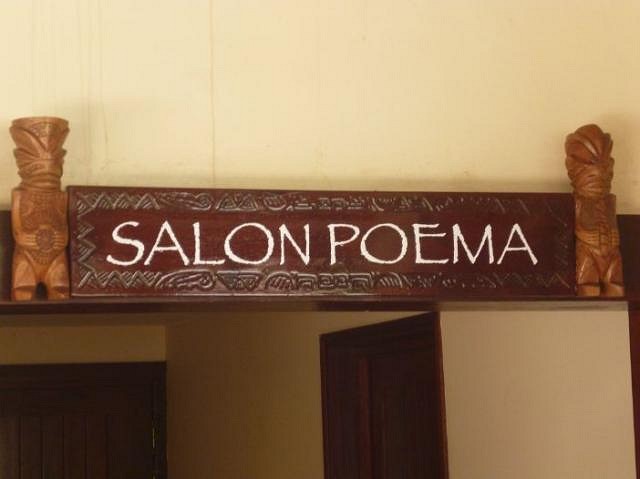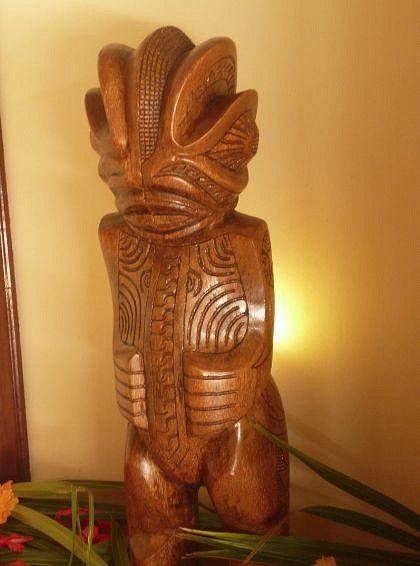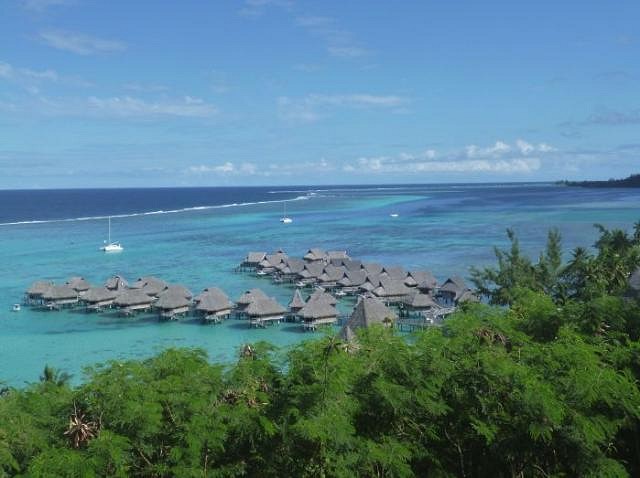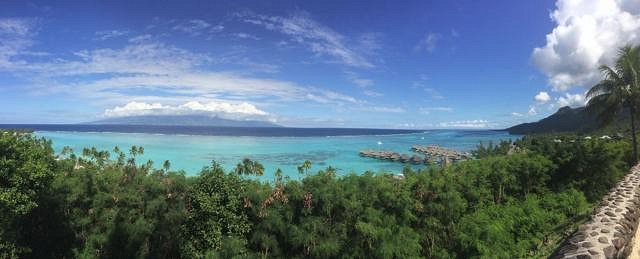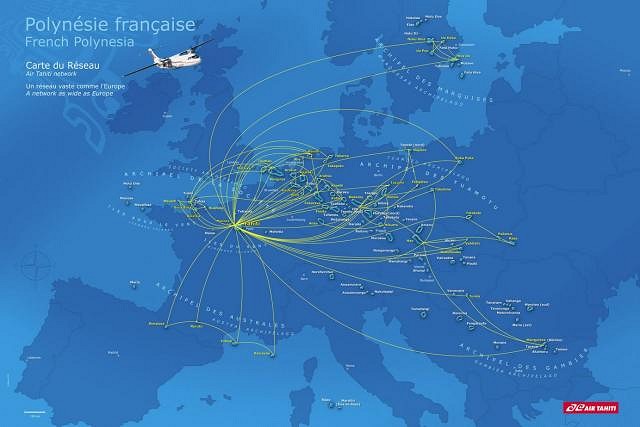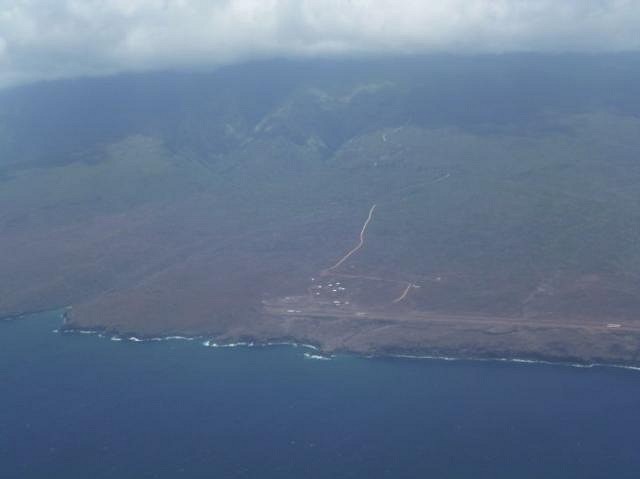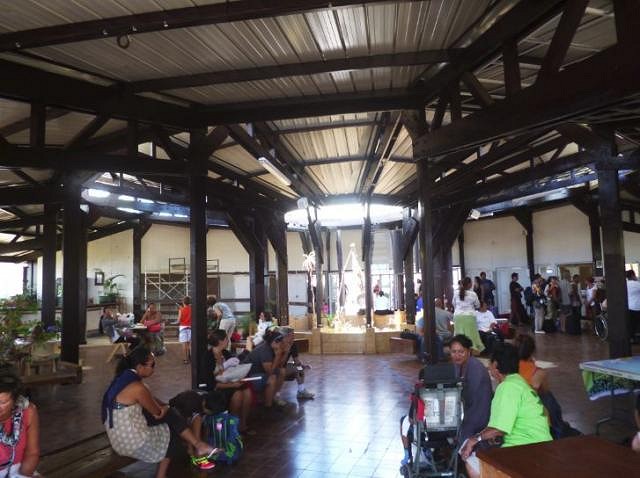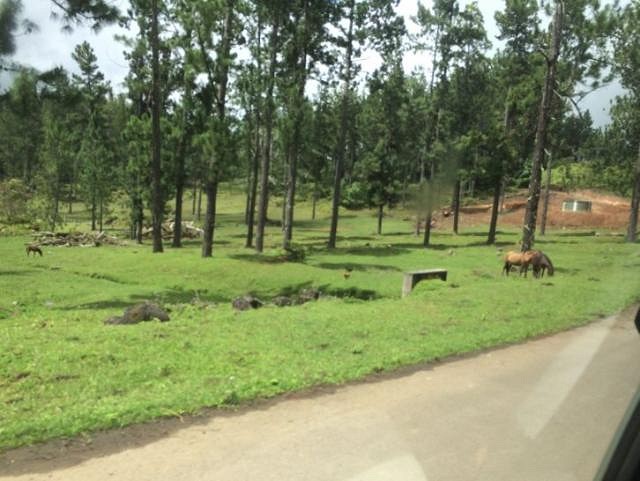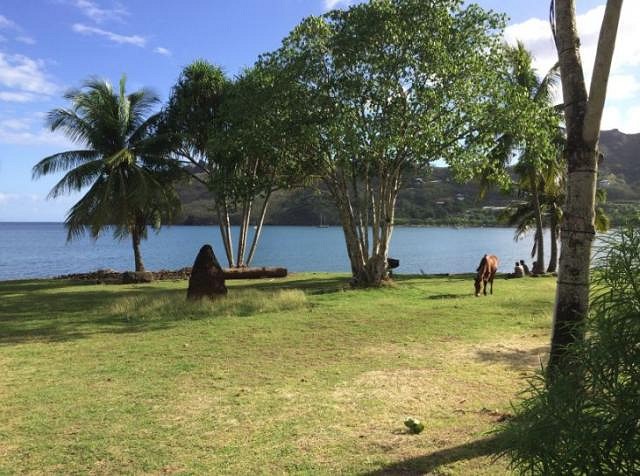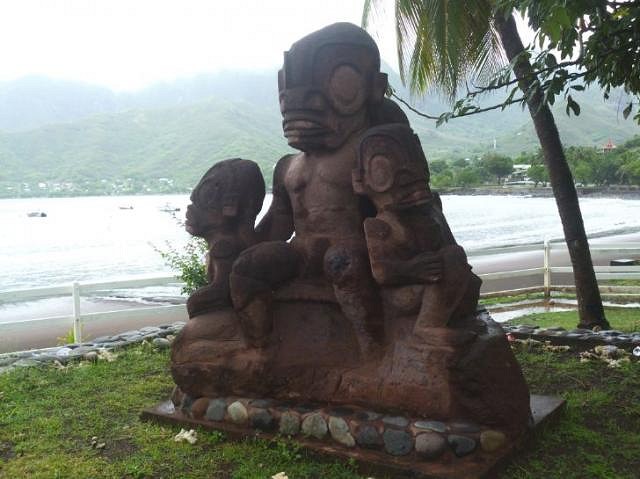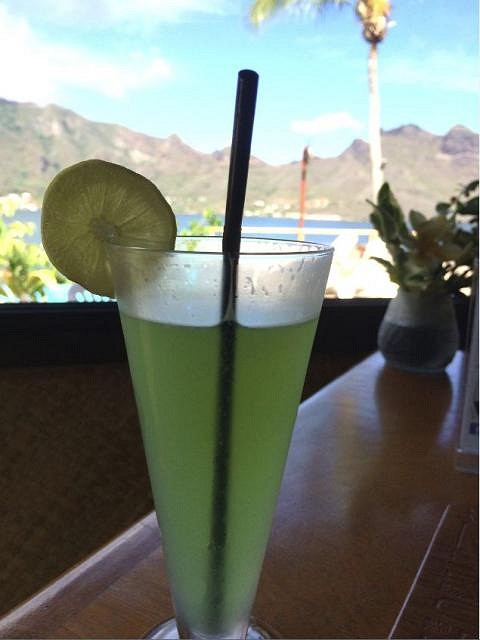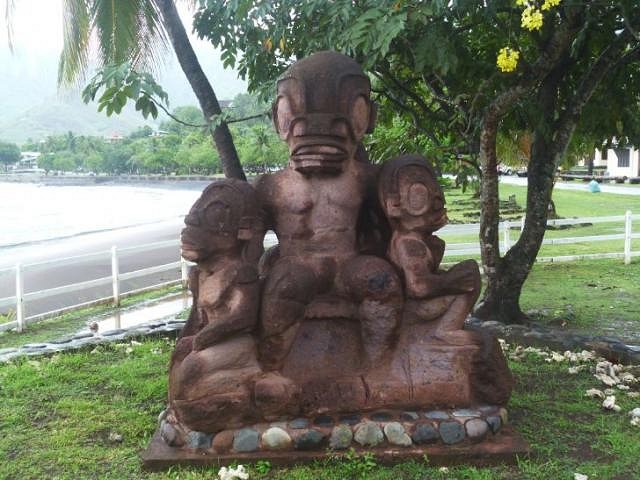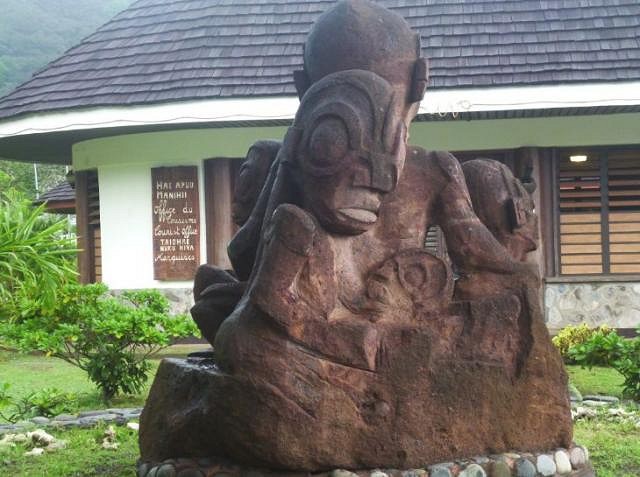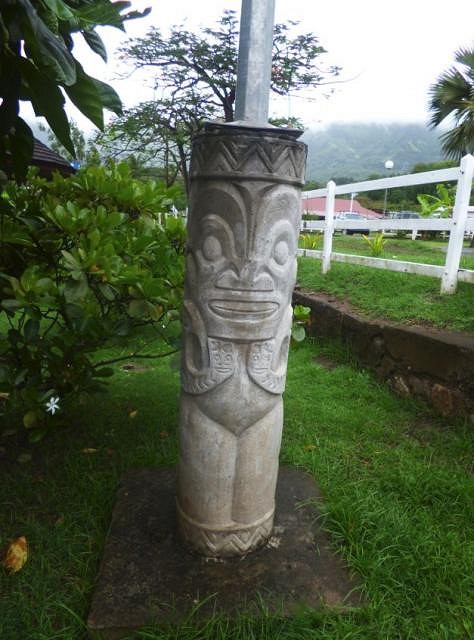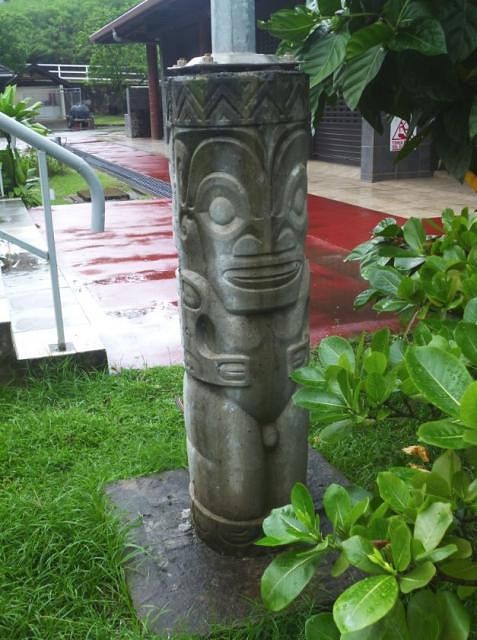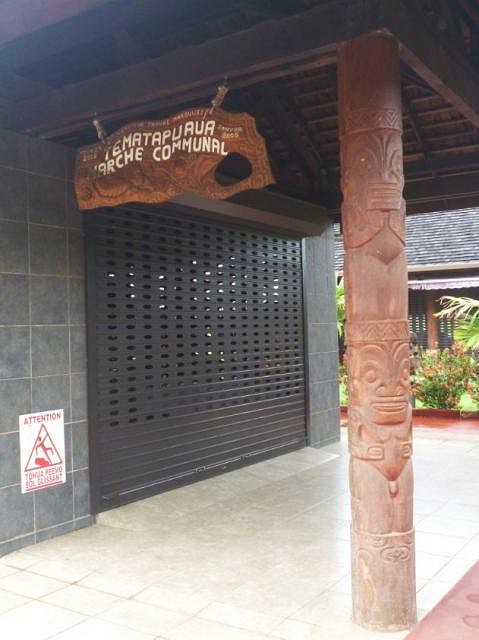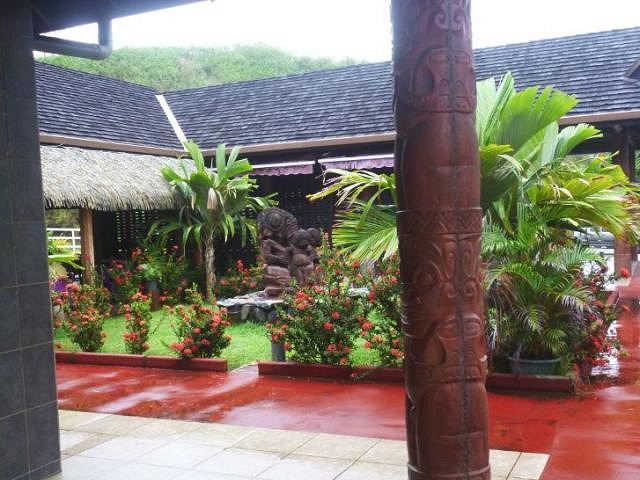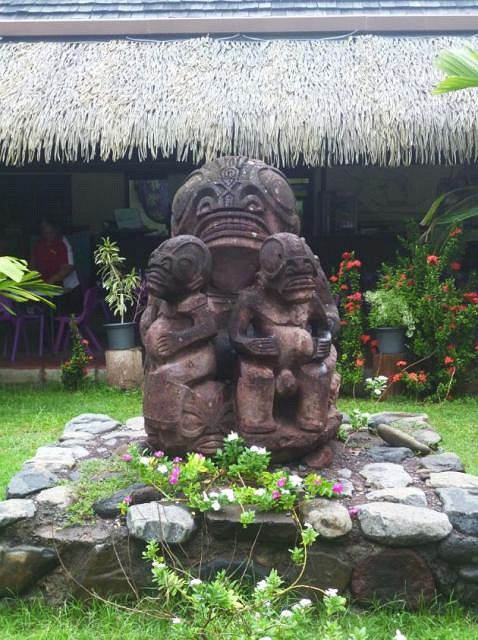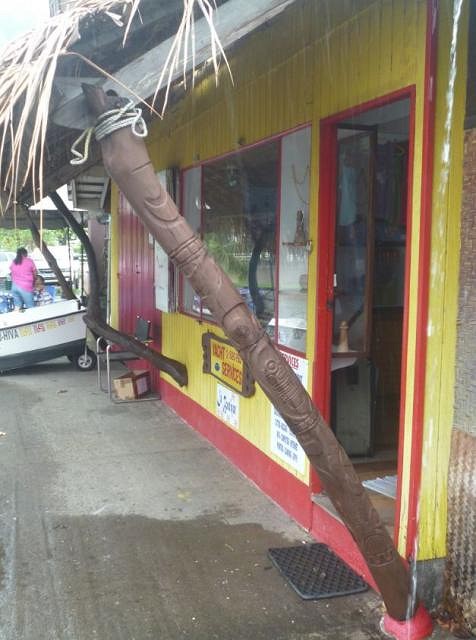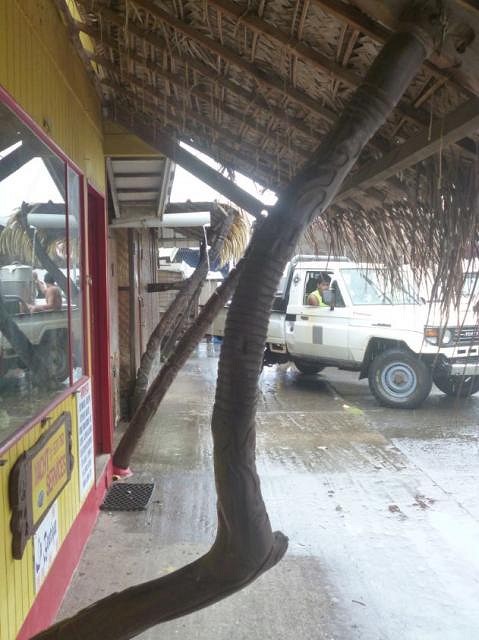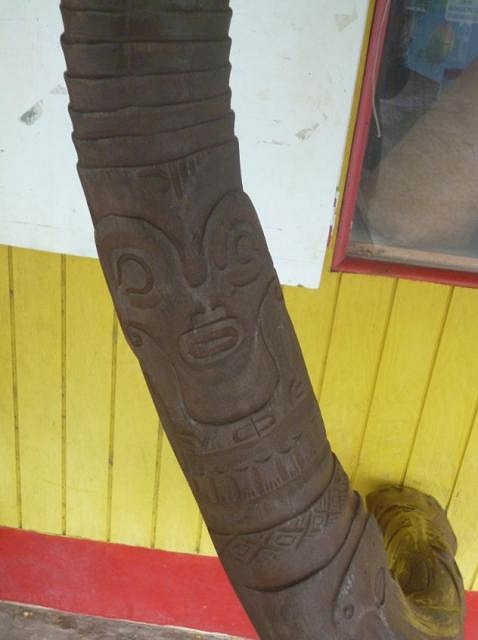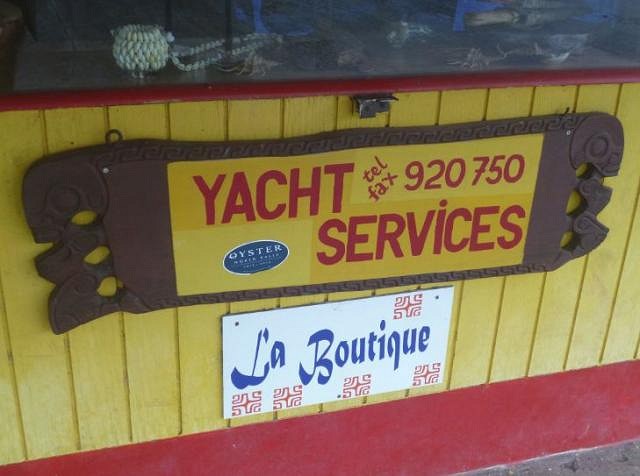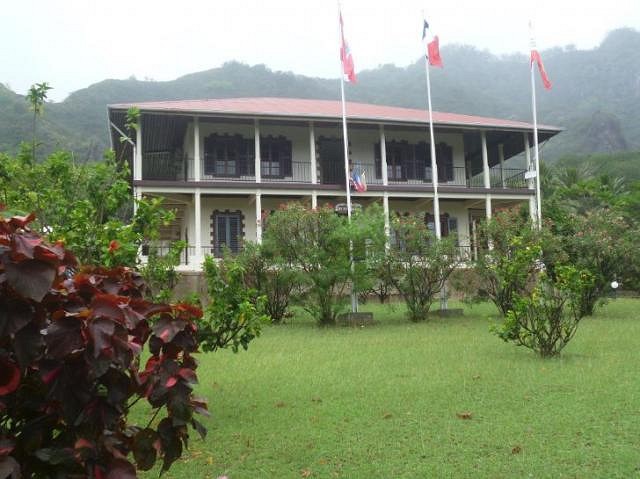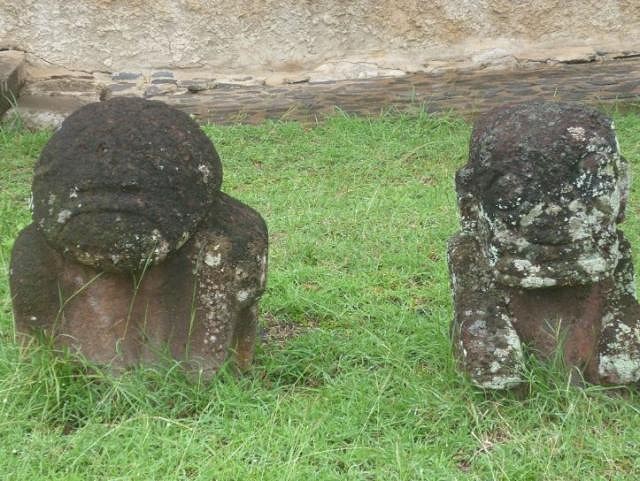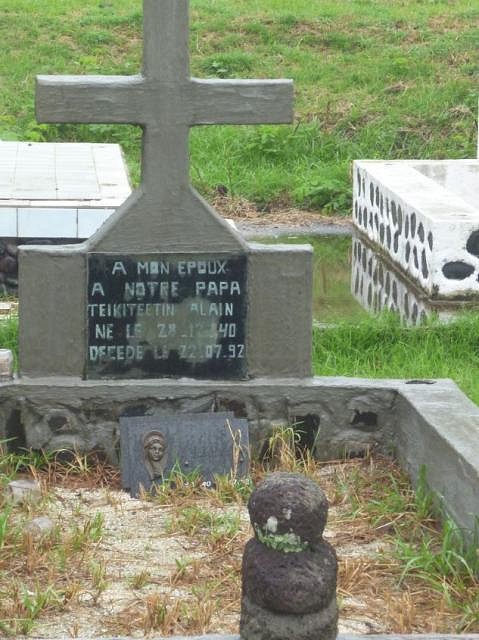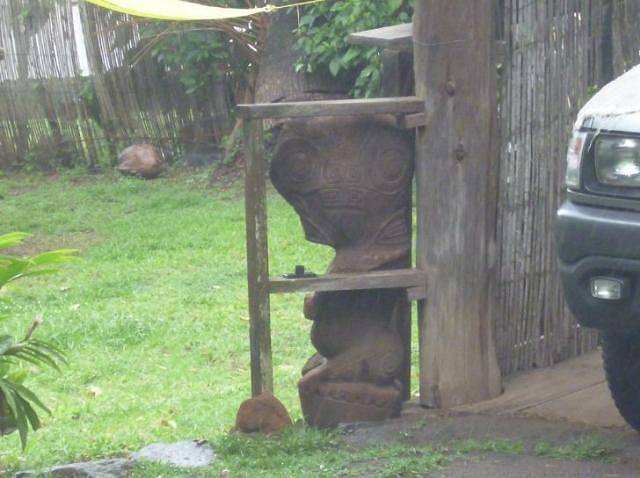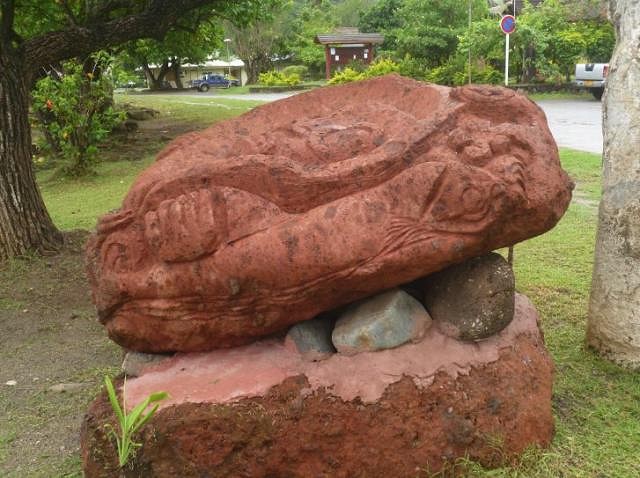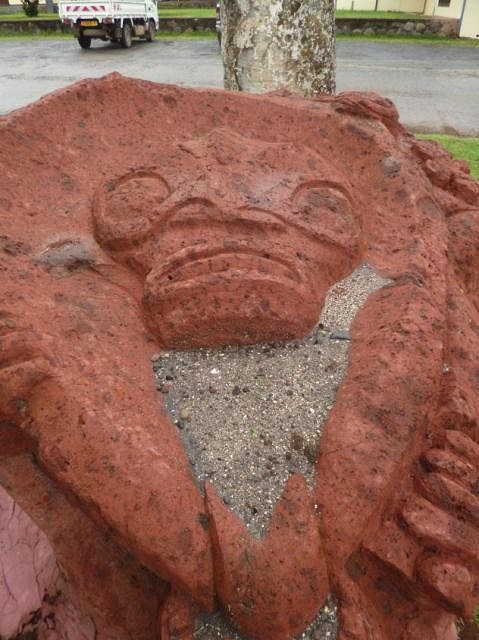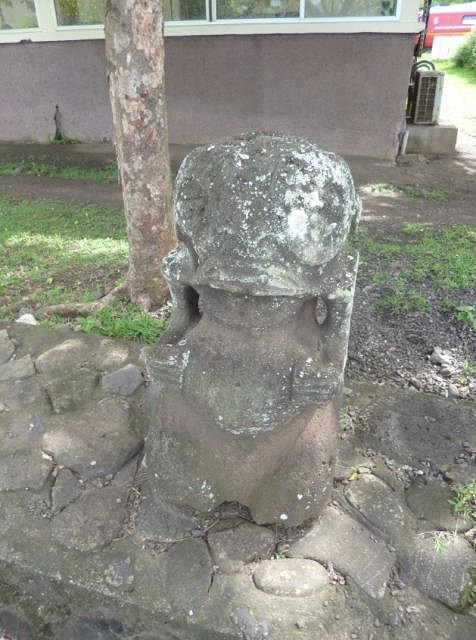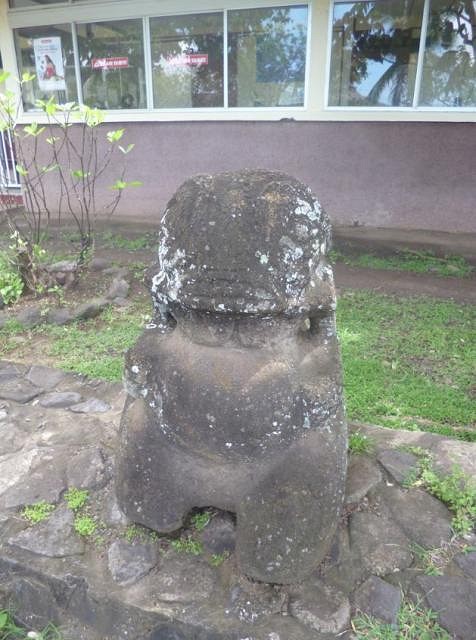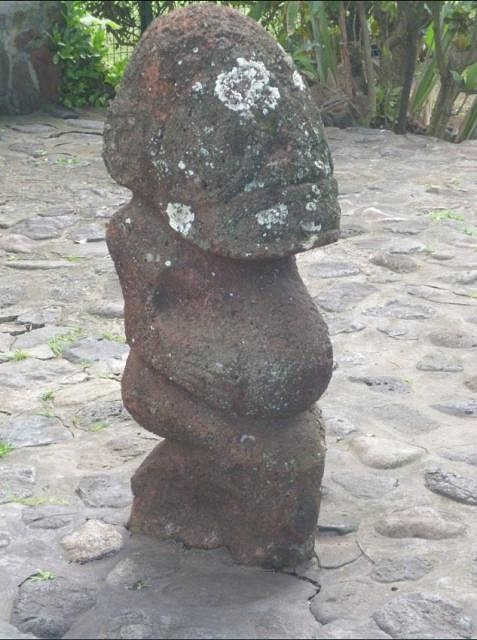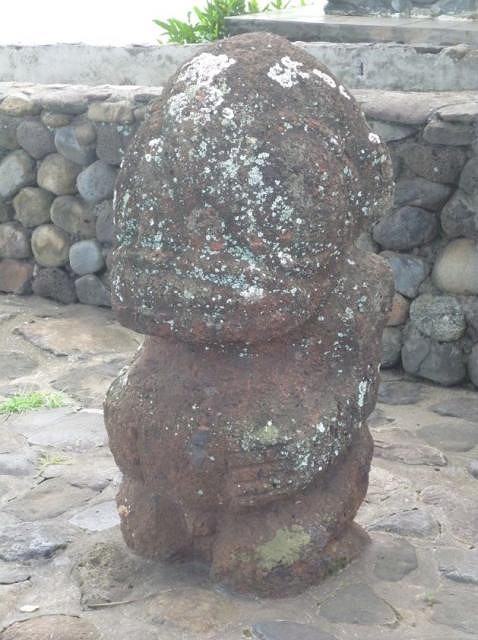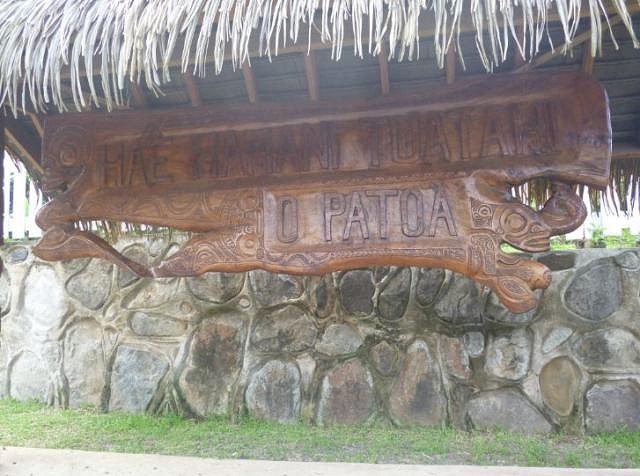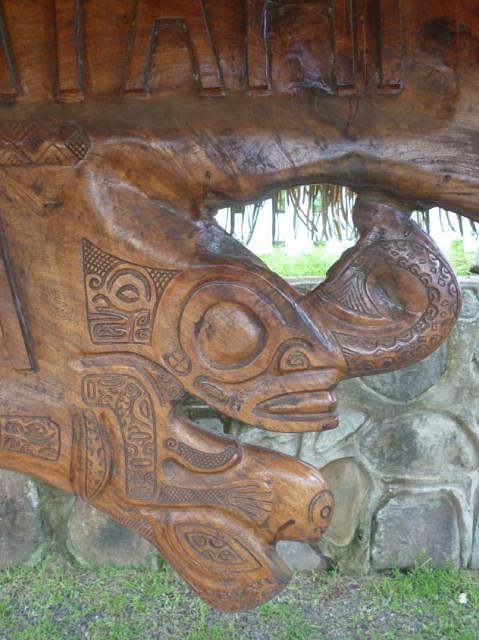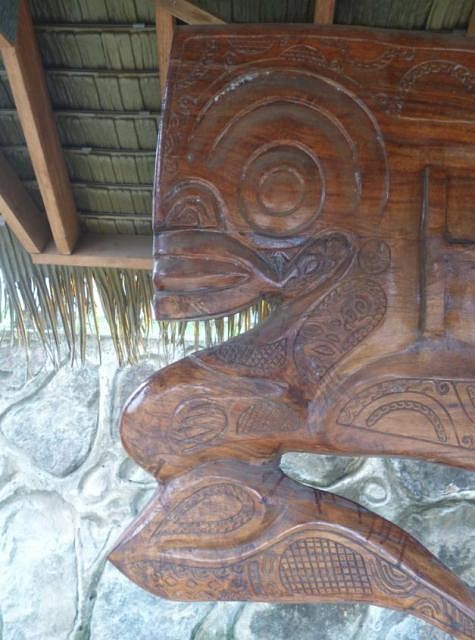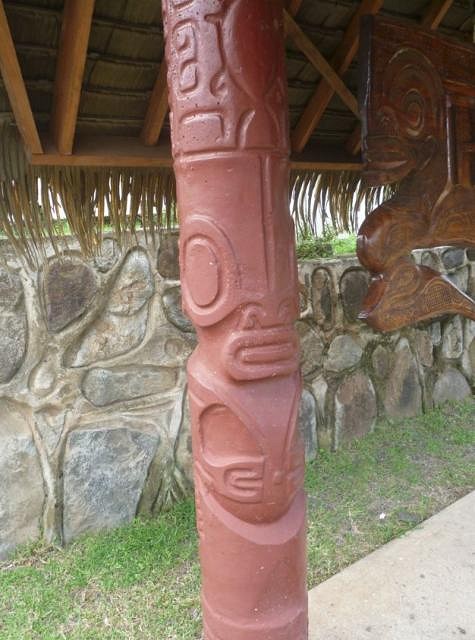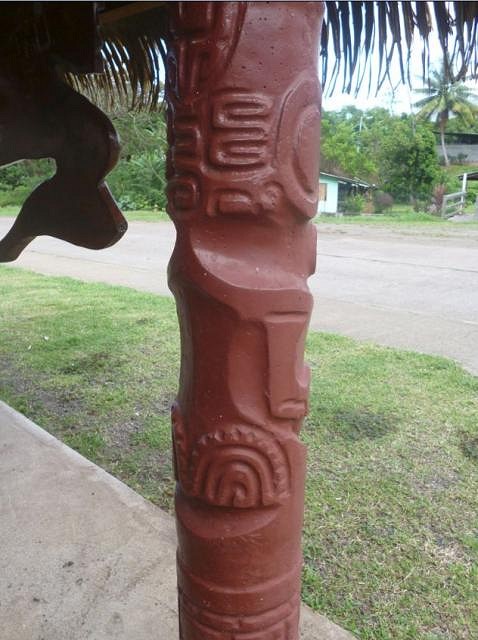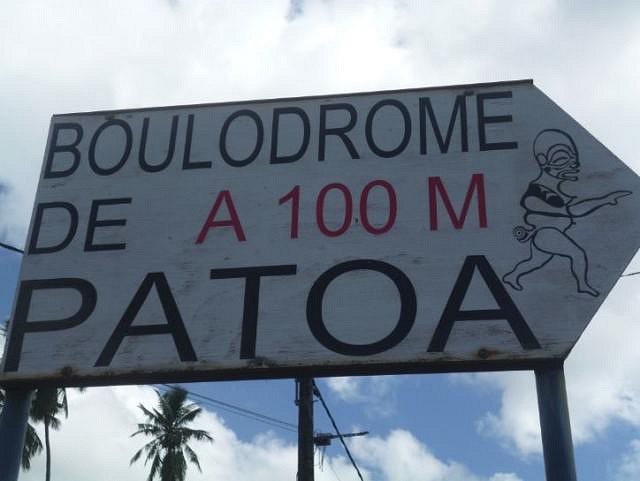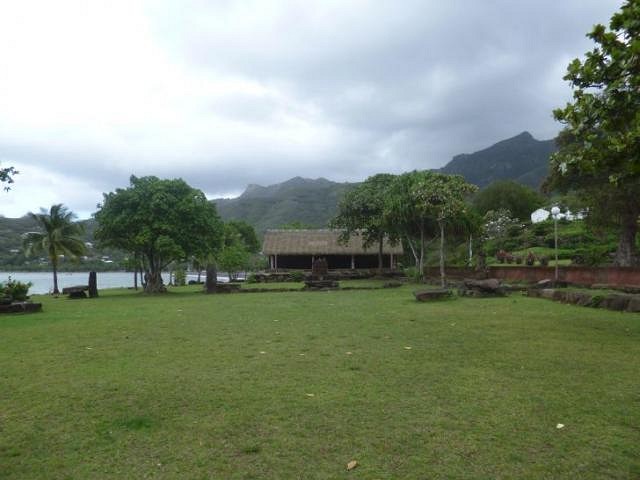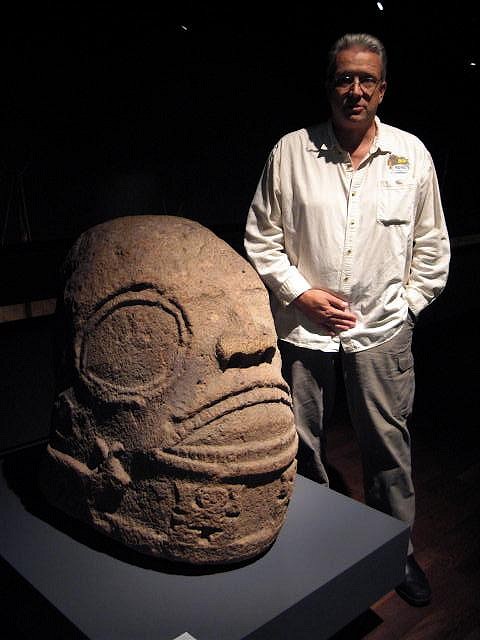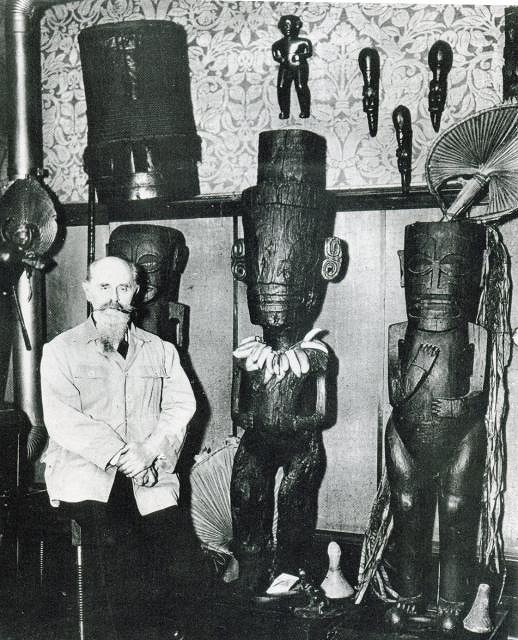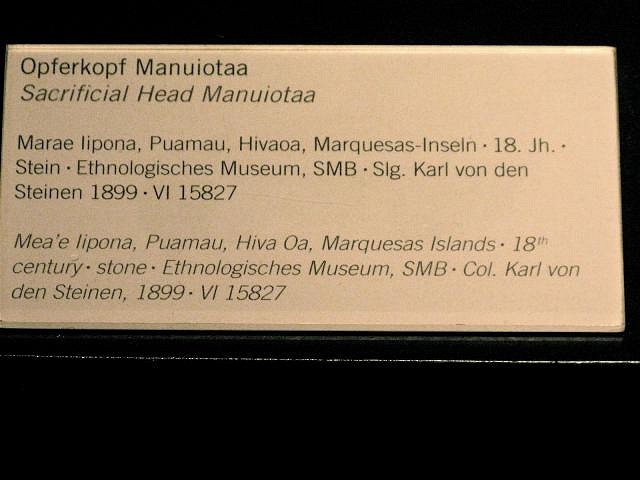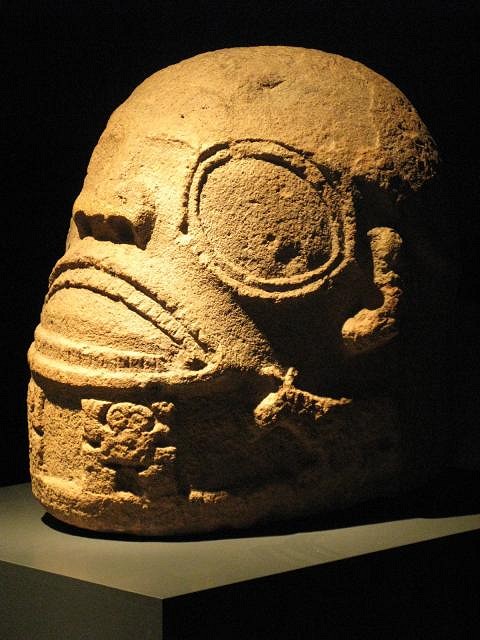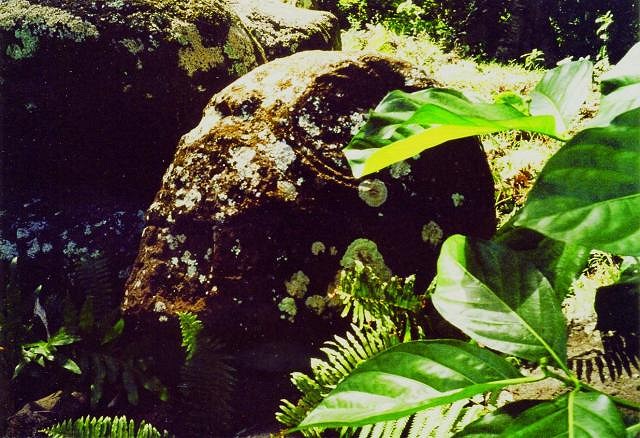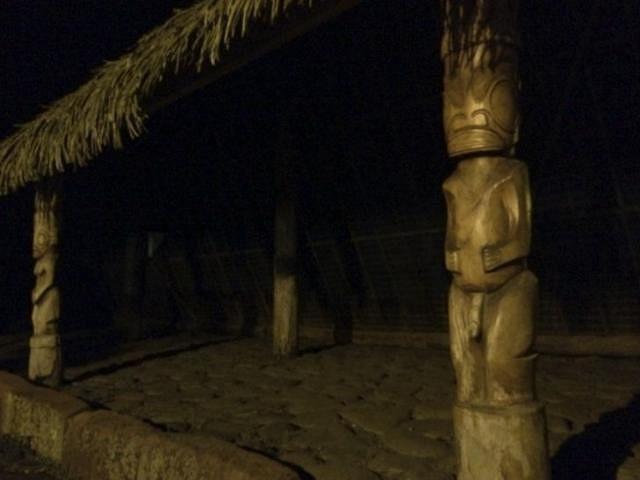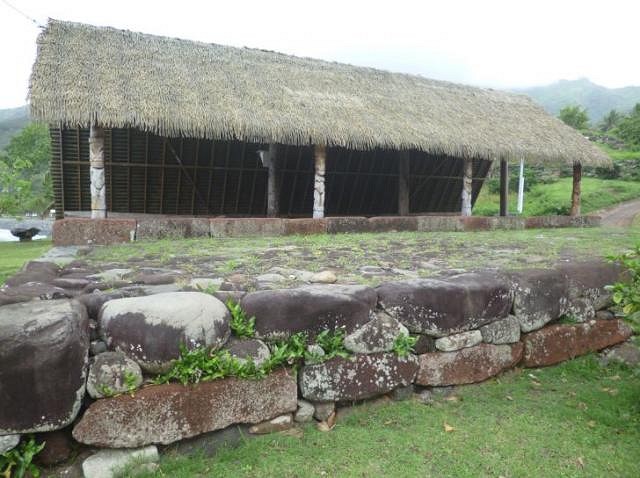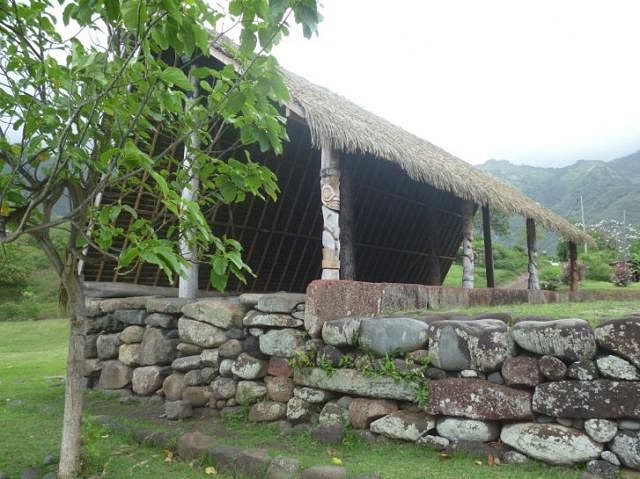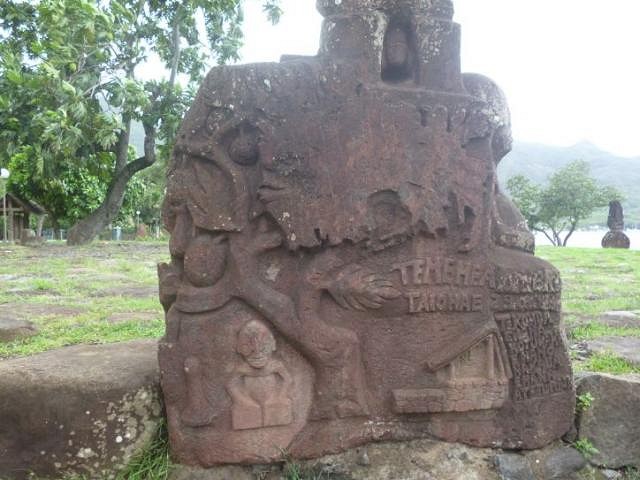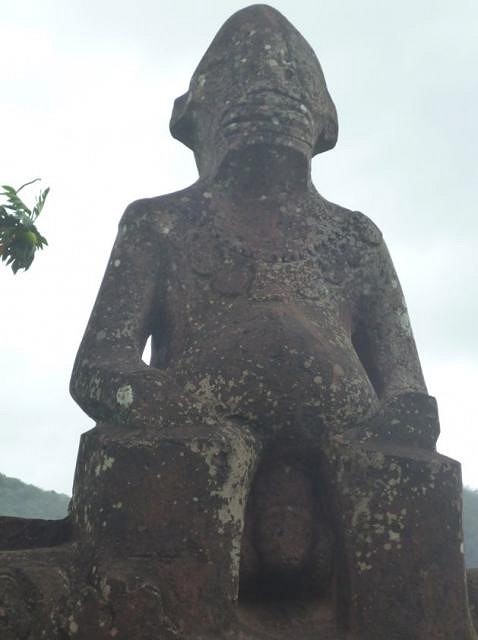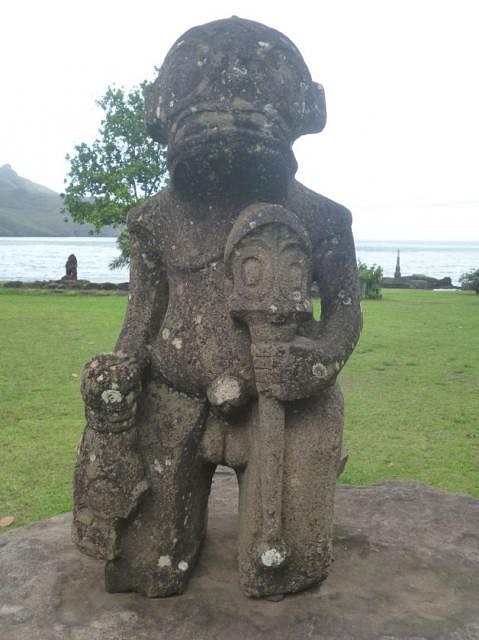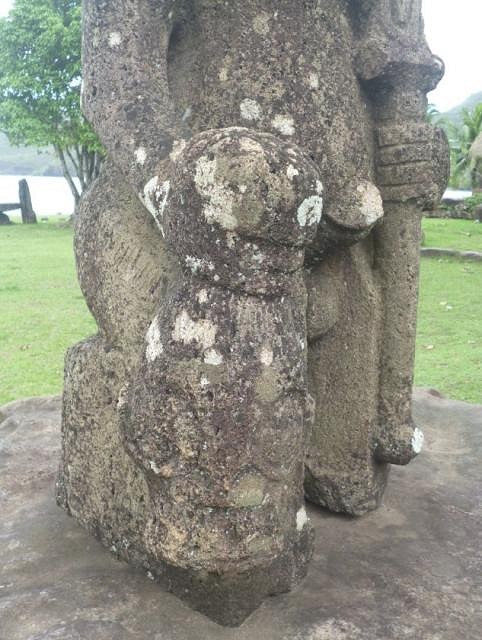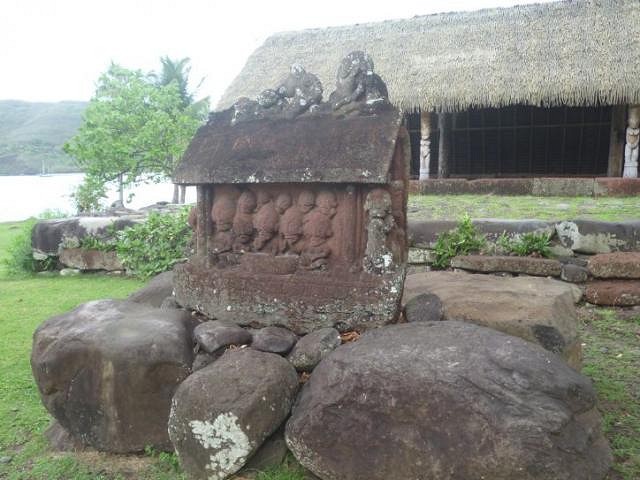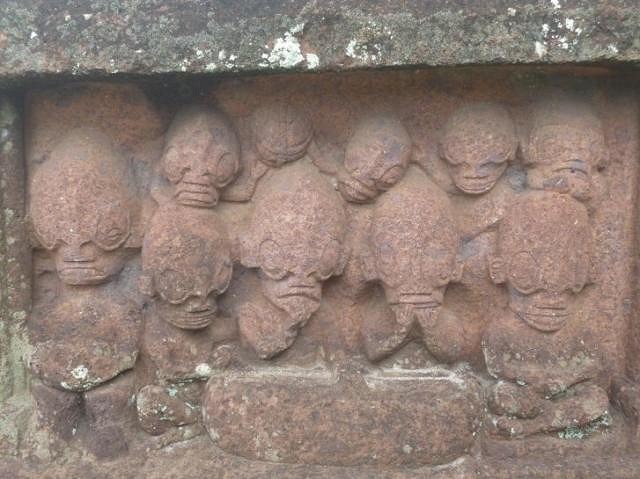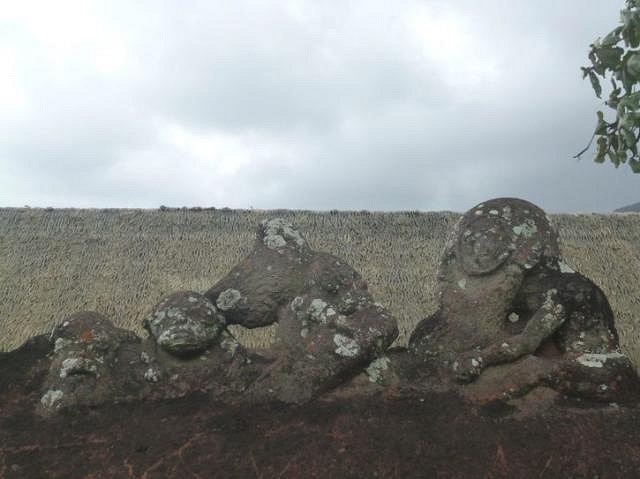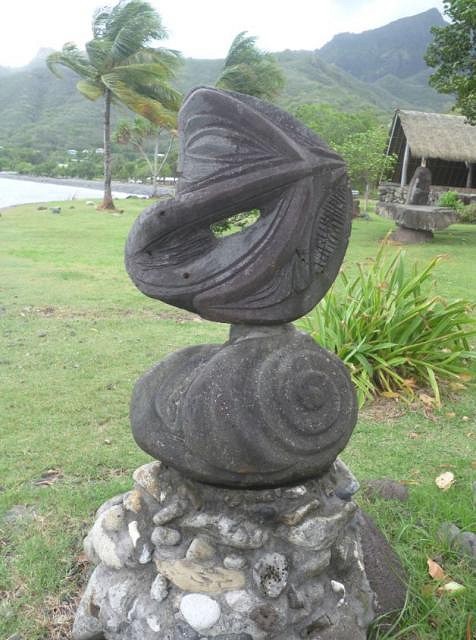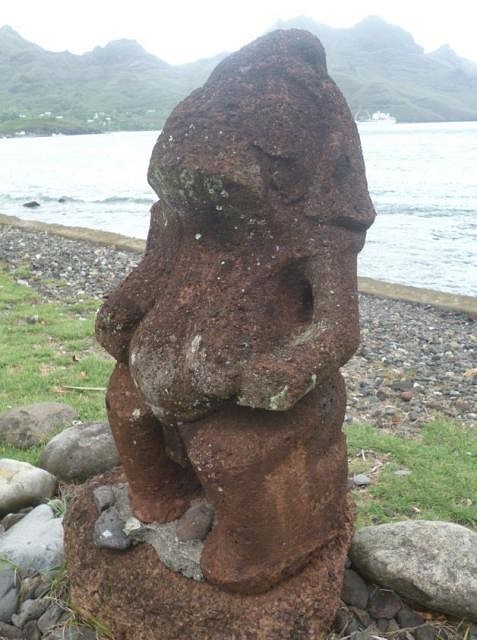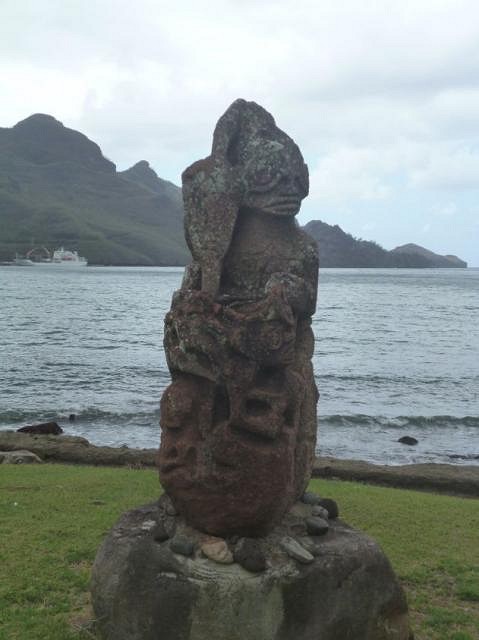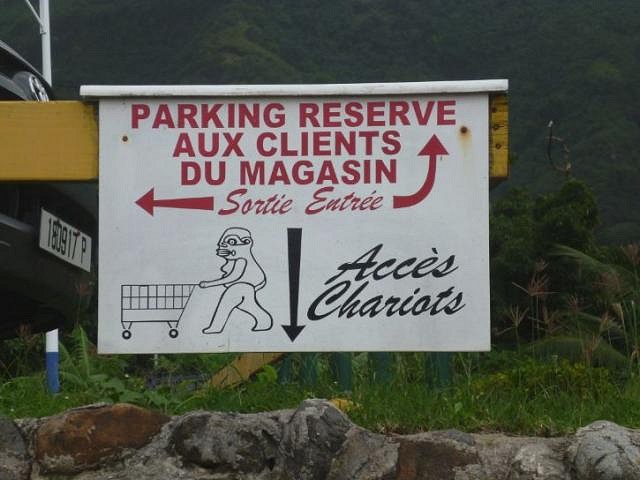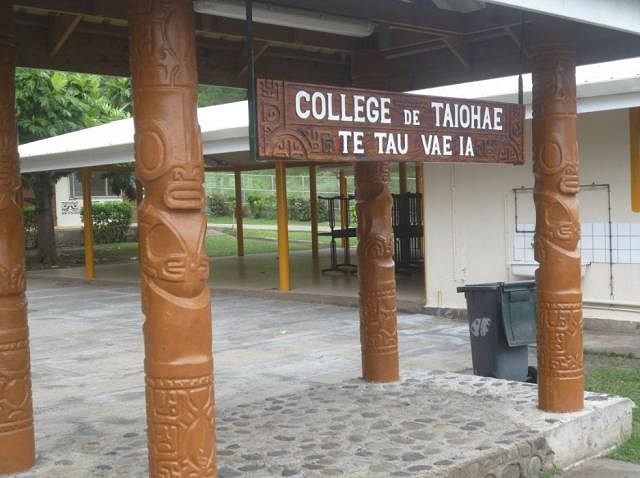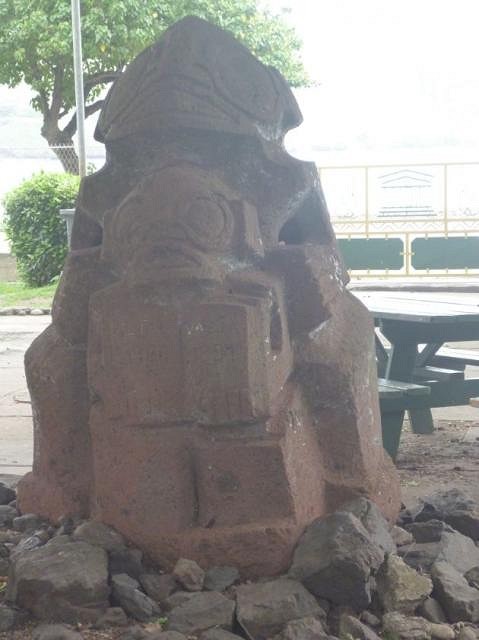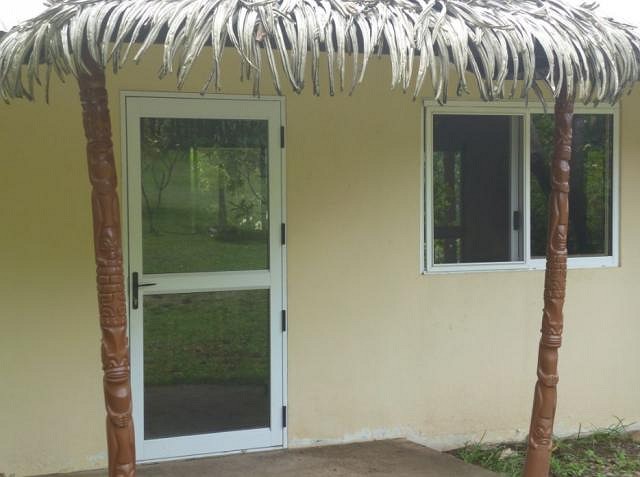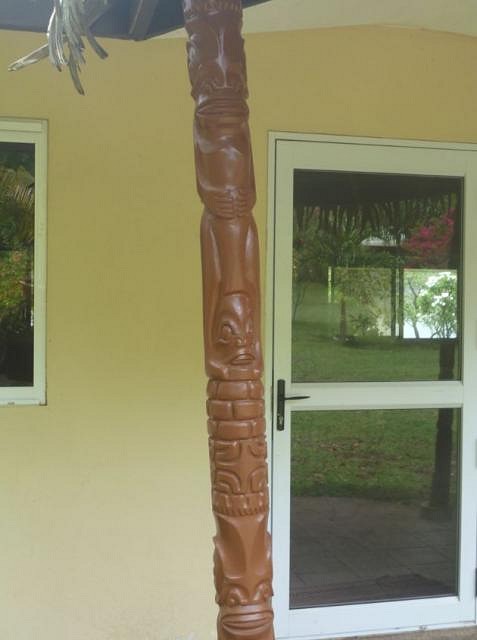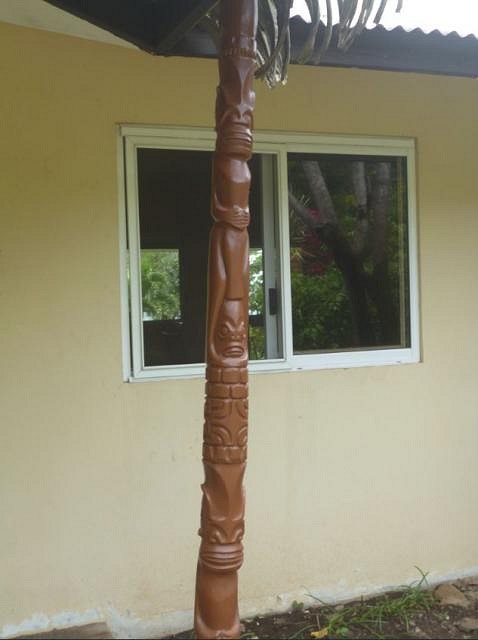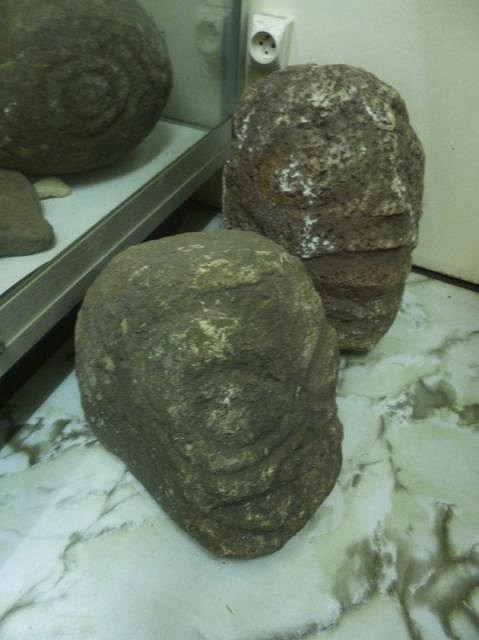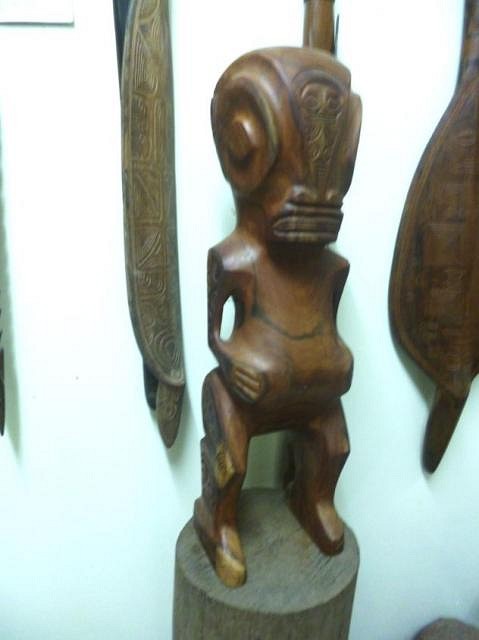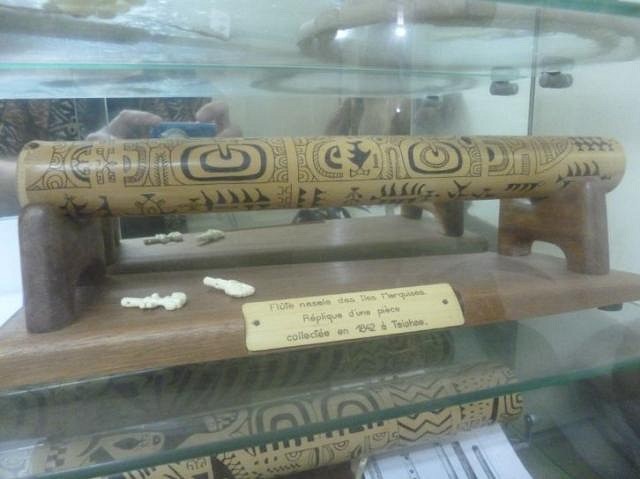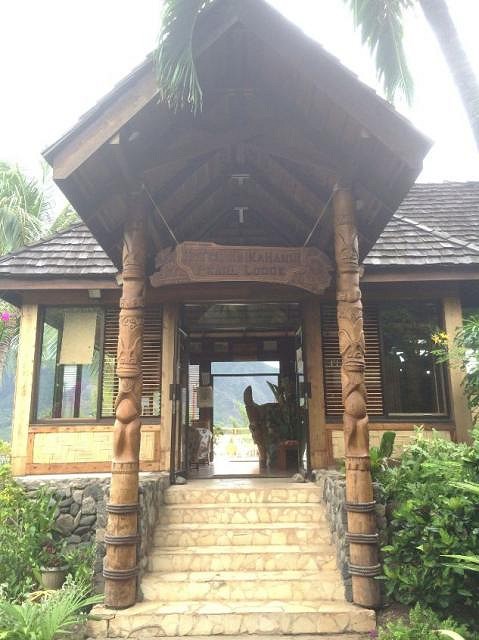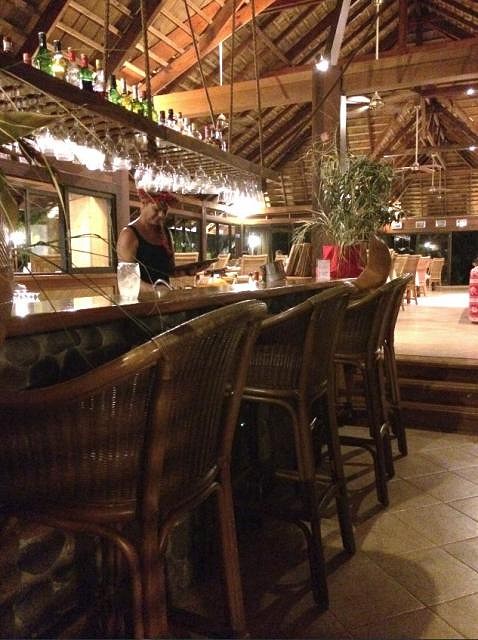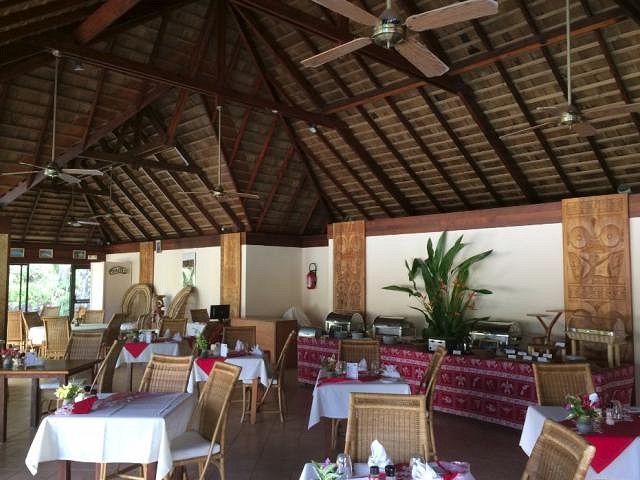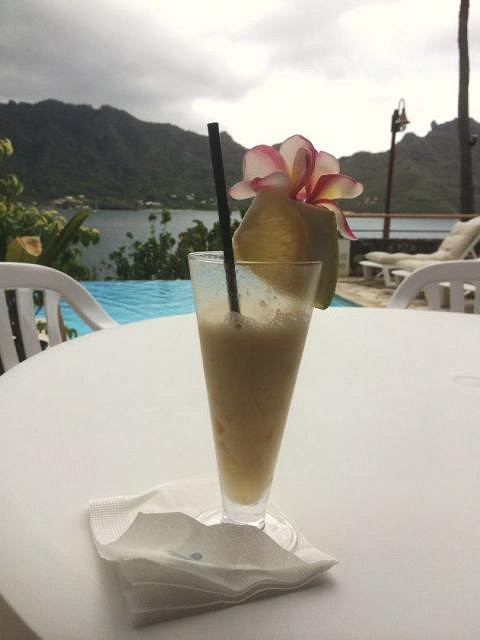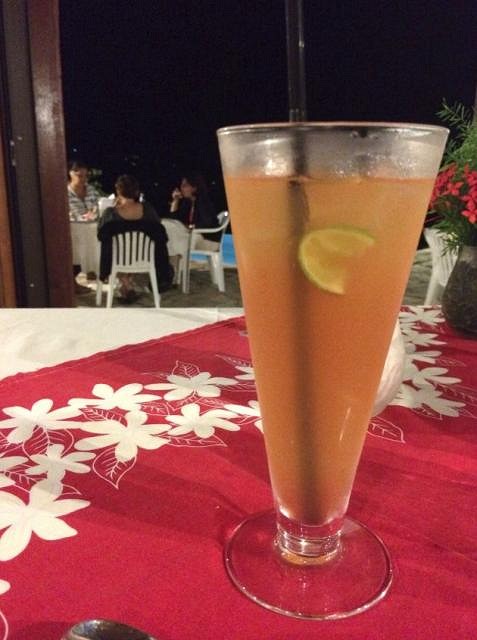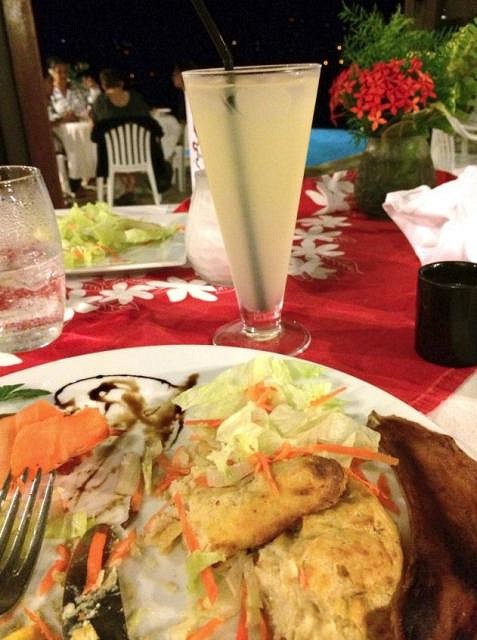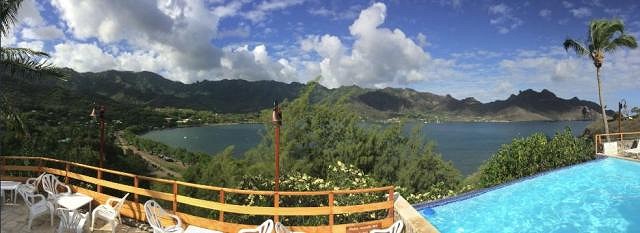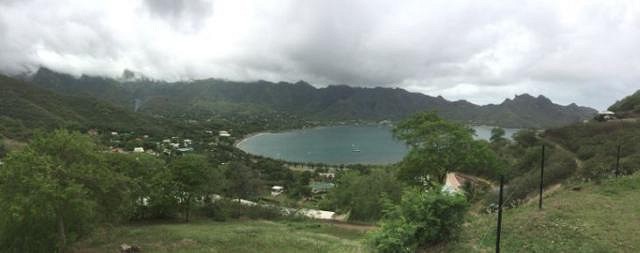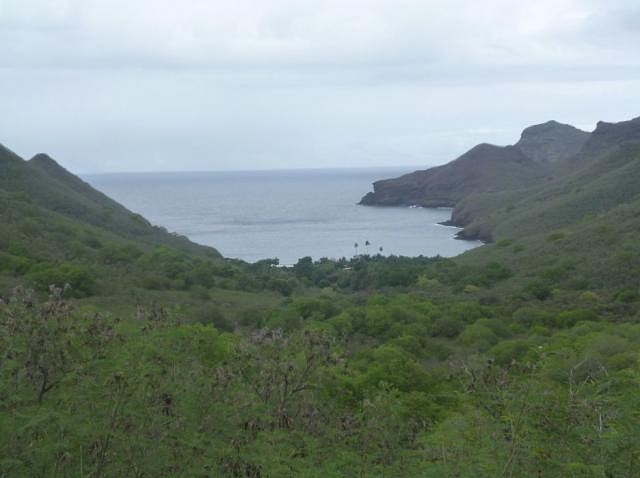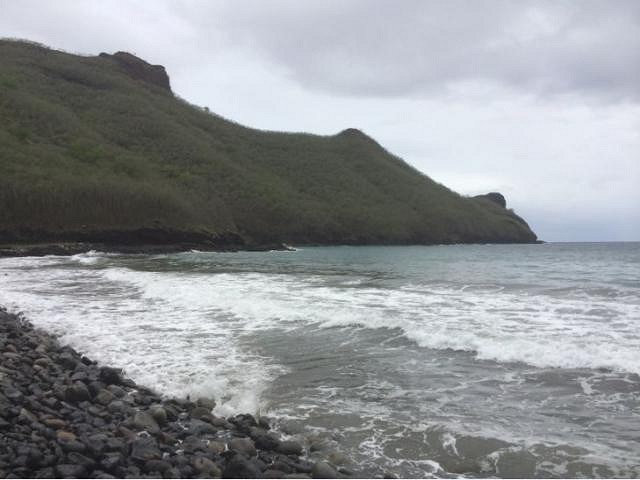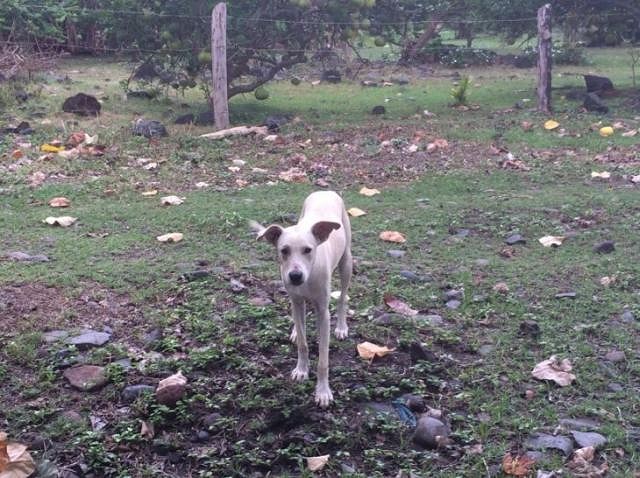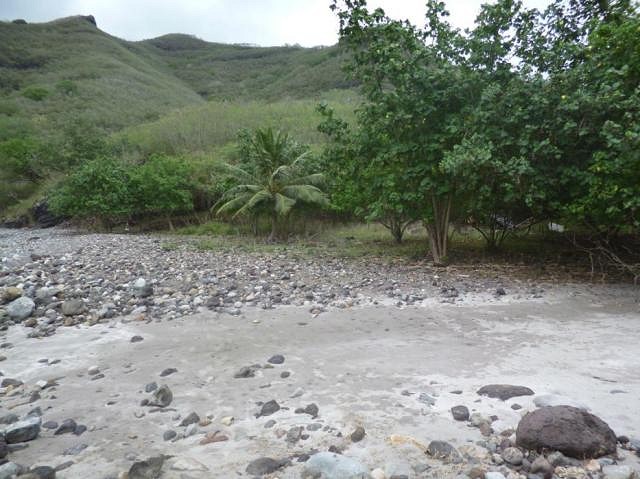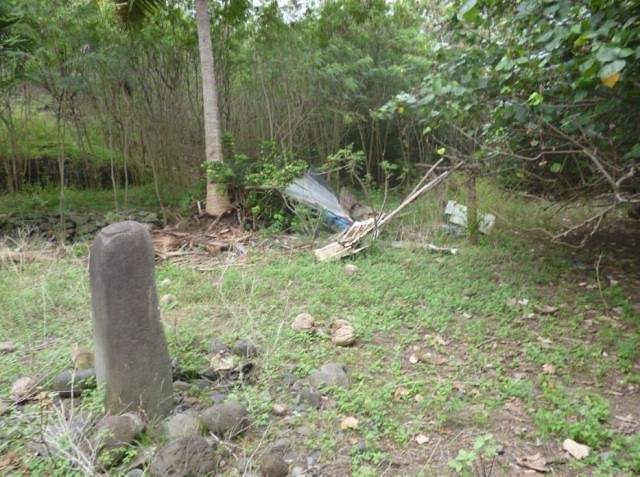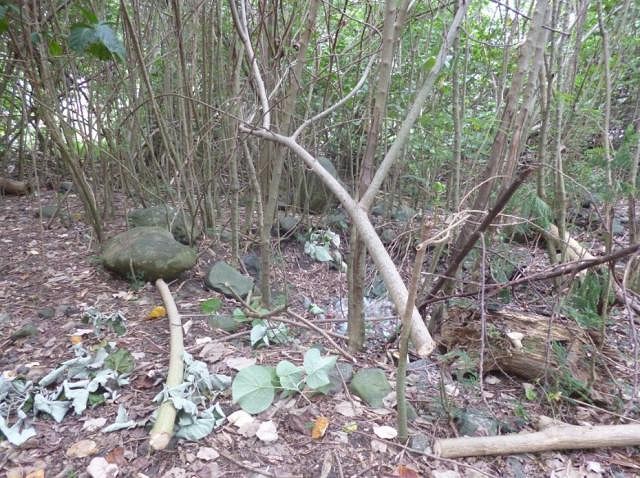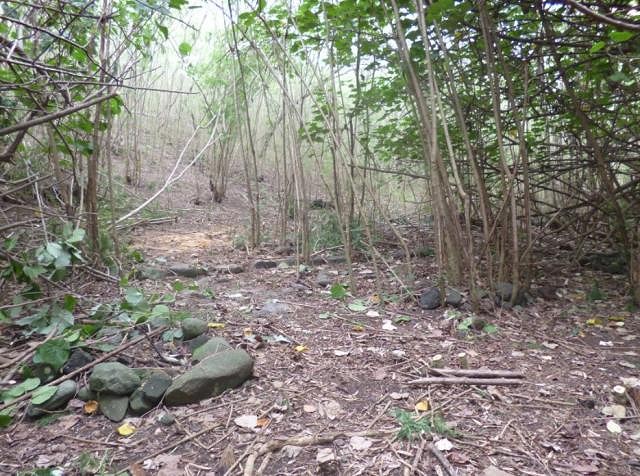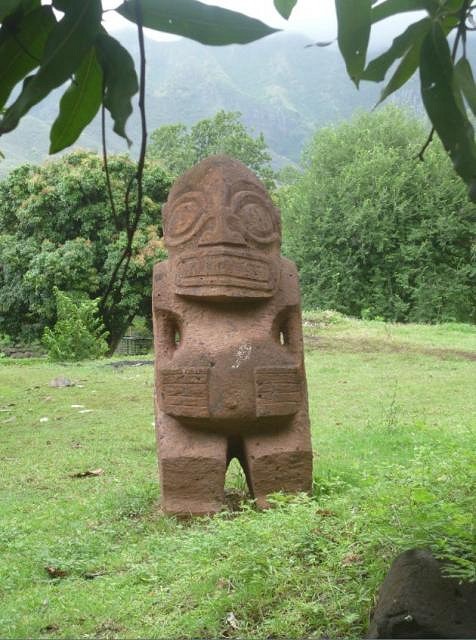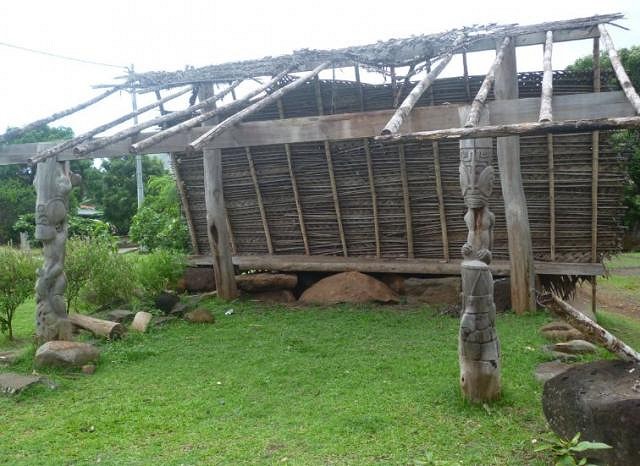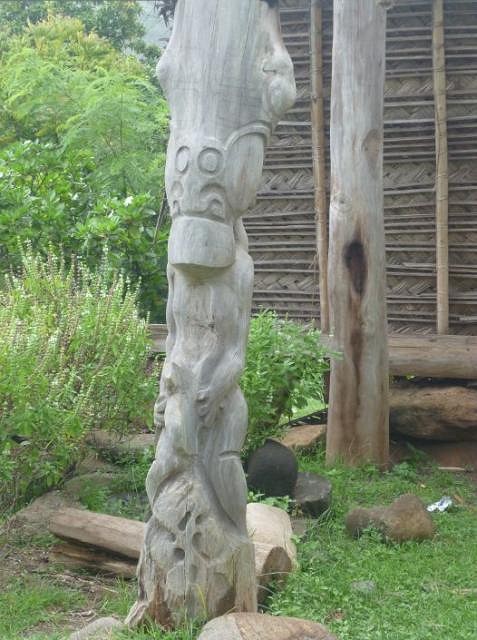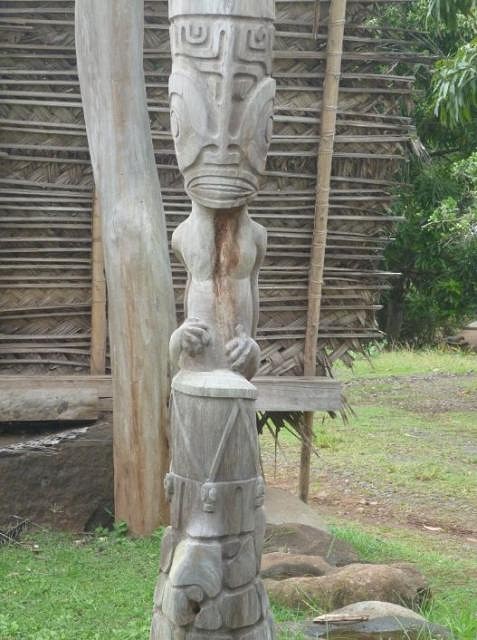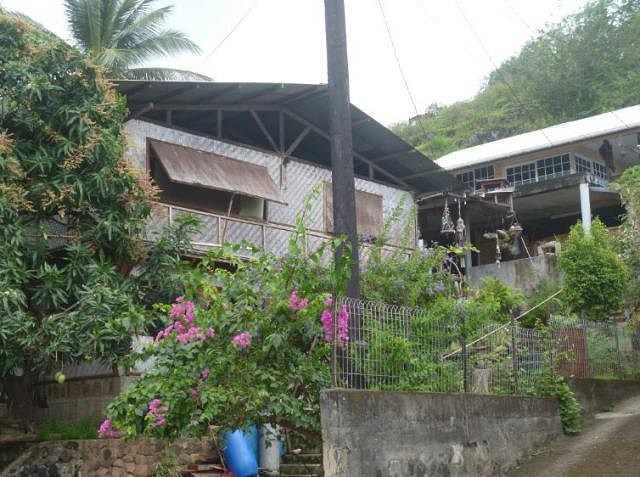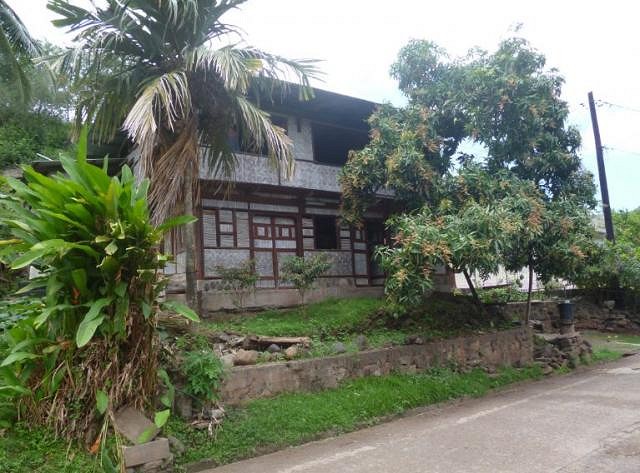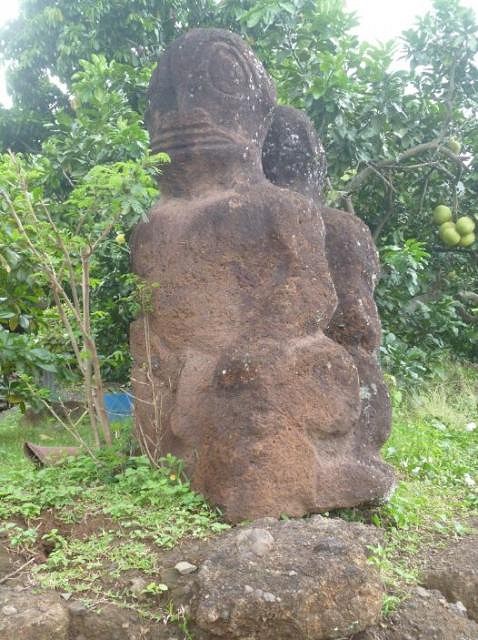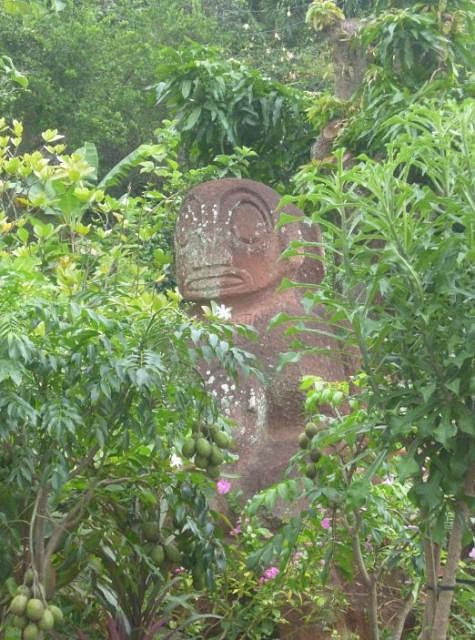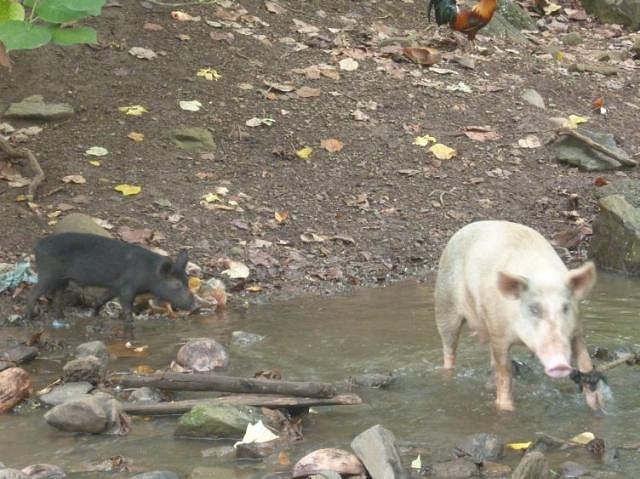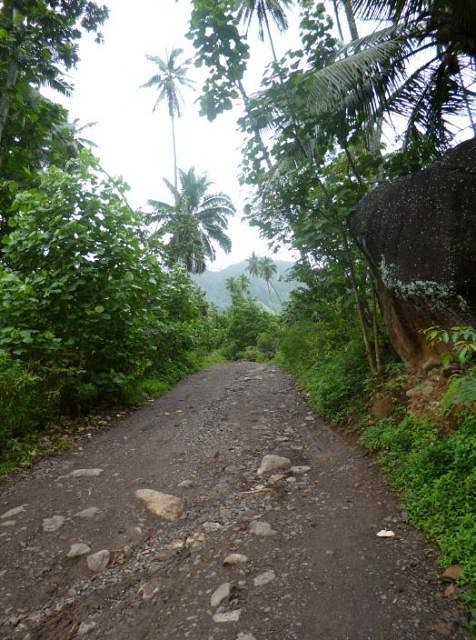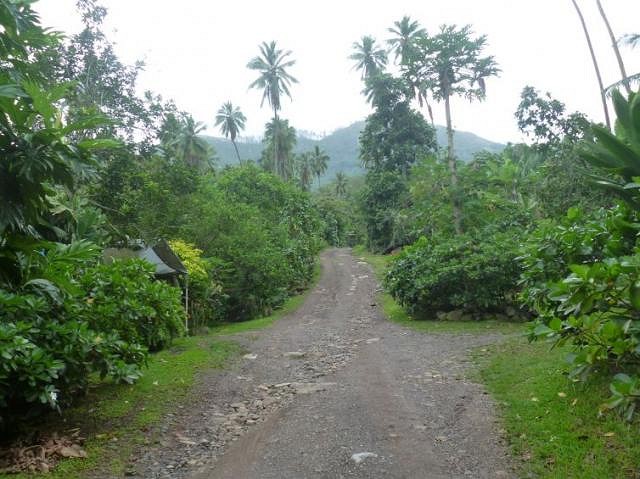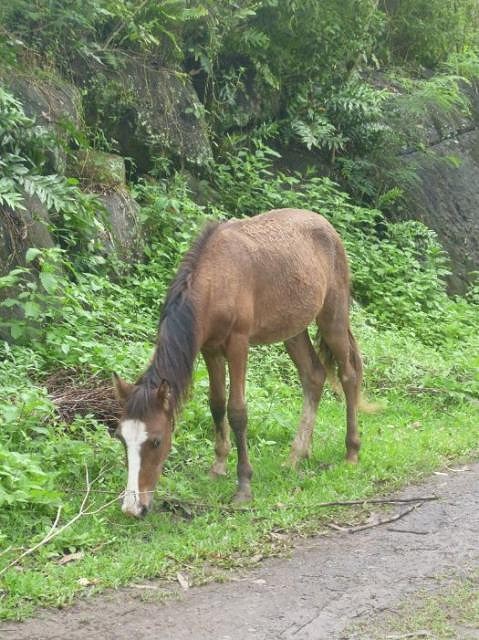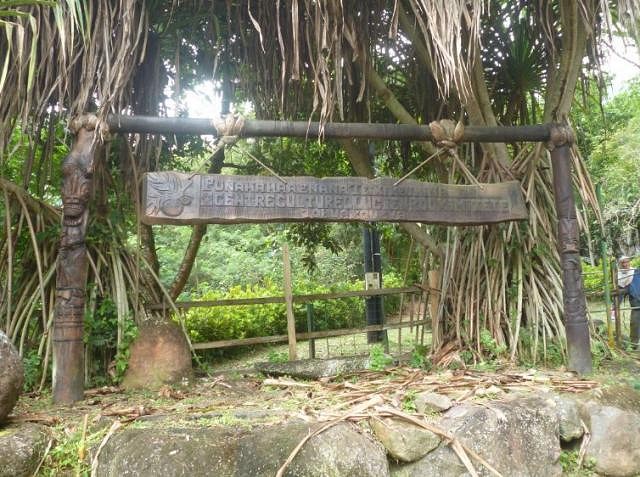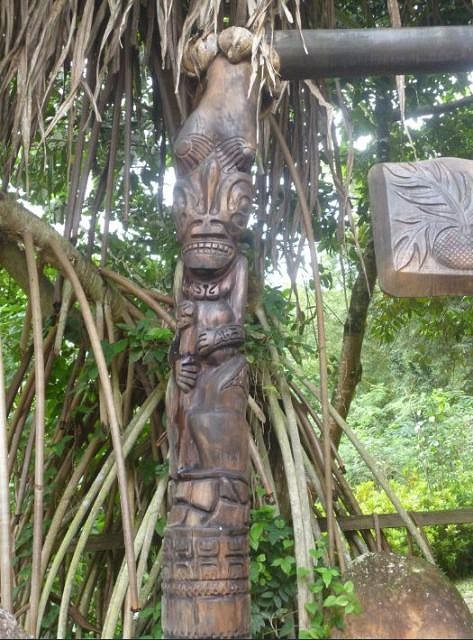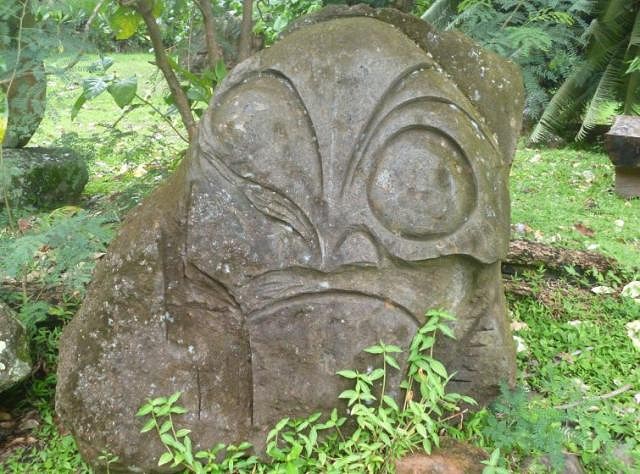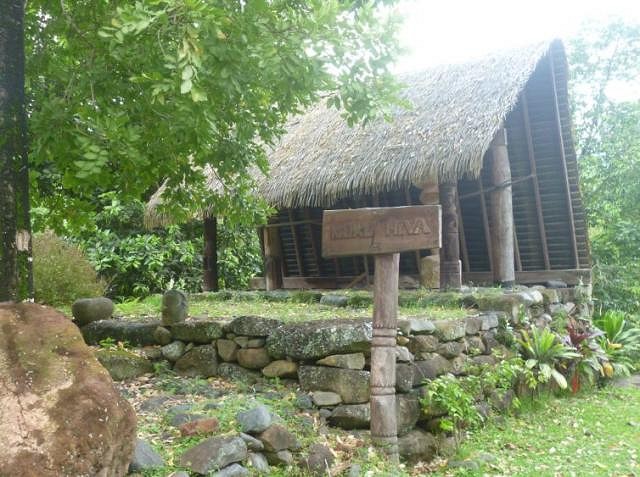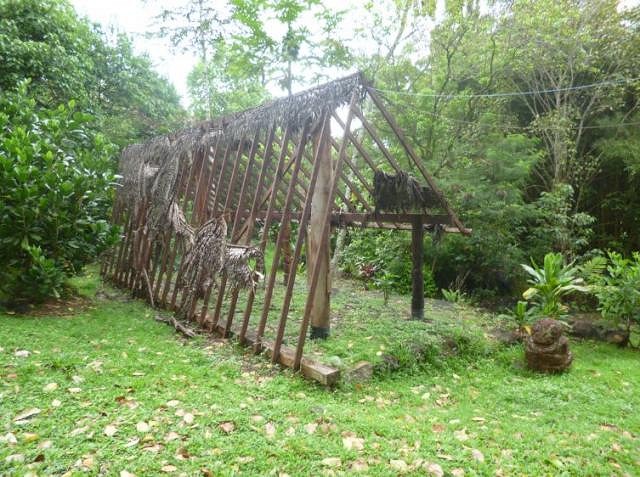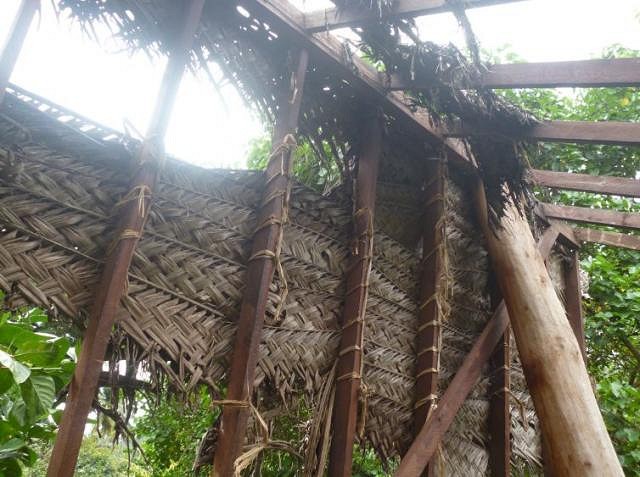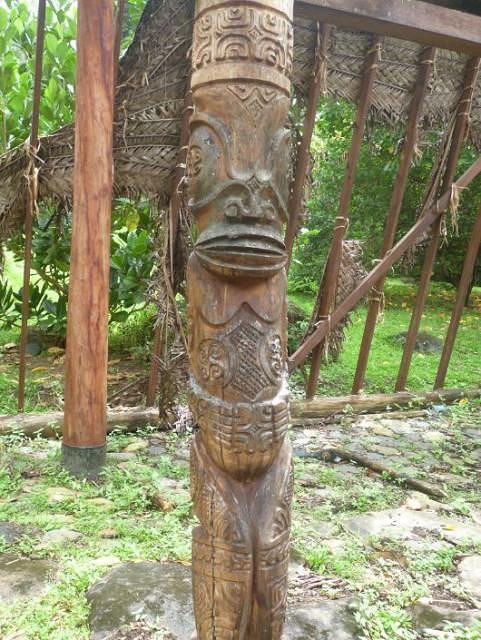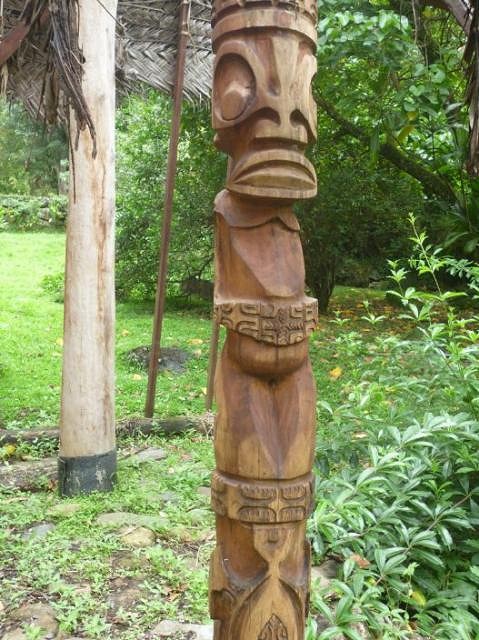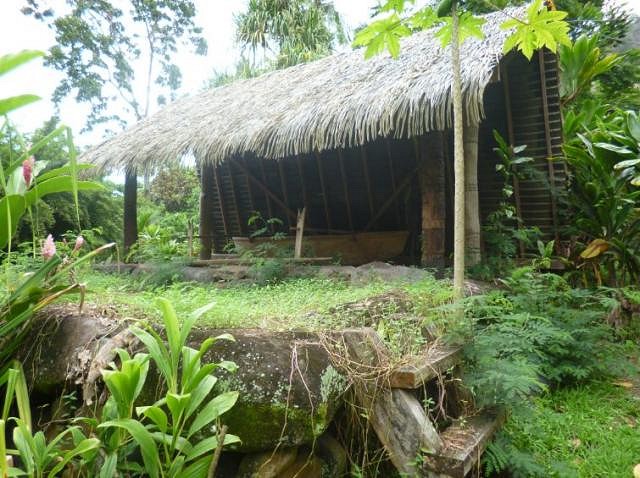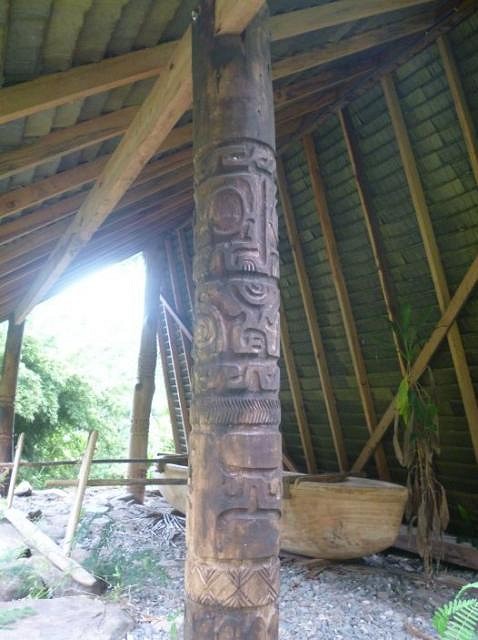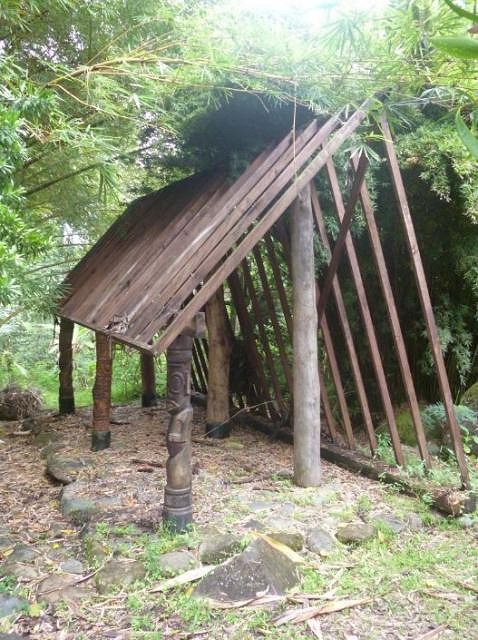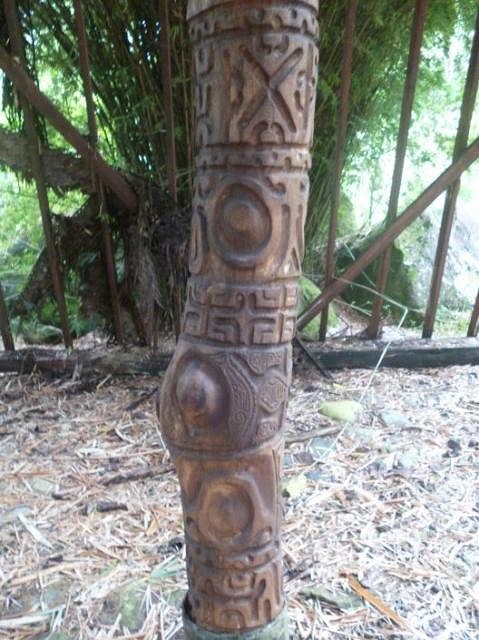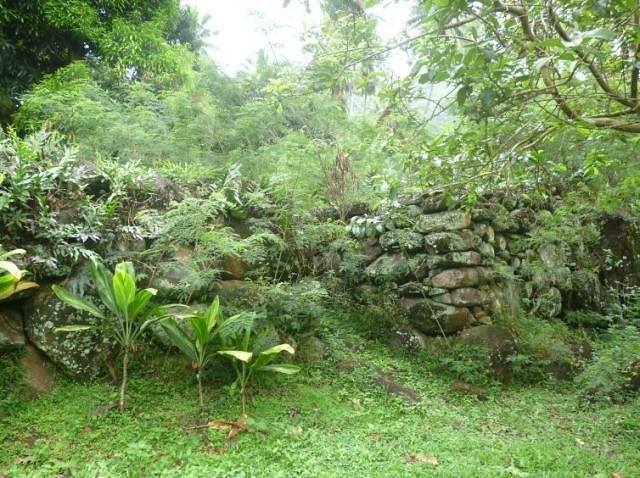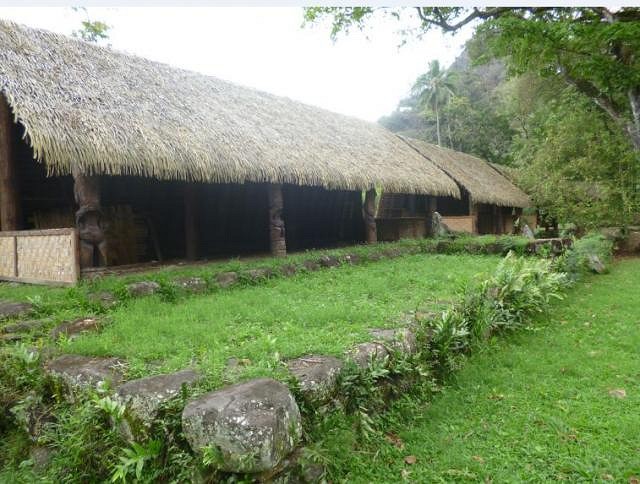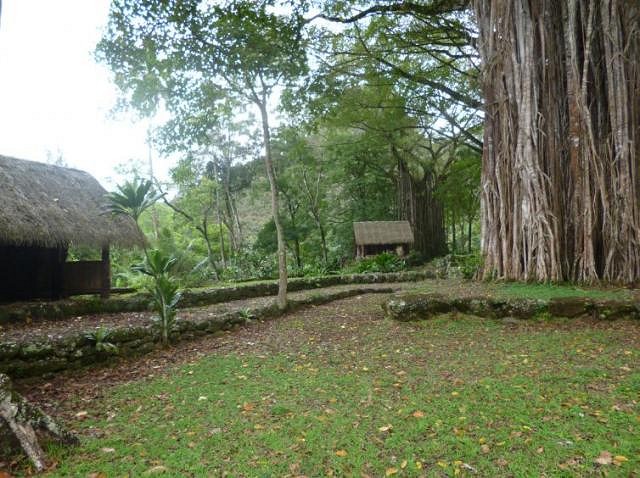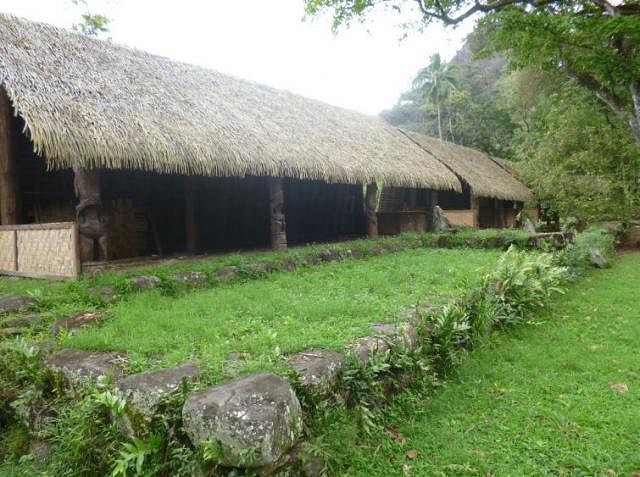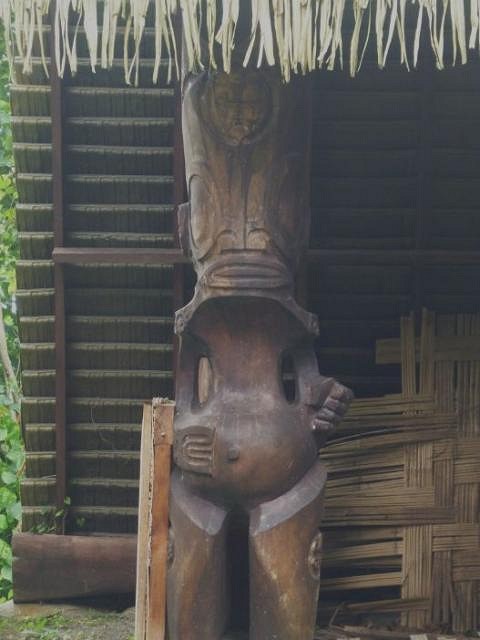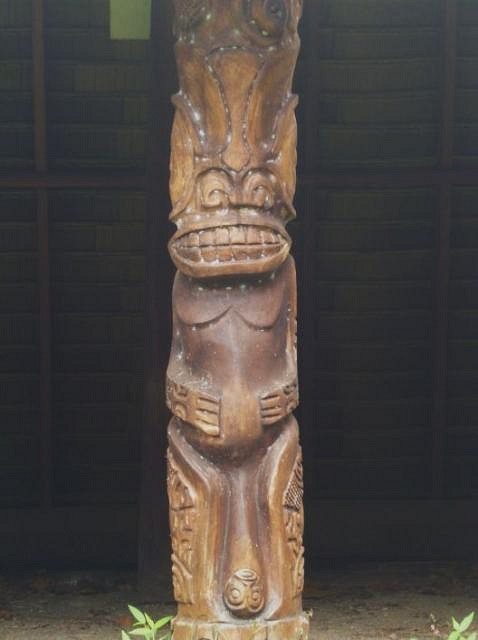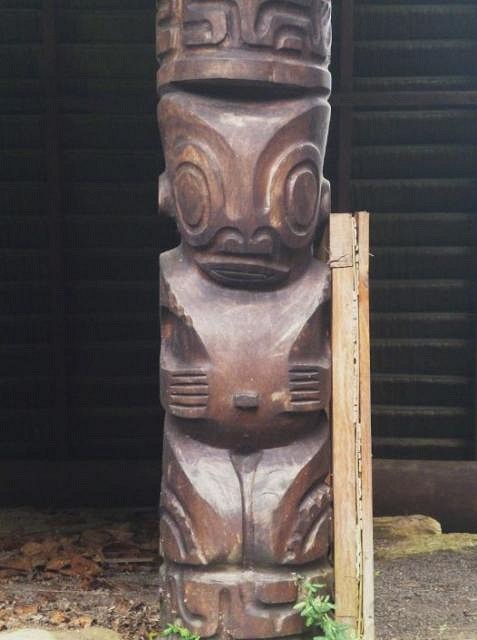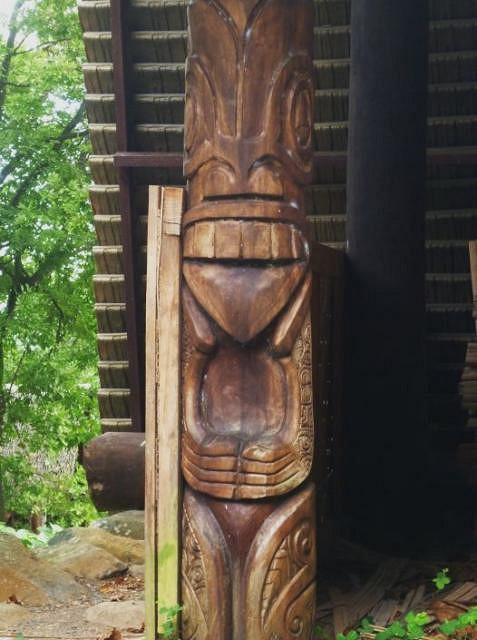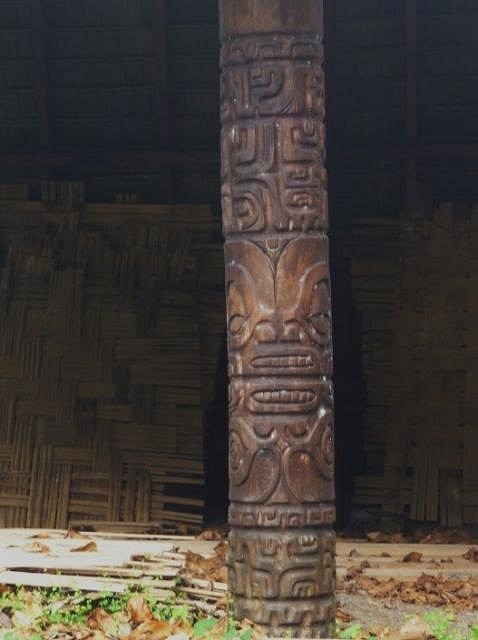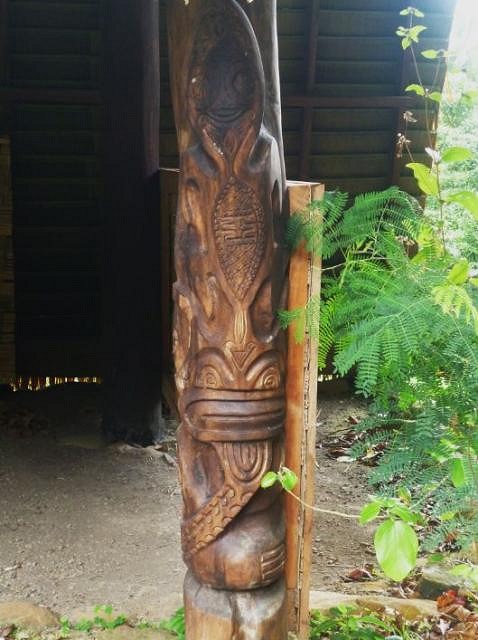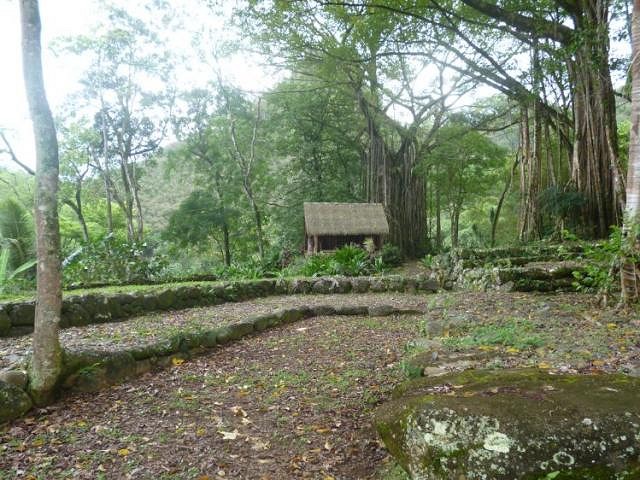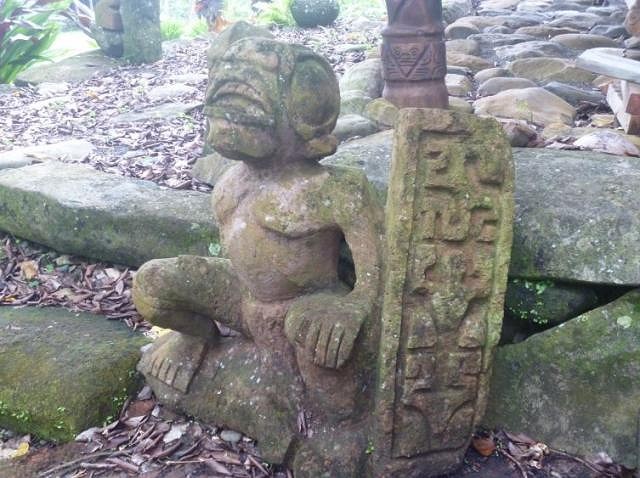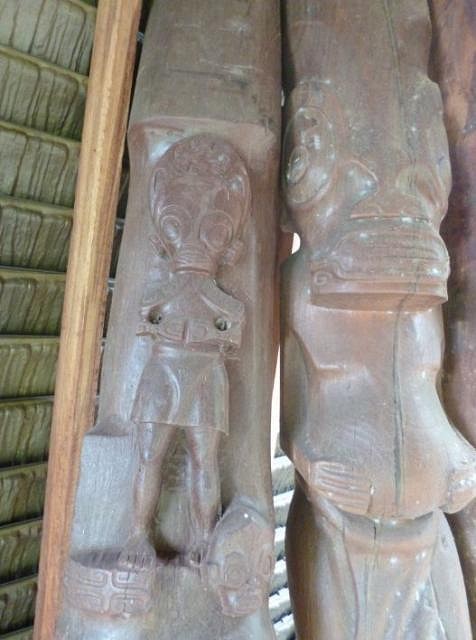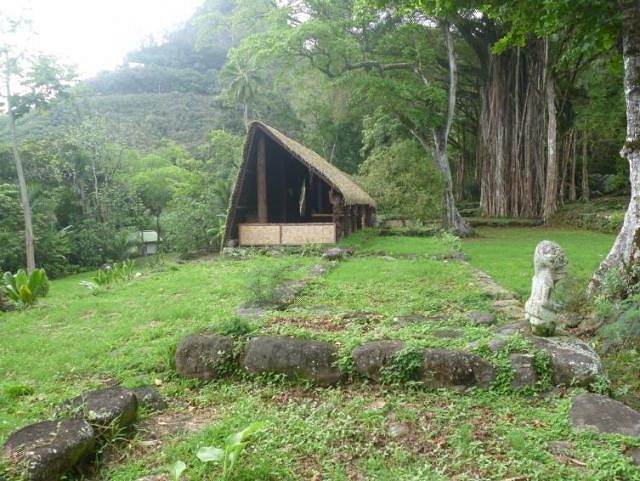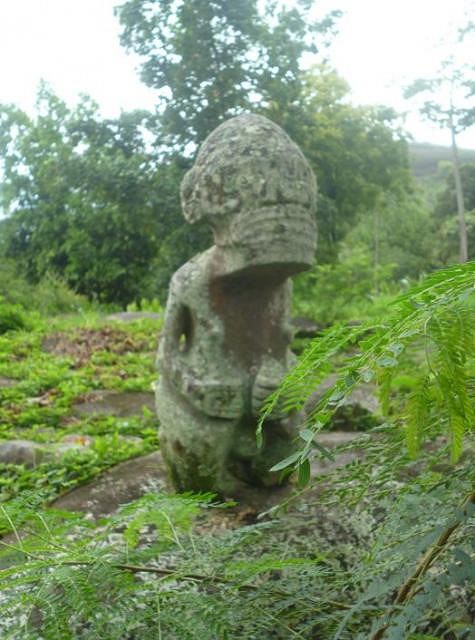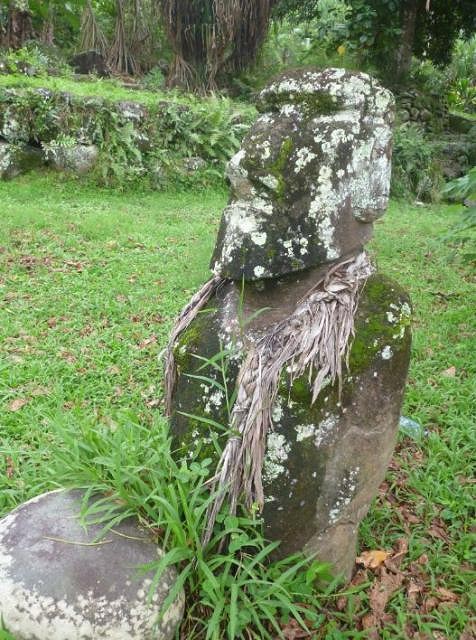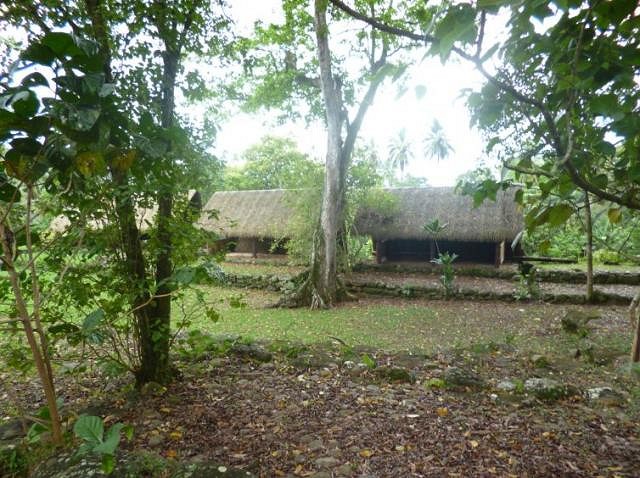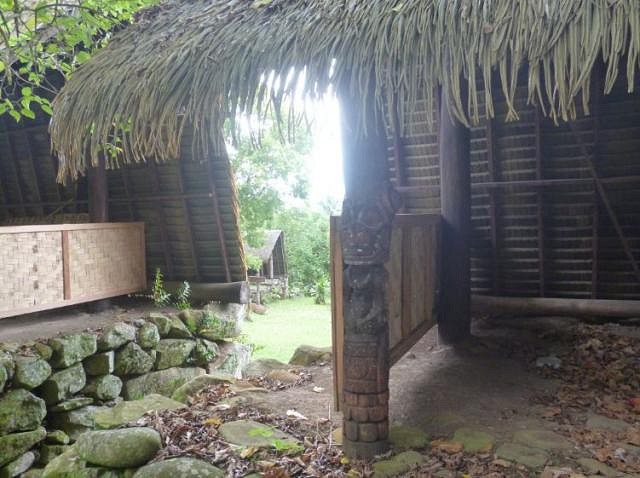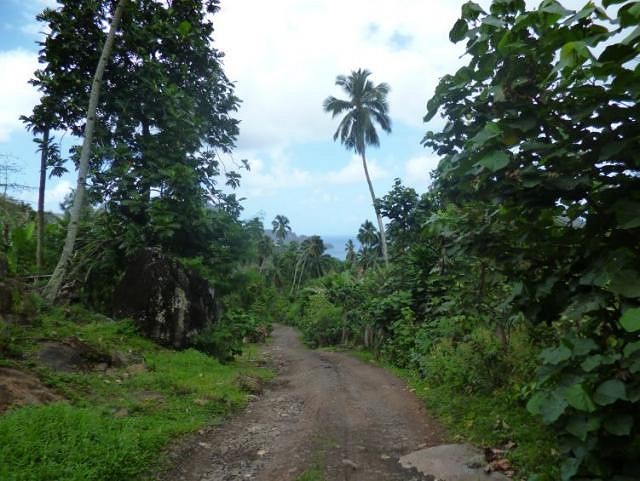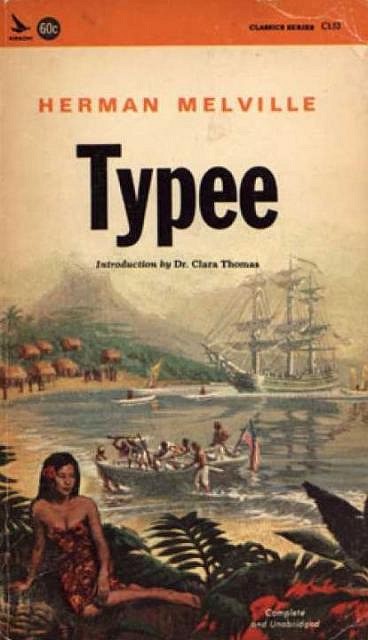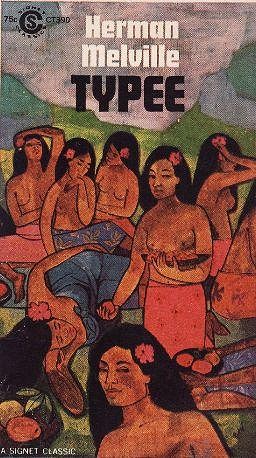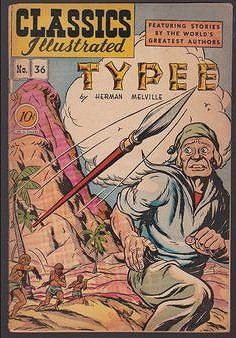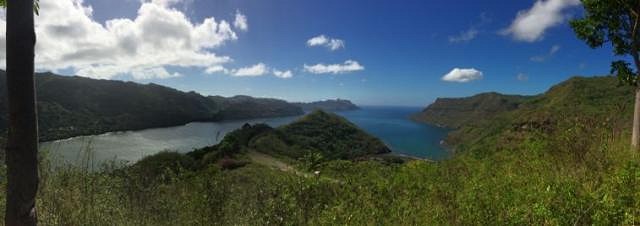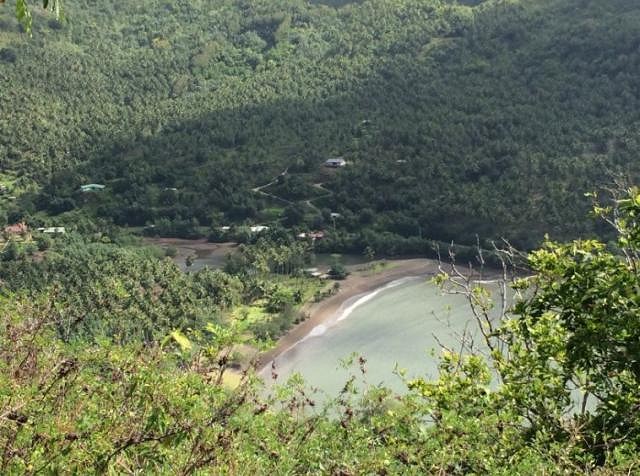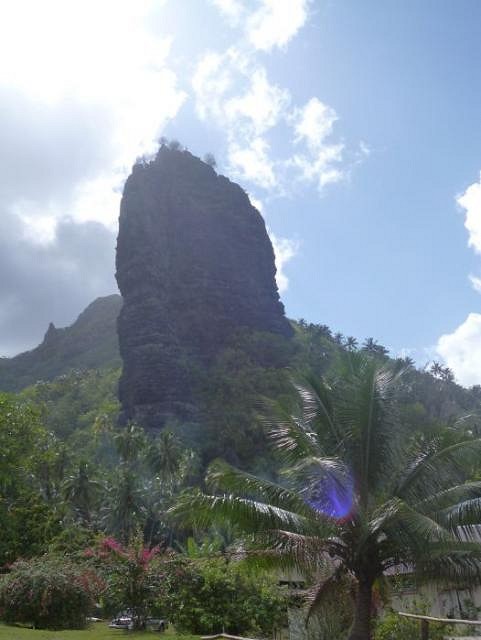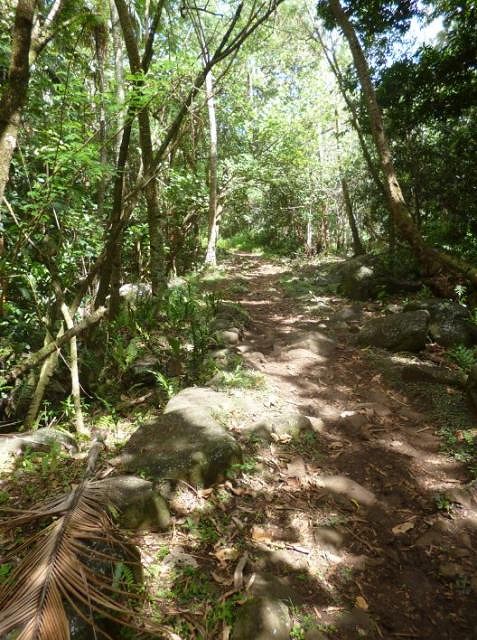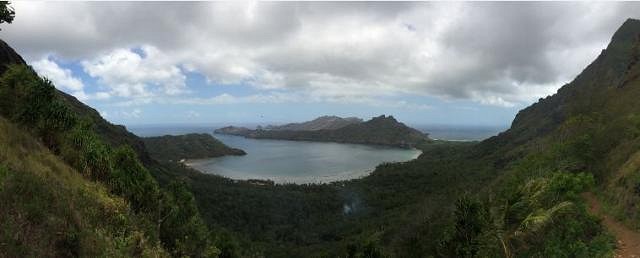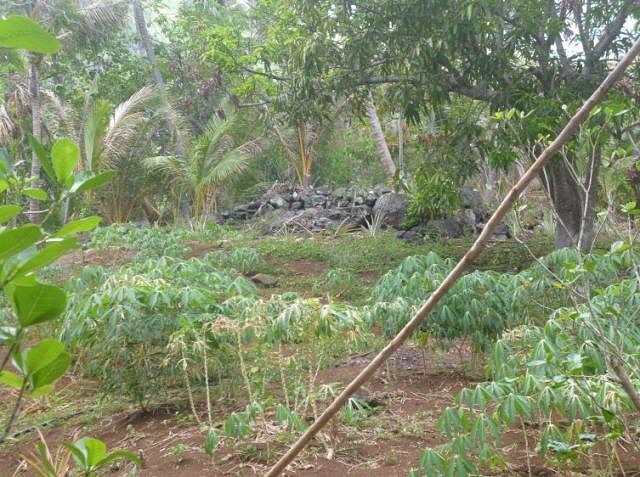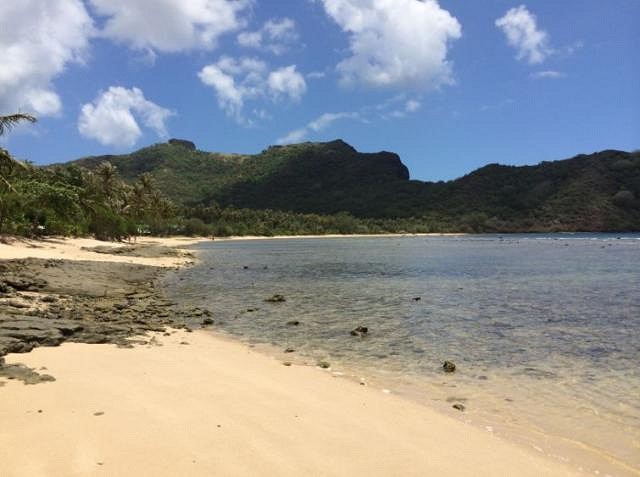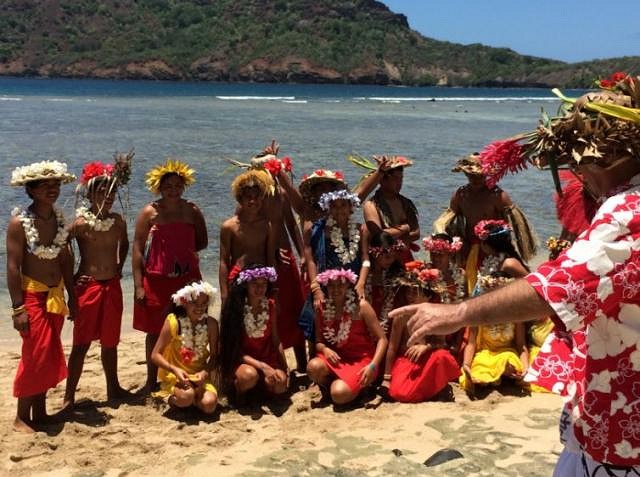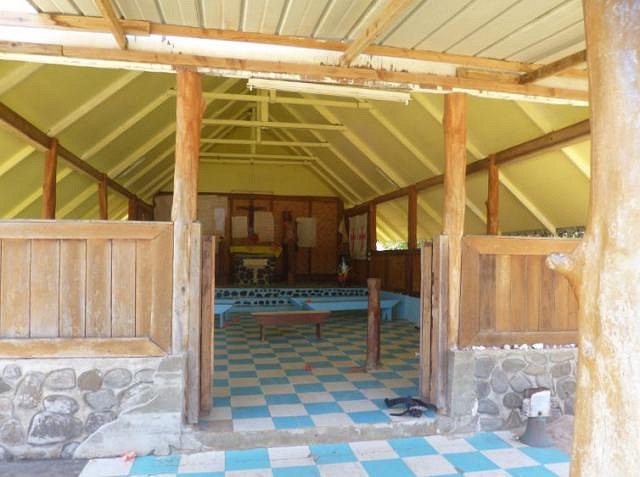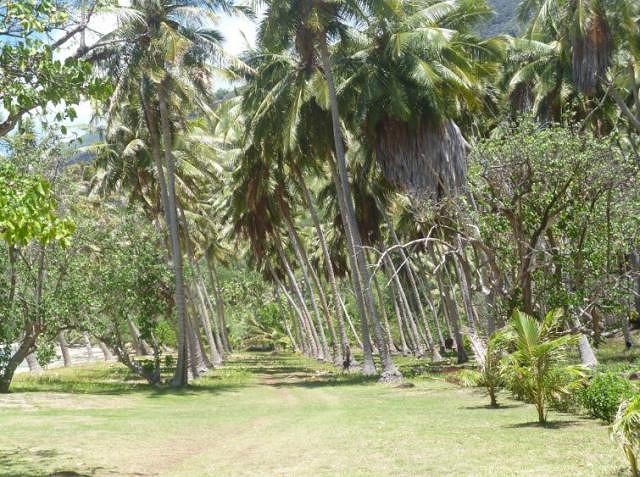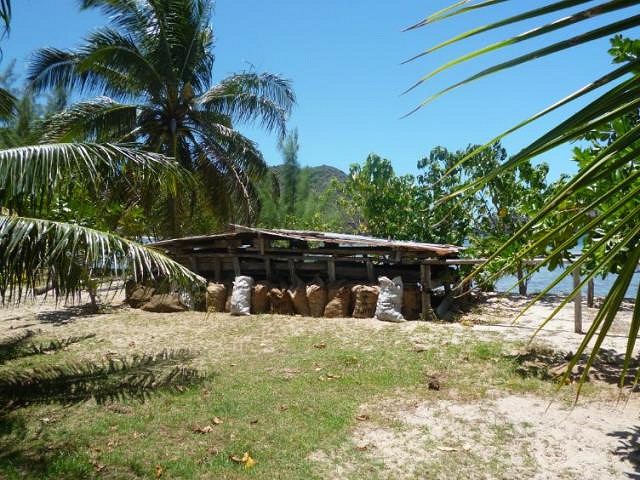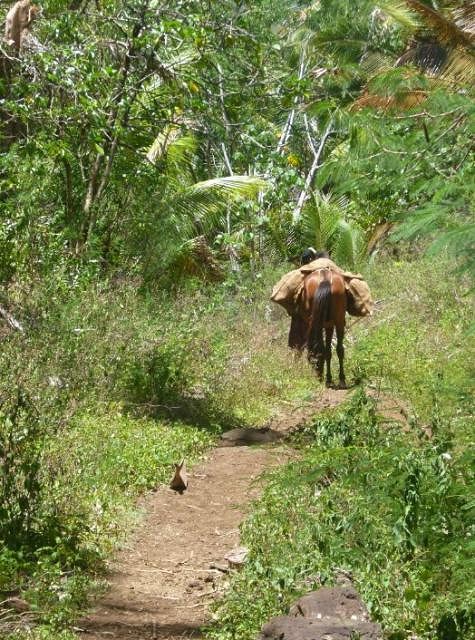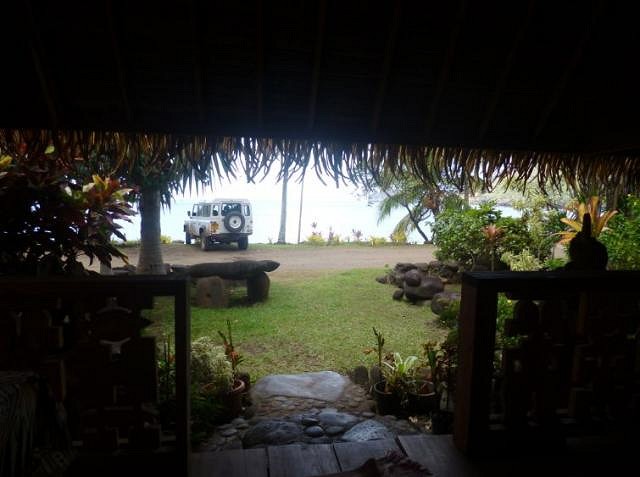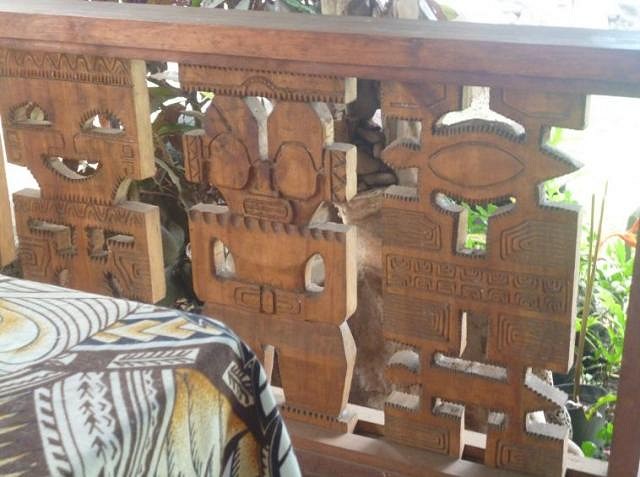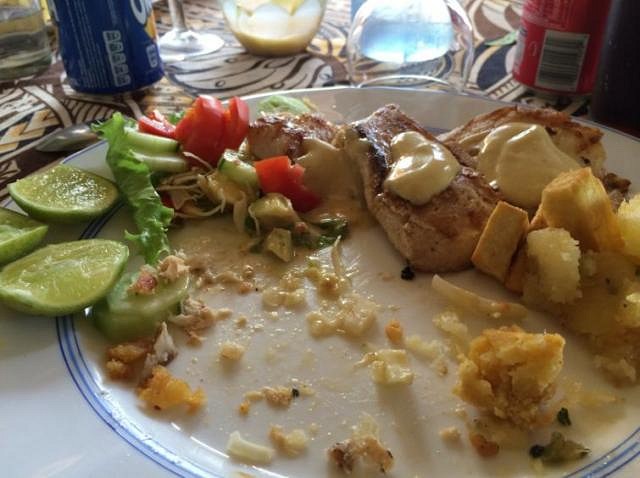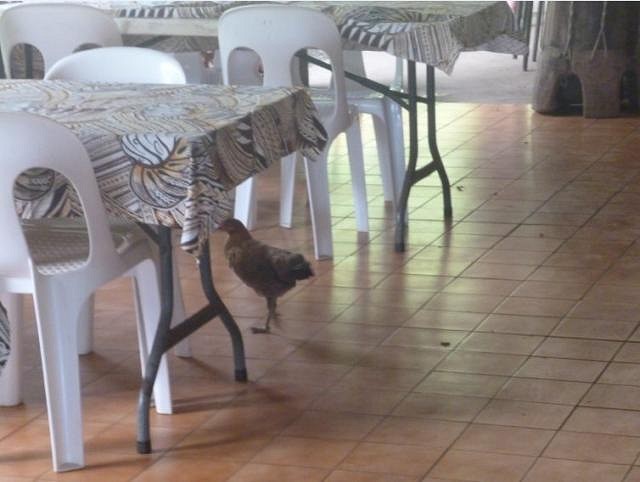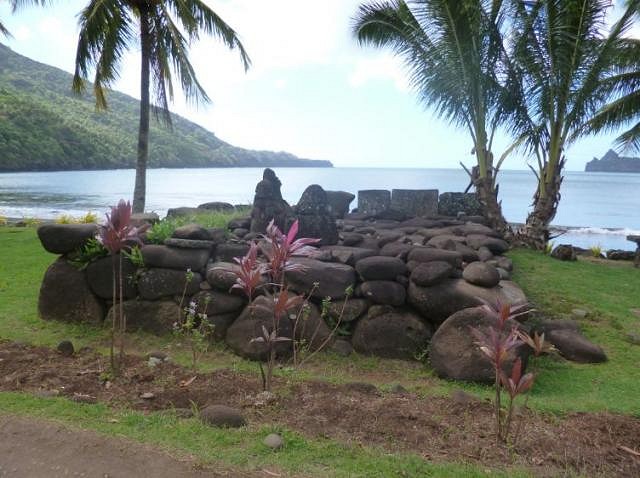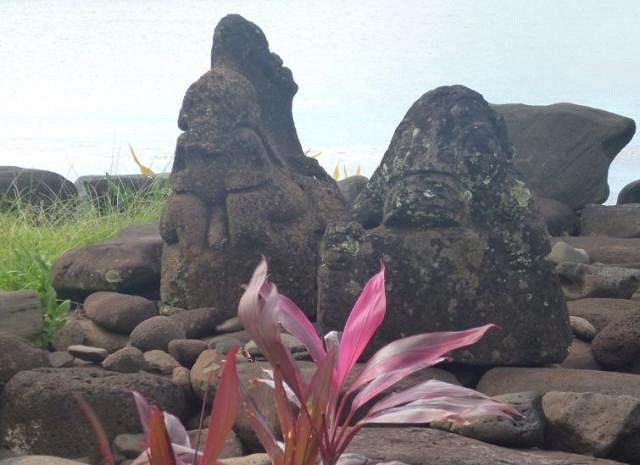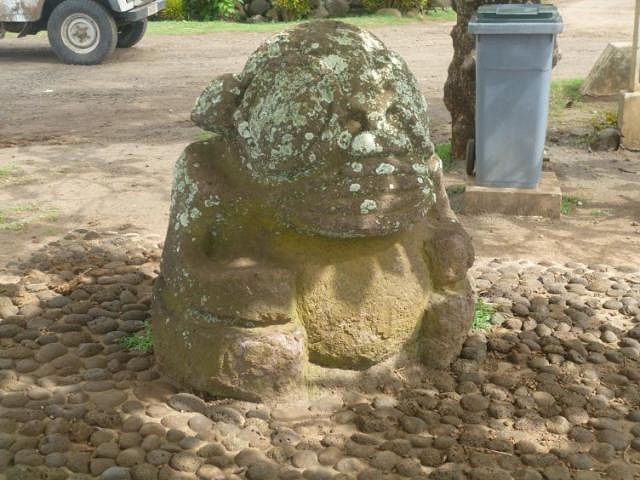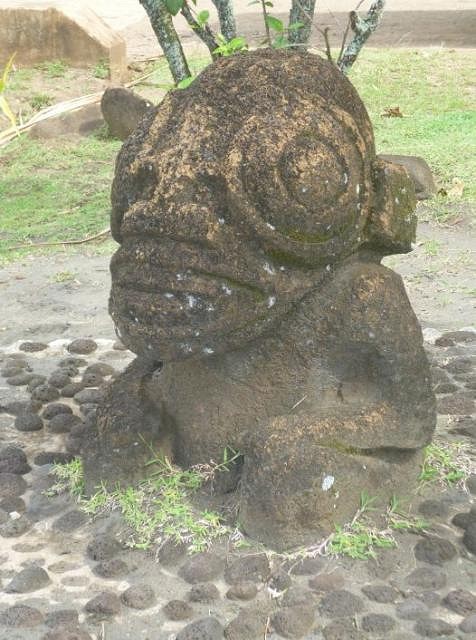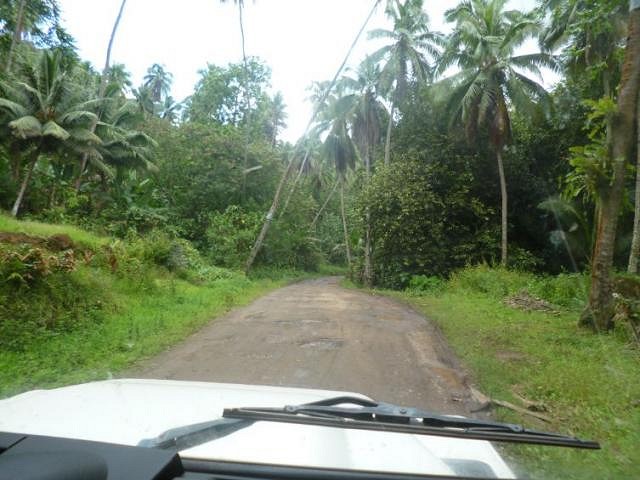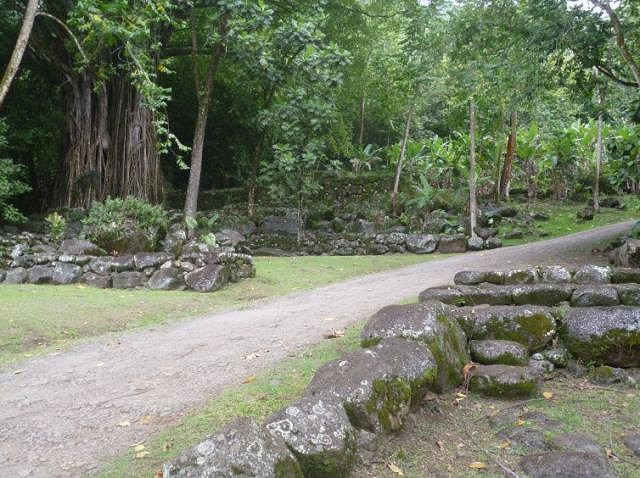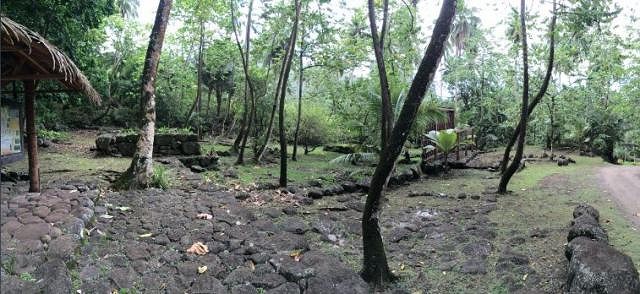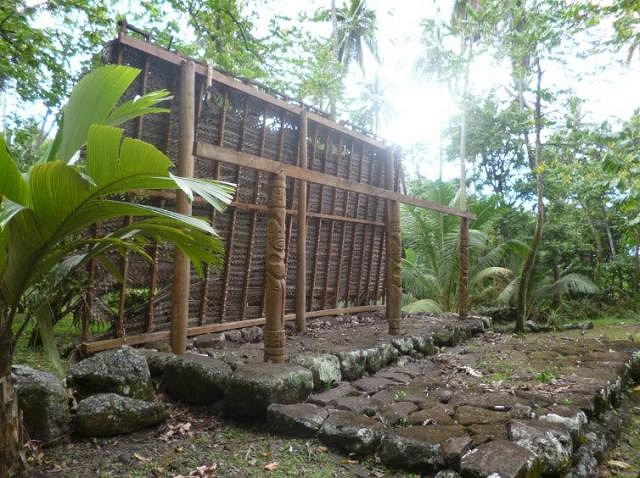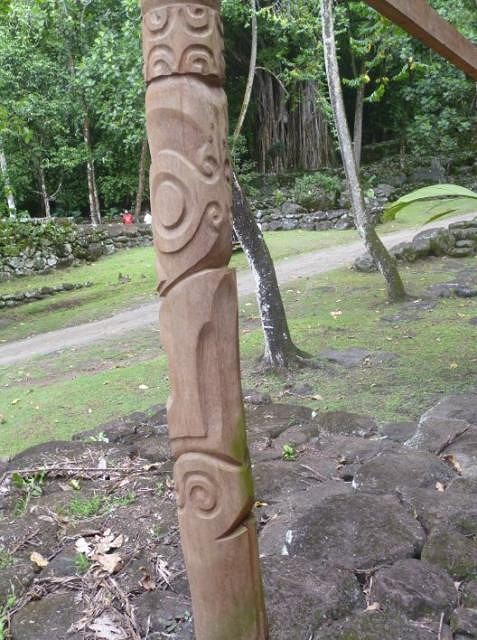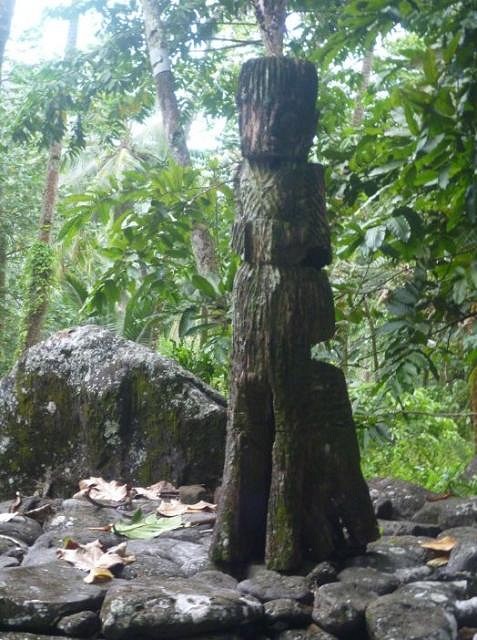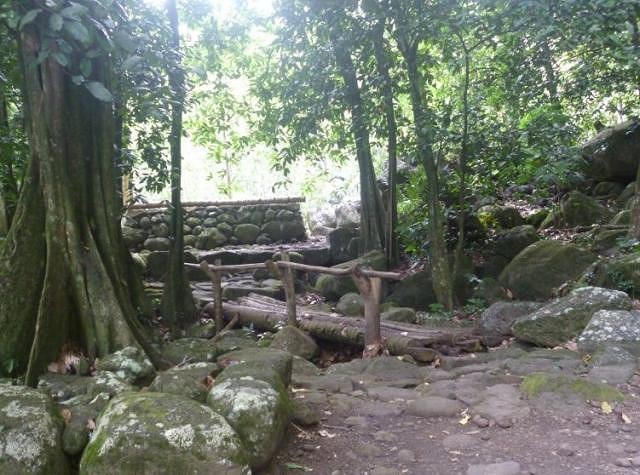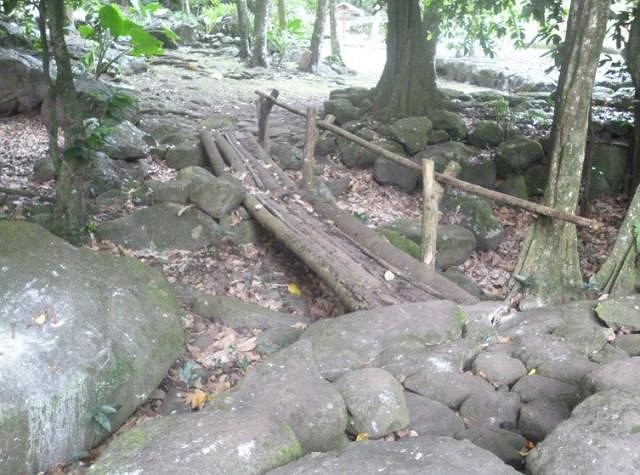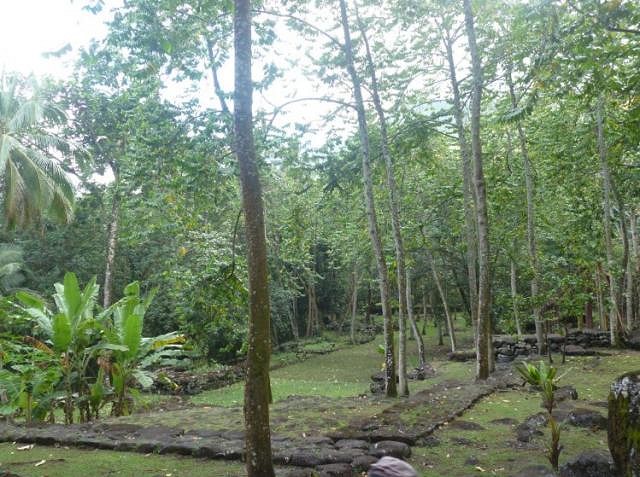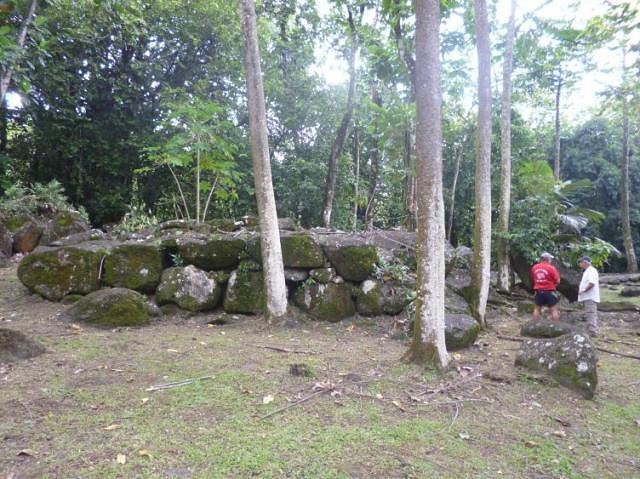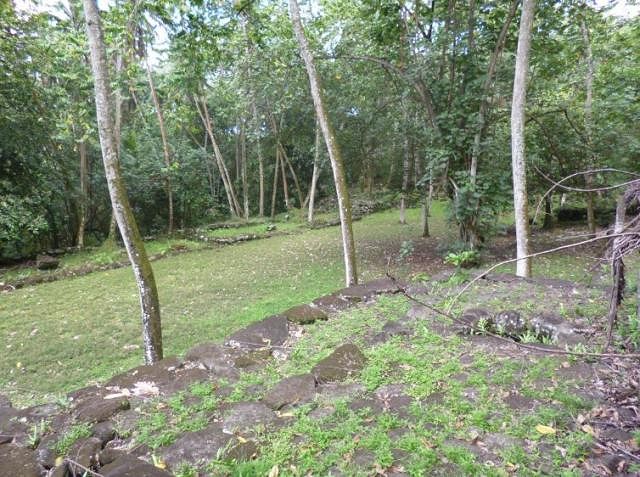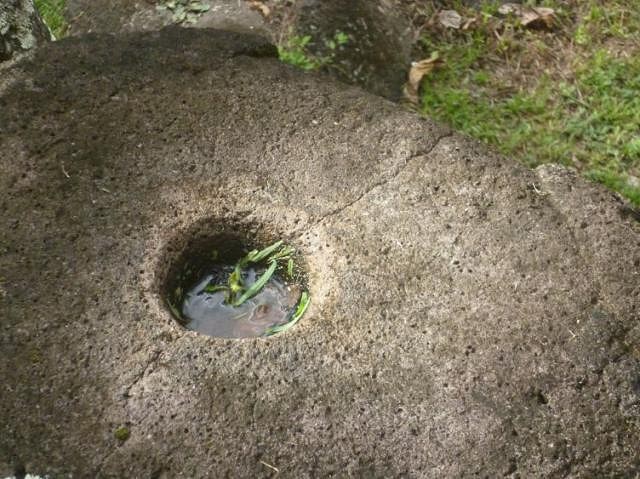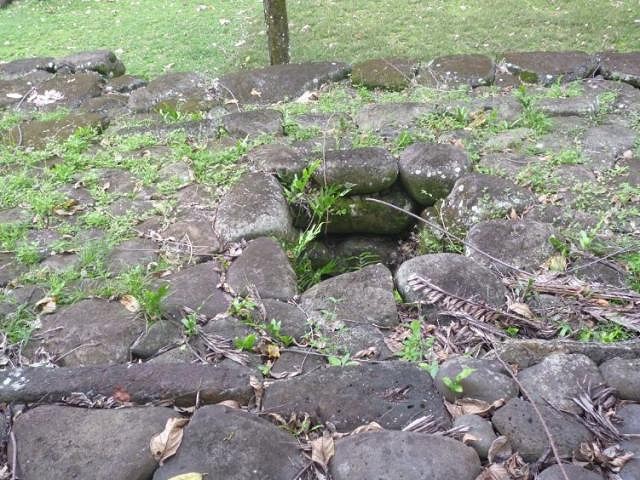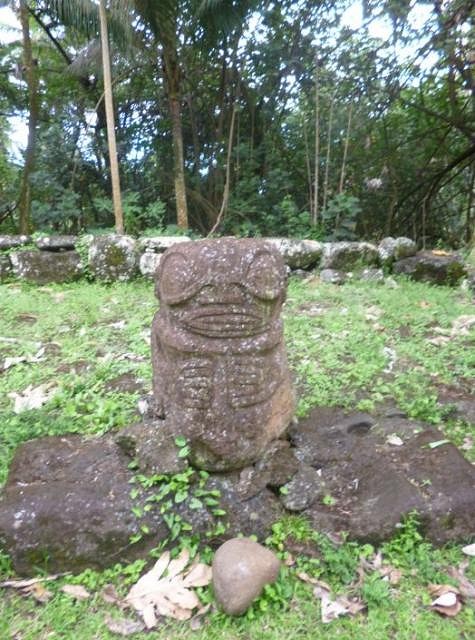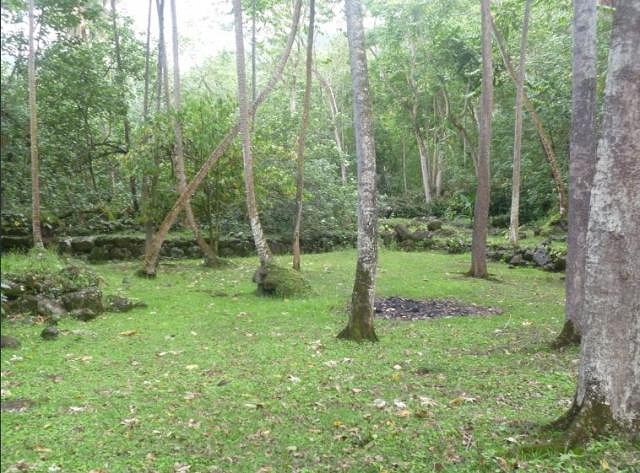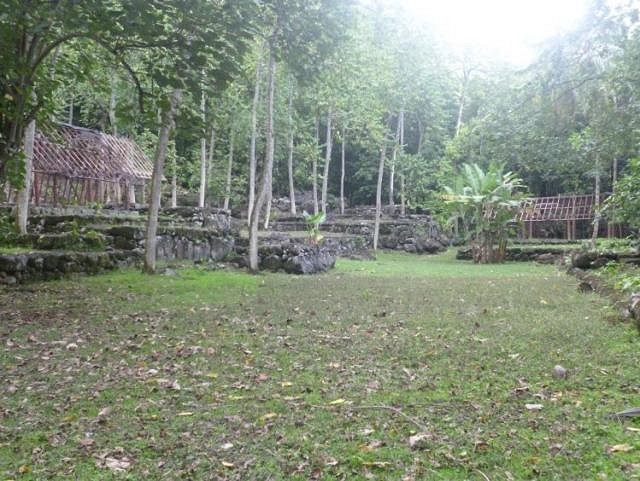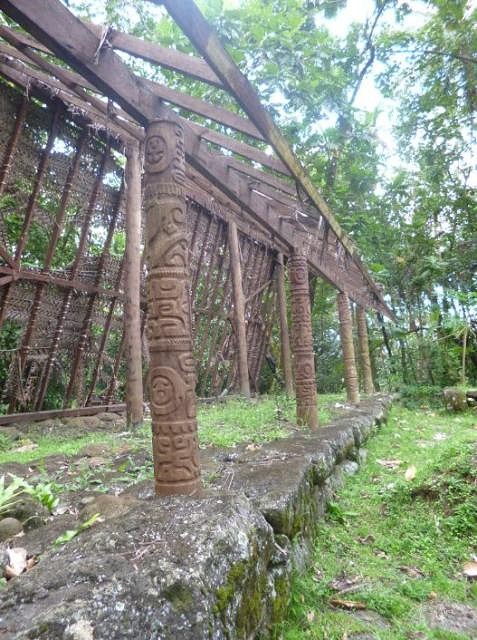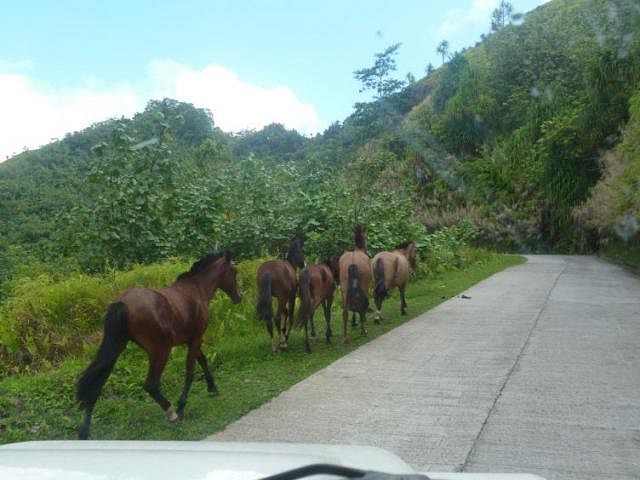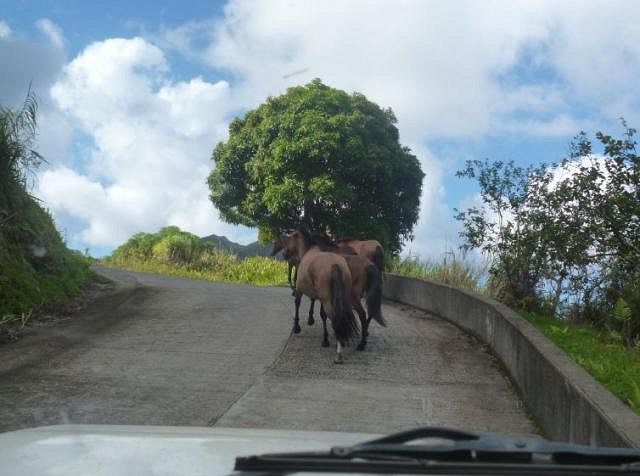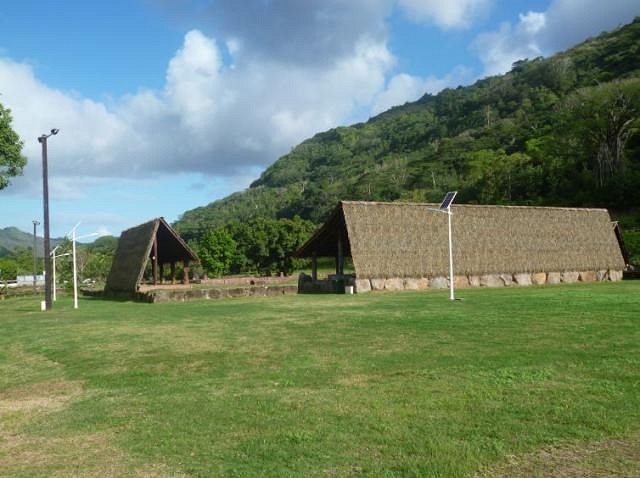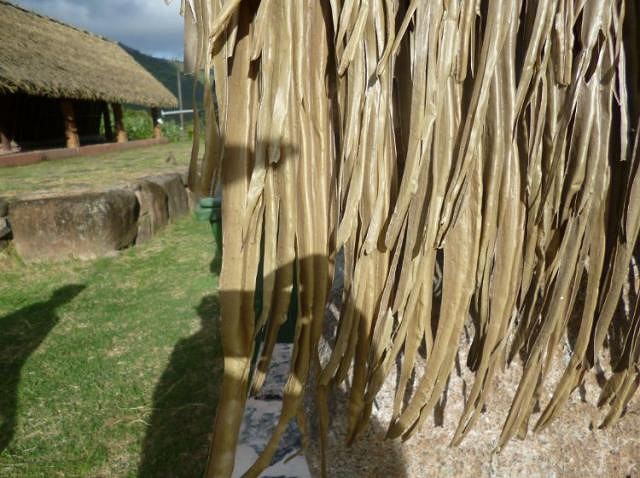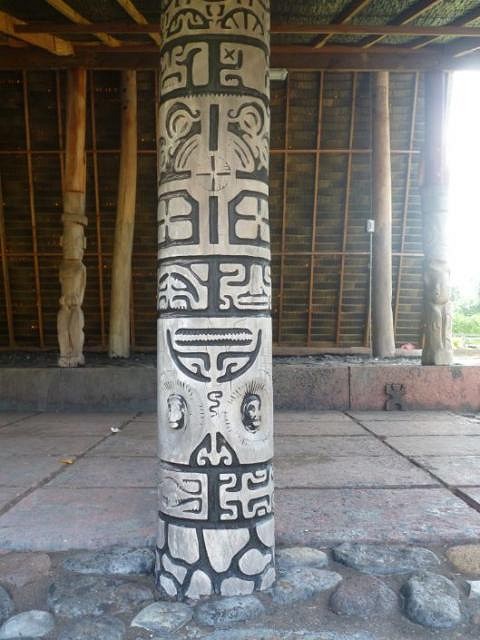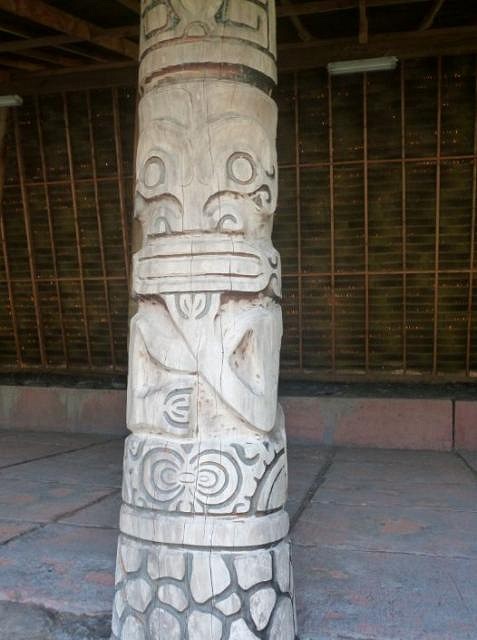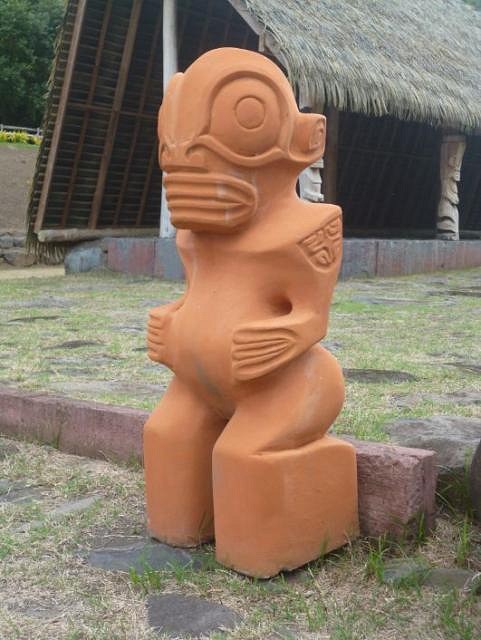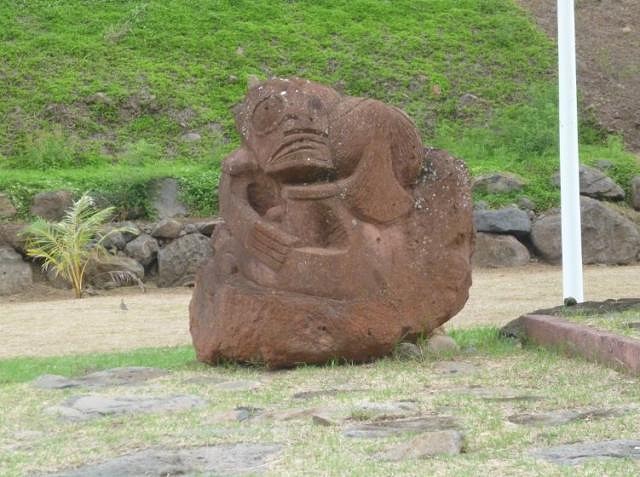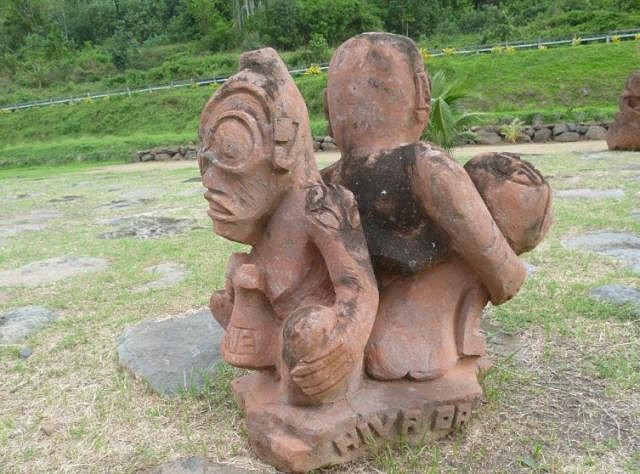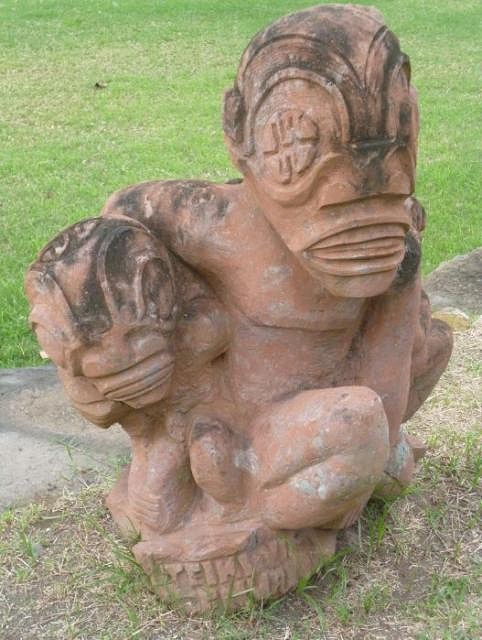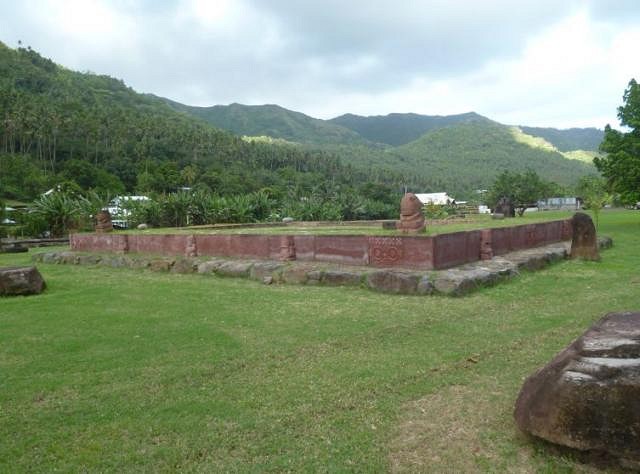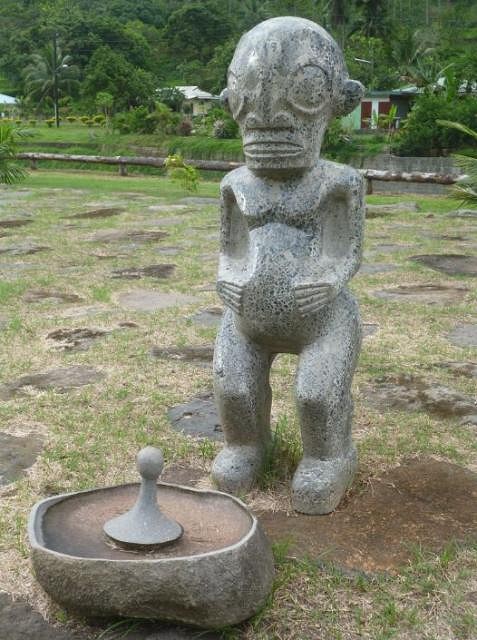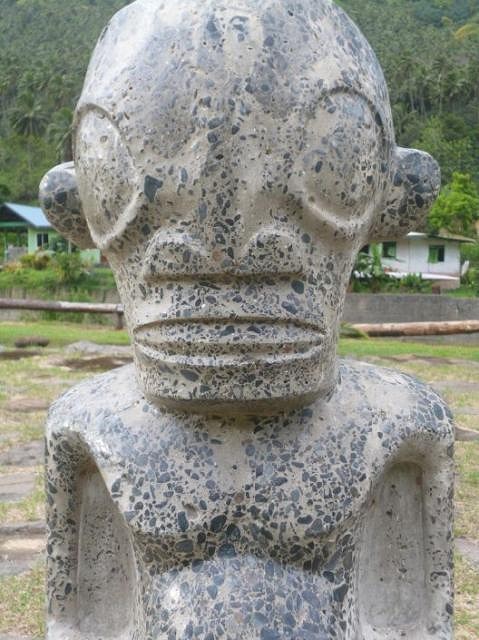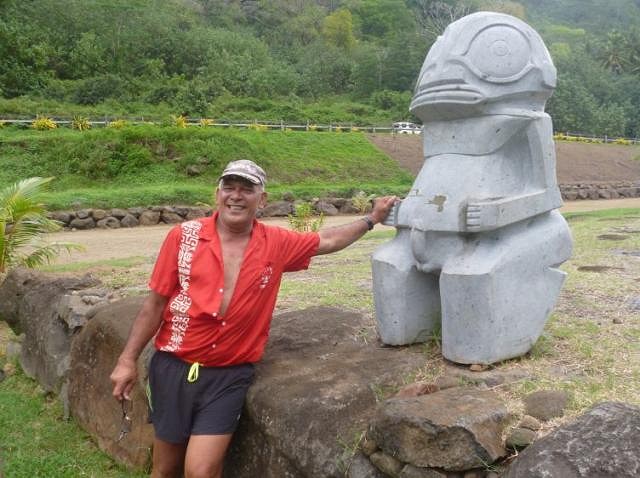Pages: 1 41 replies
|
CN
Club Nouméa
Posted
posted
on
Tue, Oct 14, 2014 6:39 PM
Tahitian tikis: Strangers in a strange land In 1815, as part of his process of converting Tahitians to christianity, King Pomare II, at the behest of missionaries from the London Missionary Society, ordered the destruction of all of Tahiti's tikis:
Purged of its craven idols, subsequently Tahiti effectively became tiki-free, with Tahitian tikis becoming rare items by the end of the 19th century, to be seen only in the collections of various European museums. Nearly two centuries later, and following a revival in Tahitian culture since the 1970s, what is the state of tikidom in this strange Polynesian land where tikis were effectively banned for so long? These were the thoughts I pondered as my flight from Auckland came in to land at Faa'a Airport:
|
|
T
Tiare
Posted
posted
on
Sat, Oct 18, 2014 2:29 PM
Looking forward to hearing about the state of tiki in Tahiti! http://bibliotiki.blogspot.com http://alohatiki.blogspot.com [ Edited by: Tiare 2014-10-18 14:31 ] |
|
B
bigbrotiki
Posted
posted
on
Sun, Oct 19, 2014 4:55 AM
Looking forward to it too. An interesting subject, since from all my findings I have come to the conclusion that Tahitians themselves did not really carve Tikis. Their idols were more abstract objects, used as containers for the gods' spirits. The few fully carved Tiki figures that have survived all are from the Society Islands surrounding Tahiti, not the island of Tahiti itself.
In this famous print of Captain Cook attending a sacrifice we can make out carved boards/slabs used at temple sites in the background:
In this adaptation of it, the artist took the artistic license to add some idols because he felt that something was missing :) :
So even back in the early days people WANTED there to be Tahitian Tikis. Cook observed gods made of sennit:
..all described in this thread: The so-called "Tahitian style" Tikis of Polynesian Pop are all fashioned after Marquesan Tikis (two O.A. examples on the right):
..because Marquesan carvers came to Tahiti early to work for the tourist trade:
..so: all the "Tahitian" Tiki posts, Cannibal carvings and statues are really based on Marquesan style,
…as are the majority of tourist Tikis available in Tahiti:
[ Edited by: bigbrotiki 2014-10-19 09:14 ] |
|
K
komohana
Posted
posted
on
Tue, Oct 21, 2014 4:18 AM
Likely the regional birthplace of surfing as we know it, and taken with them north to Hawai'i. http://iml.jou.ufl.edu/projects/Spring04/Britton/history.htm The overlapping links that Tiki shares with other popular cultures has been commented on many times, If I had my time again I'd waste even more time at the beach and have sometimes wondered whether any of |
|
CN
Club Nouméa
Posted
posted
on
Tue, Oct 21, 2014 4:55 AM
Hello BigBro - stop giving the plot away... :) It is true that the Tahitians were not well-known for tiki carvings, although they did exist. Traditional Tahitian society was oriented more towards the arts of poetry, oratory, theatre and dance than sculpture and figurative representations but, all things said and done, being Polynesian, it did have tikis (or "ti'i" as they are known in Tahitian). They were however not abundant and, also being sacred, tended neither to be shown to visiting Europeans like Cook and Bougainville, nor given to them as gifts. Very few survive, although they are held in the collections of various European museums. Here is an image of a female wooden figure held in the British Museum:
Canoe ornament and carving, also from the British Museum:
Wooden fly whisk handle (British Museum):
(Images from Art ancien de Tahiti, by Anne Lavondès: Dossier 1, Société des Océanistes, Paris 1968.) And here is a two-headed figure also held in the British Museum collected by Lieutenant Sampson Jervois of HMS Dauntless, which called into Matavai Bay, Tahiti in 1822:
(photo from The British Museum website: http://www.britishmuseum.org/explore/highlights/highlight_objects/aoa/t/two-headed_figure.aspx ) Although they are few and far between, and were carved in recent times, there is the occasional authentic Tahitian tiki on Tahiti. Here is one down on the waterfront in Papeete, just behind the tourist information centre:
It is clear what it was inspired by.... But as we shall see, there are a fair number of tiki ring-ins and imposters populating the landscape on Tahiti, no matter how old and authentic they may look in situ:
While these fellows at Arahurahu marae on the west coast of Tahiti Nui may look right at home, they are in fact strangers in a strange land. More to follow....
[ Edited by: Club Nouméa 2014-10-27 01:35 ] |
|
B
bigbrotiki
Posted
posted
on
Tue, Oct 21, 2014 12:46 PM
I did not mean to steal your thunder. Though I stopped by in Tahiti briefly on my way to the Marquesas with the Aranui, I did not have time to dig into more material there for my theory, so I am glad your experiences are supporting it. I am looking forward to hearing and seeing more. |
|
CN
Club Nouméa
Posted
posted
on
Wed, Oct 22, 2014 6:18 AM
Tiki Origins
The majority of Tahiti's tikis, whether painted or carved, originate from the Marquesas:
Mini-museum display at Faa'a Airport: carving by Joseph Auch and Daniel Tamata, 2011. A copy of a carving held in the Château-Musée de Boulogne-sur-Mer (France).
Twin Marquesan tikis outside the French High Commissioner's building.
A traditional Marquesan headhunter tiki outside the Fare in the grounds of Papeete's City Hall (note the very Romano-Gallic-looking severed head :) )
A modern, stylised Marquesan tiki at the intersection at the end of Rue Paul Gauguin. Marquesan tikis are not the only style to be seen in public statuary on Tahiti. Other authentic styles do get a look-in:
Austral Islands tiki on the grounds of the French Polynesian Territorial Assembly. Also on display at the Territorial Assembly are tikis from the Society Islands:
This one looks Tahitian...
While this female figure at the Territorial Assembly is a copy of a tiki collected during Cook's second voyage, from somewhere in the Society Islands (1773). Other tikis on Tahiti are more generic:
The first tiki visitors to Tahiti see; Faa'a Airport arrivals terminal.
Staircase tiki, Papeete market. And some are cheekily unconventional and defy categorisation:
Mural on a power sub-station outside the McDonald's on Rue Général de Gaulle. And getting back to our very authentic-looking tikis at Arahurahu marae....
They are actually castings of two female tiki statues from the island of Raivavae, in the Austral Islands.
And then there's this very well-endowed and goateed Easter Islander placed prominently outside Papeete's tourist information centre who made me do a real double-take, until I read the plaque in front of him, indicating he was a gift to the Tahitians from the local Rapa-Nuian community. To sum up, Tahiti's tikis are now as varied as the population of the island itself, which hosts islanders from all over French Polynesia and even further afield. In that respect, they reflect the cultural diversity of 21st century Tahiti. Very happily, it is clear, on the eve of the 200th anniversary of King Pomare II's destruction of the island's tikis at the behest of a coterie of English missionaries, that Tahiti has been thoroughly recolonised by tikis, some of whom have come from very far afield indeed. And it looks like they are there to stay. :) Next instalment: tiki signage and graphic art on Tahiti
[ Edited by: Club Nouméa 2014-10-22 06:34 ] |
|
CN
Club Nouméa
Posted
posted
on
Mon, Oct 27, 2014 1:30 AM
Tiki Signage and Graphic Art
Tiki photo plastered on a pillar outside a boutique, Promenade de Nice, Papeete I was interested to see the extent to which tikis had infiltrated greater Papeete's urban landscape, above and beyond public statuary. Consequently I spent a lot of time wandering around, taking photos, and getting a mix of reactions from the locals, ranging from "who's that crazy Popa'aa photographing the tikis?" through to an appreciative honk and the "hook'em horns" sign from a passing driver who nodded approvingly at my tapa-style shirt (made in NZ circa 1970). On occasion, the local signage goes so far as to feature an actual old-style tiki carving:
Or the tiki is integrated into the company's logo:
Sometimes the tiki image is drawn from the past, as in the case of this now derelict hotel on the Boulevard Pomare:
At this temp agency on Avenue Georges Clemenceau, in addition to featuring in the signage itself...
... the tiki is even etched onto the office window:
Tikis are used to promote the sale of all manner of products - sign outside an optician's:
While such signs are hard to miss, some are so small and discreet you can easily walk past them and not notice: a surfing tiki on a post outside a tee-shirt store:
And then there is the resolutely modern 21st-century tiki graphic:
The tiki apartment building is not only to be found in California; here is one in Pirae, on the outskirts of Papeete:
Detailed view:
The apartment building looks like it was built in the 1960s, judging from its general appearance. And the tiki pops up in all sorts of unexpected places, such as (on a small scale) on the shelves of the Librairie Archipels bookstore:
Or, on a large scale, in a huge mural depicting a tatooed Virgin Mary on the Rue du Général de Gaulle:
So, above and beyond public statuary, the tiki is a vibrant symbol on Tahiti, featuring prominently in commercial signage, architecture and public art.
[ Edited by: Club Nouméa 2014-10-27 19:17 ] |
|
B
bigbrotiki
Posted
posted
on
Tue, Oct 28, 2014 11:04 PM
Nice stuff, Noumea, walking around and stumbling on stuff is the way to go. I dig the mod apartment Tikis, and how great to see TIKI POP has made it to Tahiti! |
|
CN
Club Nouméa
Posted
posted
on
Wed, Oct 29, 2014 12:30 AM
Thanks BigBro - in that photo, I only recently noticed the book beside it with the cryptic title "Drumming To Forget". I wish I had noticed it at the time - now I am wondering what on earth it was about.... Next instalment: Tahiti Style
[ Edited by: Club Nouméa 2014-10-29 00:31 ] |
|
CN
Club Nouméa
Posted
posted
on
Sat, Jan 3, 2015 9:45 PM
Tahitian Style
Were Tahitian style to be summarised in one word, it would perhaps be "bright". Trying to find Tahitian clothing actually made in Tahiti is no easy accomplishment, given that most of the fabrics and clothes sold in the shops in downtown Papeete are made anywhere from Fiji all the way to mainland China. That island print fabric you think is so delightful may have had to travel further to get to Papeete than you did, and it is definitely a case of "buyer beware". So it was nice to see the Maohi Art Tahiti store (shown above) on Boulevard Pomare; everything was made locally. In fact so locally it was only a few kilometres' walk to their workshops, so I hiked out to Arue, east of Papeete, to have a look at their operation:
The turn-off, just before the Carrefour hypermarket on the main drag, is clearly signposted.
That's the side-entrance to the workshops...
This is the screen-printing workshop where the clothes are made.
And there was a clay workshop as well. The firm was founded in 1958, and features a small museum space for visitors to look at:
On display is one of their earliest print patterns, cut into a 3 metre-long woodblock:
I couldn't help but think that would look great on my tiki lounge wall... They also make these free-standing lamps with little wooden legs:
While I was out in Arue, I took the opportunity to check out the home of James Norman Hall, co-author of "Mutiny On The Bounty", among other books:
He moved to Tahiti in the 1920s and lived in this home until his death in 1951. It was like stepping back into another time:
His desk (note the Marquesan tiki bookend):
The house is full of the books that he had shipped at great expense via cargo freighter from the United States, back in the days before Amazon.com existed...
James Norman Hall was an American of the same generation as Hemingway and, like Hemingway, he volunteered for World War I at a time when most of his compatriots were rigorously isolationist in their outlook. He signed up for the British Army in 1914, spending 2 years at the front with the British Expeditionary Force:
Clowning around on a mule while he was with the 9th Battalion, Royal Fusiliers (he's the one seated on the mule). In 1917, he joined the French Foreign Legion and was one of the members of the US Lafayette Squadron:
He flew as Eddie Rickenbacker's wing man, and shot down 4 German planes before he was himself shot down over German lines:
He very nearly ended the war in a German prison camp but, seeing the war was ending, decided not to wait for repatriation and escaped to Switzerland:
In the early 1920s, he met another US veteran, Charles Nordhoff, with whom he wrote the official history of the Lafayette Squadron, upon which they hatched a plan to escape from civilization to live in the South Pacific as writers and journalists. Hall with Charles Nordhoff in Papeete:
During the 1920s, they decided to write about a little-known incident in British naval history that happened at Tahiti and the resulting trilogy on the HMS Bounty and their subsequent novels made their names as two of the biggest-selling authors of their generation, over a decade before James A. Michener wrote his first book on the South Pacific. So what has all this got to do with Tahitian style? Visiting the home was a reminder of the attraction of Tahiti for the world-weary, and James Norman Hall's great love of the island shows through in his autobiography "My Island Home". He admired the Tahitians for their love of life and humanity; a spirit that goes beyond mere appearances and social formalities. My visit offered an example of this and just why Tahiti is such a great place to live. Upon arriving, I was greeted by one of the two ladies working there as guides and was given the standard friendly welcome in French. Having been pointed in the right direction, I then wandered around the house looking at the exhibits. I couldn't help but overhear them talking in English to each other, so afterwards I headed back to the cafeteria area at the back of the house where they were. Reintroducing myself in English, I asked how come they were speaking in English. It turned out that one of the ladies was born in Rarotonga and the other one's father was Australian, so then it was their turn to ask how come I was speaking in French when I arrived even though I wasn't French. Their jaws dropped when I said I was from New Zealand (alas, too of my compatriots are rigorously monolingual), but they were even more surprised when I said I had walked from Papeete. Seven kilometres did not seem much to me but they immediately offered me a free fruit punch and then another free one for the road when they found out I was walking back to town too. As a parting gift, I was also presented with a copy of James Norman Hall's autobiography "My Island Home". What lovely ladies! Strolling along the main thoroughfare back to Papeete that Friday afternoon, feeling on top of the world, and so glad I was in Tahiti rather than being stuck in my office working, various people heading home waved and smiled at the sight of me in my Hawaiian shirt and Panama hat, leisurely enjoying my fruit cocktail as they rushed past in their bikes, scooters and cars. And there, standing on the side of the road, selling his catch of the day, was a guy who really typified Tahitian style, even if he wasn't stylishly dressed:
|
|
T
tripower
Posted
posted
on
Thu, Jan 8, 2015 7:50 AM
This is great! Club Noumea your posts are always terrific! |
|
B
bigbrotiki
Posted
posted
on
Thu, Jan 8, 2015 8:57 AM
I wish ALL post on Tiki Central would be like this: A VISUAL horn of plenty of Tiki eye candy! You are taking us on a iconographic journey that makes Tiki and Tahiti tangible - and adding a historic dimension to it. This is my favorite photo of James Norman Hall, at his home with his wife - and a Tiki lamp between them :)
…and (as a writer) I love this fore/after-word by James Michener about him:
No "island telegraph" was beating the drum when I was bogged down on my chapters! :D Also noteworthy is that he was the uncle of "Hurricane" star Jon Hall:
Funny thing is, Jon Hall took on the name as his stage name, as related here by actor Ben Chapman:
|
|
T
tikilongbeach
Posted
posted
on
Fri, Jan 9, 2015 3:56 PM
Great pictures and story. Thank you for sharing. |
|
CN
Club Nouméa
Posted
posted
on
Sat, Jan 10, 2015 8:40 PM
Thanks guys! Coincidentally, BigBro that excerpt is also the blurb on the back of the copy of "My Island Home" that I was presented with. It's a glimpse into a scene that no longer exists. Sadly, Quinn's bar in Papeete is no longer there:
Neither is the Lafayette Bar in Arue:
The Lafayette apparently kept even later hours than Quinn's and must have been an experience - that photo says it all :) (Both photos dated December 1958, by Jack Garafalo, who worked as a photographer for Paris Match.) Papeete has changed a lot even in more recent times. Here is a street scene on the outskirts of Papeete (a photo I took in September 2014):
And here is the same scene as I saw it when I took this photo in September 1993:
Greater Papeete now has a population of 122,000 and is a bustling, lively place, but it is not typical of French Polynesia, which is why I went to a couple of other islands during my stay - next stop: Moorea.
[ Edited by: Club Nouméa 2015-01-11 01:21 ] |
|
CN
Club Nouméa
Posted
posted
on
Sat, Jan 10, 2015 11:59 PM
A Day on Moorea
The ferries sail from Papeete's ferry terminal several times daily, starting at 6 am and ending in the late afternoon. Most visitors to Moorea fly there, catching a domestic transfer directly from Faa'a Airport once they arrive bleary-eyed from their long-distance international flights. Although the flight, which takes only a few minutes, is convenient, it is one of the worst decisions a traveller in French Polynesia can make. Nothing can beat landfall on Moorea by sea, even if it is just via the ferry from Papeete:
The 35 minute crossing is entrancing and Moorea looks magical. Your anticipation builds as it gets closer. My thoughts went back to what various 18th-century French and English sailors must have thought when they caught their first glimpse of the island after spending several months sailing from Europe.
By the time the ferry reaches the gap in the coral reef, the ferry port of Vaiare is visible:
Many years ago, I was told by a matriarch from Moorea that there is a legend concerning the gap in the reef; if a young mother from Moorea brings her newborn baby home to the island from Tahiti or abroad for the first time, she will watch the water anxiously to see what accompanies the ferry: if she sees sharks following the vessel, the baby will have a cursed life; if she sees dolphins leading the vessel, the child's life will be blessed. I knew she had spent most of her life working away from her home island, so I asked what had happened to her. She smiled and said she had seen dolphins.
The ferry terminal at Vaiare is a lovely old wooden building. You can get rental cars in Vaiare but it pays to book in advance. I was hoping for a rent-a-bike outfit, but none was visible during my short stroll up and down the main drag. On the topic of drag, I was mooned by a teenage mahu (transexual) while I was taking this panoramic shot from the wharf:
I was using an iPhone to take my panoramic photos, and you basically hold up the camera, press the button and rotate on the spot until you have taken your photo and press the button again to stop. Fortunately I caught sight of the offending rear end (to the right of the white post) out of the corner of my eye before the camera caught it for posterity. Moorea is roughly 60 kilometres in circumference, and so you need some sort of transport to get around. Quickly putting my phone away and ignoring the cackling mahu, I traipsed back to the ferry terminal where there were a couple of taxi vans. In the back one, an elderly Polynesian fellow was chatting to an elderly European (Popa'a) lady in the back seat. I asked in French if he was free and, much to my surprise, the lady (who I thought was his fare), hopped sprightly out of the back seat and led me to the front van. She was surprised when she found out I was from New Zealand given that I was talking to her in French but she soon got over it. I explained I wanted to head up to the Belvédère (look-out) above Opunohu Valley, on the northern side of the island, and have a look at the marae site up there too. No worries!
I was momentarily distracted by this concrete triceratops on the roadside as we drove to Opunohu Valley. My driver's name was Elisabeth, and it turned out the man she had been chatting to was her husband, still working at the age of 82. She was in her 70s and she told me she had moved to French Polynesia when her parents decided to leave her homeland of Switzerland when she was a little girl. This was at the time of World War II and it was clear from what she said that her parents had decided that bringing up their children (her and her older brother) on Hitler's doorstep was not a desirable option. So while war raged in Europe, they settled on Moorea, and bought land in the Opunohu Valley, not far from the legendary Cook's Bay, where Captain Cook moored his ships during his voyages around the Pacific in the 1770s:
The peak in the middle of the photo is known as the "Sacred Mountain" in Tahitian and is a burial place for countless generations of ancestors, with bones being interred in the nooks and crannies all the way up to the top. Consequently it is tabu, and it is forbidden to climb on it. Elisabeth had spent her entire life on Moorea and had never been back to Switzerland. She explained she had travelled to Bordeaux to visit her daughter once while she was a student in France but she hated it; it was too cold. She said she liked New Zealand better and had been there three times. She had been working as a taxi driver for many years and had fond memories of shuttling around the stars of the 1984 version of "Mutiny On The Bounty", saying Anthony Hopkins was a charming man, as was Mel Gibson. As she also recalled the arrival of the crew and cast of the earlier 1962 version, I asked her about Marlon Brando, but she was not willing to talk about him for some reason... We were just driving up the Opunohu Valley when she suggested a detour to the left to visit the local distillery - Hell yeah! The Manutea Distillery is not particularly photogenic, but the visitors' centre and shop does have a nice looking tiki to greet visitors:
I partook of a free sampling of various products at their bar, including the classic "Tahiti Drink". God bless them; it's Mai Tai in a cardboard milk carton!
I had actually had this stuff before and while it is not as good as the real thing, you can't beat it for convenience, and you've got to love a place where you can buy bulk Mai Tai from the corner store cooler. I also tried the new formula Tahiti Drink, but it didn't do it for me. Then I proceeded to bore poor Elisabeth and the bar lady by pointing out that the Mai Tai was from Oakland, not Tahiti. They took it gracefully... Here's their Website for further information: And Manutea has a Californian distributor: http://enchantedisleusa.com/?age-verified=751384a5d2 Quite relaxed after the free drinks and having bought some liqueurs (I recommend their banana liqueur), we climbed back in the taxi van to head up to the look-out. On the way, we were zooming past the territorial agricultural college when I yelled out to Elisabeth to hit the brakes. I even had the temerity to ask her to back up a bit so I could bet a better shot:
A very fine piece of carving, about 2 metres tall, with a Pop Art twist - nice! The "Lycée Agricole", as it is known in French, draws students from all over French Polynesia. One of their major challenges is how to grow usable and commercially viable exotic timbers for construction and various domestic uses. The problem with growing trees in that climate is that the wood gets very knotty due to rapid growth in the tropical heat. Elisabeth pointed out to me that a good many houses on Moorea were built from timber that had been shipped from as far away as Australia and there were major development stakes involved in French Polynesia being able to set up its own sustainable forestry. A few minutes later we reached the look-out, which offered an unbeatable view of the northern end of Moorea:
Opunohu Bay is to the left, with Opunohu Valley in the foreground, the Sacred Mountain is in the middle, and Cook's Bay is to the right. While we were up on the heights, Elisabeth told me about how, shortly after her family arrived in Opunohu Valley, back in the 1940s, her father told her and her older brother to go out looking for eggs - he was hoping that some local ones would be edible. Up in the hills, her brother found what he thought was a monkey skull in a crevice under a large rock, so he brought it home to show his father. When he was informed by his father that there were no monkeys in French Polynesia and that the skull he was holding was human, he dropped it onto the floor and it shattered into little pieces. His father visited the local metua (tribal elder), presented the remains and explained the situation. He was told not to worry as the skull had been found on was on land that was not tabu and that there were a lot of dead people up in the hills whose origins were unknown. Nevertheless, Elisabeth's brother took fright and would not go out at night for many years afterwards. We then drove back down the road to visit the pre-European marae site. Maraes in this part of the world are quite different from the ones I have visited in New Zealand; nowadays they are meeting places for the community to gather. In pre-European times in the kingdom of Tahiti (Moorea was one of its dominions), maraes were gathering places for the upper class; the aristocracy, priests and their attendants. They were also places of horror.
At the top of the site were archery platforms (archery was a sport restricted to the aristocracy), while the main platform with the white circle beside it was where sacrifices were made to the gods. Elisabeth enjoyed pointing out all the gruesome little details to me. Here is where the sacrifices were made:
Each sacrificial victim was forced to kneel and place his or her head in-between these two stones:
Once beheaded, the victim's head was placed in this trough for the blood to drain:
Although greatly romanticised by Europeans when first visited by French and British explorers in the 18th century, the societies of Tahiti and its various islands were not as idyllic as Diderot and his ilk imagined. Elisabeth also took me down the hill to the most secluded part of the site; the platform where the chiefs and priests held council meetings:
On the way we passed a dodgy-looking crew of young Moorean guys, sitting around a smokey fire to ward off the nonos (mosquitos). Elisabeth said something to them in Tahitian which made them all sit up with a start as we passed. Not choosing to translate for me, she waited until we were out of earshot and then quietly said to me in French: "Don't turn around but I bet those two big sacks they have by that fire are full of harvested dope." She was a feisty old gal! I said farewell to Elisabeth when she dropped me off for lunch back in Maharepa, not far from Cook's Bay. After lunch, I took a moment to photograph one of Moorea's most distinctive features:
That's not a tree; it's a cell phone tower. They ring the entire island and blend in nicely, offering an example of French engineering ingenuity and a lesson in environmental friendliness for various telcos the world over. The café where I dined had this tiki nearby:
I then went and relaxed on the beach for a while:
The beach was quite lovely, but was quite small, only being a kilometre or so long. It also happens to be the only public beach on Moorea. All the rest of the coast, all 60-odd kilometres of it, is private land. One of the blessings of growing up in New Zealand is the legal concept of the Queen's Chain, which basically states that coastline is public property. Unfortunately no such distinction exists under French law, and private landowners blocking access to beaches is a curse throughout various parts of France and its overseas territories. Still having plenty of time, I wandered back up the road a couple of kilometres to Cook's Bay to visit a derelict hotel Elisabeth had pointed out as the oldest one on the island:
I was magnetically drawn to the place and had no compunction about trespassing. Elisabeth had said the hotel dated from the mid-20th century and I knew I would find some there. Sure enough:
Tiki Island! The tikis at water level had seen better days:
The pink ones on land were in good condition though:
Although some were getting their view obscured by encroaching greenery:
While not exactly authentic, these gaudy pink Marquesan-style tikis are probably some of the oldest ones on Moorea.
The hotel has gone through three failed attempts to revive it, but the competition from newer resorts just up the road proved too stiff. It looked like various people were squatting in the hotel so I did not bother trying to snoop around the building itself. I also cheekily invited myself in for a quick look at the competition back in Maharepa; Moorea Pearl Resort and Spa:
The toilets were very well-appointed:
And featured their own welcoming tiki:
I paused for a brief rest but did not stick around as I noticed one of the desk staff was looking quizzically at me. Having already once been escorted off the premises by security for gatecrashing Club Med Nouméa many years ago, I did not want history to repeat and headed back to the road. I walked most of the 15 kilometres back to the ferry terminal, pausing to take a few photos on the way. This is the cheapest stilt hut tourist accommodation in French Polynesia, just a few kilometres north of the ferry terminal:
As I walked, I contemplated what Elisabeth had told me about how much the island had changed during her lifetime. Although those huts are pretty, they do not look local. She told me there are only two traditional style huts left on the island. Nowadays most of the houses are in a Mediterranean, Spanish or even Swiss style. Moorea still remains a strikingly beautiful place though.
Tahiti, as seen from Moorea.
[ Edited by: Club Nouméa 2015-01-11 01:36 ] [ Edited by: Club Nouméa 2015-01-31 05:35 ] |
|
T
Tiare
Posted
posted
on
Tue, Jan 27, 2015 8:55 PM
Totally enjoying your report, I hope there will be more posts! Hearing about the cab driver was pretty great. And very impressed by the cell phone towers. Beyond jealous you got to visit the James Norman Hall museum. He is one of my faves. Sigh, I really need to go to Tahiti. |
|
CN
Club Nouméa
Posted
posted
on
Sat, Jan 31, 2015 5:24 AM
Welcome to the Marquesas: Nuku Hiva
Air Tahiti provides a map specially for Europeans who complain about its high domestic air fares: in order to show them the distances involved in travelling around the territory, it features French Polynesia superimposed over a map of Europe, with Tahiti positioned where Paris is. On this map, Nuku Hiva is positioned inland from Stockholm. Flying there from Papeete by a twin-engined propeller aircraft takes about four and a half hours, crossing a vast expanse of deep empty ocean. Nuku Hiva appears as a dot on the horizon, and then gradually takes form to the extent you can see its only airstrip, in the windswept north-eastern part of the island known as the "Terre Déserte" (the Desert Land). From the air, Nuku Ataha airport looks like it is clinging to the side of island:
From the tiny airport terminal, it is over an hour's trip in a four-wheel drive vehicle to Taiohae, the administrative capital of the Marquesa Islands. The 4WD's are no longer as necessary as they used to be as sealing of the road crossing the island was completed in 2013. Prior to that though, the old dirt road was subject to slips and flooding when it rained. The trip over the Toovi Plateau was an eye-opener for me: it was like being back in New Zealand. Not only did the temperature drop to a level comparable to New Zealand, the landscape featured pine trees, cattle and horses:
The French Admiral Dupetit-Thouars brought horses to the island from Chile in 1842, continuing the Marquesas' long history of interchange with Latin America dating back to 1595, when the Spaniard navigator Alvaro de Mendaña y Neira first sighted the archipelago and gave it its European name. Once the road started winding down the other side of the island, Taiohae came into view; a town with around 1,700 inhabitants, scattered along the inner rim of a flooded extinct volcano, providing a natural deep-water port:
Once I had dropped off my gear at the B&B I was staying in, I went for a stroll along the bay. The pace along the waterfront was much more sedate than in Papeete:
But there's more to Taiohae than just sand, horses and coconuts:
Indeed, as we will see, given the number of statues there, it might more appropriately be called "Tiki Central".... But that had to wait for the time being, as I was thirsty and it was lunchtime:
[ Edited by: Club Nouméa 2015-02-02 15:57 ] |
|
CN
Club Nouméa
Posted
posted
on
Tue, Feb 17, 2015 3:55 AM
Taiohae - A Tiki Tour: Part 1
This fine family grouping of Marquesan tiki folk sits outside the Fare Artisanal (Crafts Centre):
The mamma tiki seems to be changing the baby while dad and the kids provide a shield... The Fare Artisanal is a great place to get carvings: I was so overwhelmed at the high density of cool stuff I completely forgot to take a photo of the interior while I was buying things there. Behind the Fare Artisanal is the town market, one of the few areas in Taiohae that is well-lit at night, thanks to these individuals holding up the lamp posts:
Girl and guy versions. If you do intend to wander around Taiohae at night, take a flashlight as, like most places out in the islands, street lighting is not a high priority. The market entrance. This post looks like wood but is in fact painted concrete:
And in case you want to deck out your slippery tiki bar floors with appropriate safety signage in Marquesan, the caption reads "Tohua peeno" (slippery floor). The market has a colourful garden:
With these guys as the centrepiece:
And with this guy lurking in the foliage nearby:
And this guy facing them, near the Fare Artisanal:
Beyond the market place, there is a wharf with a few shops, including a yachties' supply store. Its posts are real wood:
Nice use of found materials. Close-up:
Up the hill from the market is the Vallée des Français, which is where the first French settlers lived, and is still the site of various administrative services. Back in the day, this fine piece of colonial architecture would have been the headquarters of the local French colonial administrator; nowadays it is the office of the Marquesas Sub-Division of the Territorial Government of French Polynesia.
Blink and you would miss them, but I was paying attention: outside this 19th century piece of colonial architecture are some small but old and weathered tikis:
Behind the market and up the hill a bit is the local cemetery. Given the Catholic Church's traditional antagonism towards pagan symbols and its local representatives' historical penchant for destroying, defacing and emasculating tiki carvings, I was not optimistic about finding any tikis there but, lo and behold, however stylised and unobtrusive, there was one:
Climbing up to the top of the Vallée des Français, I spotted this tiki, boxed in alongside a garage - perhaps to deter thieves, or maybe to stop him falling over? (he does look a bit top-heavy)
Walking back along the waterfront, the promenade is practically lined with tikis. This piece was intriguing:
It was here that I was first tooted by a passing pick-up truck and people waved at me as I was taking photos. Over the next few days, various locals noted my documenting of their tikis and were very welcoming as I did so. The local Air Tahiti office a bit further along the waterfront has tikis outside its entrance, looking weather-worn and mossy:
And the Banque Socredo has tikis to greet its customers:
Beyond the bank, a bit up the valley, is the local high school or lycée:
Detailed views of the sign:
The sign is housed in a structure supported by concrete posts - front and rear views:
And beyond the high school is the pétanque facility:
Well that covers the first 800 metres of our tiki tour around Taiohae. As you may have noticed by now, the town has more tikis than you can shake a stick at. Our next stop is a visit to the Temehea historical site, just a bit further along the waterfront:
[ Edited by: Club Nouméa 2015-02-17 03:59 ] |
|
B
bigbrotiki
Posted
posted
on
Wed, Feb 18, 2015 7:52 AM
Wow, again thank you for such an extensive and educational thread. Really makes you feel like you've been there. I wish TC members would express their gratitude more for you taking all the time to load and text all these wonderful images. Nuku Hiva! - we are talking about the birthplace of Tiki art here! Some of the old Tikis in your post bring up the recurring question for classic also also "urban" archeology: Should one leave all artifacts in their original location, if that location is deserted, and the Tikis are doomed to disintegrate? Is it not the duty of the art lover to preserve these for future generations of mankind? Case in point is the giant Tiki head of chief Manuiotaa…
…collected by Karl von den Steinen..
…in 1899, and now on view in the Berlin Ethnographic museum
So this is how the sculpture looks in the museum now…
…and this is how I found his brother at the Marae Lipona in the jungles of Hiva Oa in 2002:
Unfortunately, a lot of the original Tikis I encountered still in situ in the Marquesas were reduced to faceless lumps by rain and moisture:
One could argue that just recording the art could have been sufficient..
…I am undecided, but grateful that some of it get preserved |
|
T
tikilongbeach
Posted
posted
on
Wed, Feb 18, 2015 8:01 AM
Club Nouméa, I always enjoy your posts. Very educational and the pictures are wonderful. Thank you for sharing. |
|
CN
Club Nouméa
Posted
posted
on
Wed, Feb 18, 2015 3:27 PM
Thanks for the feedback guys. The local approach on Nuku Hiva seems to be to let them age and weather with time. Appearances can be deceptive though given the climate there and I did wonder just how old the Socredo bank and Air Tahiti tikis were, given that the buildings they are in front of are probably from the 1970s. On the various historical sites I am just about to show, we will see a mix of old and new tikis living happily alongside each other.... |
|
CN
Club Nouméa
Posted
posted
on
Wed, Feb 18, 2015 3:31 PM
PS Now THAT'S facial hair! :) I would love to see a craft cocktails hipster try and pull off that combination... lol |
|
CN
Club Nouméa
Posted
posted
on
Tue, Feb 24, 2015 5:58 AM
Taiohae - A Tiki Tour: Part 2
The best time to visit the Temehea site is at night, preferably a cloudless one, with the stars and the moon providing natural lighting, and the rhythmic sound of the waves crashing on the adjacent breakwater providing the sole reminder of the passage of time. This me'ae (Marquesan for marae or meeting place) is where the Nuku-Hivans had their first contacts with Europeans in the late 18th century. These included William Crook from the London Missionary Society, the first missionary to land on the island in 1797. E. Roberts, the first beachcomber to arrive on the island, was also formally accepted by the local chief there as part of the traditional haaikoa or name-exchanging ceremony. Unlike the good Reverend Crook, Roberts was also awarded the chief's sister as a sign of friendship. And in 1804, the Russian captain Von Krusenstern landed here as part of his trans-Pacific explorations. In an incident reminiscent of the HMS Bounty, his crew mutinied during that visit. During the War of 1812, Captain David Porter of the US Navy and a small flotilla called in here to claim Nuku Hiva for the United States in 1813. A brief and bloody colonial war broke out in response to this first American land grab in the South Pacific which ultimately proved fruitless as Congress refused to ratify the seizure and Porter was subsequently defeated by the Royal Navy in the battle of Valparaiso in 1814. The site survived these various events, only to fall derelict from 1901 onwards. In 1989, for the 2nd Marquesan Festival of the Arts, it was decided to renovate the site. Two master sculptors, Uki Haiti and Kahee Taupotini, carved most of the new sculptures visible, reflecting various aspects of Marquesan life.
The paepae is an open-sided structure that was common in pre-European times both for homes and for platforms where chiefs sat with their councils. The one at Temehea was completely rebuilt and extended from the late 1980s. In a central location is a large plinth marking the rebirth of the site:
And standing atop it is this well-endowed traditional-looking fellow:
Although some busy-body christian has emasculated this poor headhunter tiki:
A detailed shot of the severed head he is carrying:
In front of the chief's paepae is the local tikis' very own miniature paepae:
It provides a wonderful set of caricatures of tikis at a tribal gathering, giving play to their varying emotions as they sit and watch the proceedings:
In the front row, the tiki on the end is just sitting stony-faced, while the others' body language is saying things like "He said what?!?" "Oh my God!" "Nope, I ain't impressed with that..." This is the level of carving caricature and social commentary that you would more expect to see on the walls of a European Medieval church.
Then there are these figures looning around on the roof for light relief - one of them seems to be a horse...
And around the side are the women and children, wondering just what the outcome of this meeting is going to be. Not all of the sculptures are local. This one is from Easter Island, and celebrates the links between Easter Island and the ancestral homeland of its people; the Marquesas.
This carving, on the other hand, cocks a snoot at Tahiti:
In the 1980s, the Tahitians succeeded in getting up the Marquesans' noses on various occasions, particularly when Tahitian elected representatives in the Territorial Assembly attempted to make Tahitian the official language, to be taught in all schools across French Polynsesia. In 1983 (as I recall), a Marquesan Territorial Councillor stood up and delivered a fiery speech basically telling the Tahitians what he thought of them for being so presumptuous as to assume Marquesans would abandon their own language to speak Tahitian. It was the starting point for the cultural renaissance that resulted in this site being restored. So here is Uki Haiti's masterful caricature of a pot-bellied, pompous Tahitian, strutting in a wig and pretending to be Marianne (the symbol of the French Republic and Jacobin centralisation). This sculpture provides a contrast, showing the united nature of Marquesan tikidom, working as a community:
That wraps up the brief tour of the site; excuse me while I pop off to the nearby corner superette for a quick refrigerated drink...
... before we proceed on to the local museum, and Nuku Hiva's only tiki cocktail bar and restaurant.
[ Edited by: Club Nouméa 2015-02-24 06:14 ] |
|
T
tikilongbeach
Posted
posted
on
Tue, Feb 24, 2015 9:10 AM
Funny legs that they put on the grocery shopping stone Marquesan statue! |
|
CN
Club Nouméa
Posted
posted
on
Fri, Mar 13, 2015 11:22 PM
Taiohae - A Tiki Tour: Part 3
Wandering around to the western end of Taiohae Bay, we pass by the local intermediate school, which features more concrete tiki poles.
The tiki in the courtyard appears to be a mother pushing her unwilling child off to school. :) Our first stop is the Hee Tai Inn, which features some nice awning poles hidden around the back of the building:
Note the thatch; I'll come back to that later...
Having seen so many concrete posts, I initially thought these ones might be concrete too, but they were painted wood. The Hee Tai Inn is run by Rose Corser, an American lady who has amassed quite a collection of Marquesan artifacts over the years and who has set up her own small museum in an annex to her office. She has rescued various small stone tikis from the ravages of the local climate, and they are now in cases in her climate-controlled museum:
She also has various wooden tikis in her collection:
As well as various traditional weapons:
I was particularly fascinated with her collection of nose flutes, which were reproductions of pieces from the 1840s, the originals of which are held in a museum in Paris:
Not much is known about pre-European contact Polynesian music, and I attempted to ask her about these flutes and precisely how they were played, but seem to have hit on a sore point or something and she went off in a huff. She brightened up when I subsequently purchased some carvings off her though. I seem to have caught her on a bad day as she had earlier greeted me with the comment "I hope you're not going to complain about the lack of captions in English". I replied that as French was my second language that would not be a problem. It was an odd visit, but she does have a good collection and it is worth a look. If you follow the dirt road that arcs up the hill behind the Tee Hai Inn, you will soon arrive at the Keikahanui Nuku Hiva Pearl Lodge:
Inside is Nuku Hiva's best bar and restaurant:
I kept coming back to this place for lunch and dinner as they do very good cocktails and the food was wonderful too:
Apologies for the loss of focus on that one but I was on my third drink by that stage... The view of Taiohae Bay was great too:
Up over the hill from the Pearl Lodge is a winding road that leads to Colette Bay. Unfortunately it is not signposted, and features numerous dead-end turn-offs. I got to the summit on the third try. The view looking back on Taiohae Bay:
Colette Bay:
The hills around the bay are quite bleak and rugged and reminded me of Bank's Peninsula:
Although there are a couple of homes nearby, the beach was deserted apart from this girl who came out to say hello:
This is also where Survivor Marquesas was filmed, so I was curious to search for the site where they filmed it. I did not have to look far:
A big swathe of sand cutting right across the middle of a stony beach. It looks like the sort of thing they would have done for TV... Following the swathe of sand inland I found a stone marking a meeting place and a pile of rubbish left behind:
The remains of an overgrown firepit filled with plastic bottles:
Most of the site was overgrown with new saplings:
It is ironic that one of the big claims made by the makers of Survivor Marquesas is that the people in it were roughing it, struggling for survival on some godforesaken island in the Marquesas. In fact, they were only half an hour's walk or ten minutes' drive from the best bar and restaurant in the archipelago, and Taiohae, the islands' administrative centre, with its various shops and cafés. So much for reality TV. :P In the next instalment, we push inland, up behind Taiohae, to explore the Pakiu Valley....
[ Edited by: Club Nouméa 2015-04-20 01:52 ] |
|
H
hiltiki
Posted
posted
on
Sat, Mar 14, 2015 9:15 AM
Thank you. Still curious about that thatch. |
|
B

bamalamalu
Posted
posted
on
Sat, Mar 14, 2015 6:03 PM
Club Nouméa, thank you so much for continuing to share all these beautiful photos. |
|
T

tikicoma
Posted
posted
on
Sat, Mar 14, 2015 6:56 PM
Nice tour Noumea! I'd love to have those poles holding the thatch. |
|
4
4WDtiki
Posted
posted
on
Sat, Mar 14, 2015 9:46 PM
I'm so envious of your trip, but I'm so thankful you're sharing it win us! Someday, I will get there... |
|
CN
Club Nouméa
Posted
posted
on
Sat, Mar 21, 2015 3:26 AM
Thanks for the positive feedback guys - the great thatch mystery will be revealed in my last report on this trip (two more to go...) :)
[ Edited by: Club Nouméa 2015-03-21 03:27 ] |
|
F
finky099
Posted
posted
on
Wed, Apr 1, 2015 5:03 PM
Just found this thread, but loving it Club Noumea. Look forward to the next installment! [ Edited by: finky099 2015-04-01 17:04 ] |
|
CN
Club Nouméa
Posted
posted
on
Sat, Apr 18, 2015 4:48 AM
Here it comes... I need to wrap this up - it has taken me months. |
|
CN
Club Nouméa
Posted
posted
on
Sat, Apr 18, 2015 6:33 AM
The Road to Tohua Koueva
The road of up Pakiu Valley featured various things that caught my eye, including this crumbling old paepae, which nonetheless had some very nicely executed carvings:
Another structure that caught my eye was this traditional house:
With its shutters, high ceiling, and air space under the eaves, it shows what houses in the islands looked like in the early 20th century and was one of the very few homes of this kind I saw while I was in French Polynesia. These days, homes in Taiohae are built from concrete with glazed windows, aluminium joinery, air conditioning and so forth. I noticed there were a few large stone tikis on various properties as I headed up the valley:
The turn-off is unprepossessing, but it is signposted:
Before long, I came to a ford over a stream, along with two pigs and a cock:
This pig was very friendly and was clearly hoping it was feeding time, but he was tethered to a post so did not get to say hello. I got a bit wet and muddy crossing the ford, but with scenery like this, who cares?
There were homes tucked away in the trees, and shortly after taking this photo I was stopped by a woman who popped out of a gateway and asked if I was going to Tohua Koueva. When I answered "oui", she warned me not to miss the turn-off to the left a hundred metres up ahead where there is a banyan tree as it was unsignposted. I thanked her and went on my way. As I was struggling up the muddy slope I heard her turn to her husband and say "wow, that Hawaiian guy is really tall!" I am 6 foot 1, but as I was only wearing a red Hawaiian shirt, I am not sure that makes me a Hawaiian. :) There was the banyan tree, as the lady told me:
I said "bonjour" to the grazing horse giving me a sideways stare as I took the turn-off.
Before long I was at the site's entrance, where I said "bonjour" to the two groundsman cutting the grass with scrubcutters:
The signposts were nicely carved:
Just beyond the gate was this stone fellow with an odd expression:
Soon the first of the site's reconstructed paepaes was visible:
Tohua Koueva was a substantial site of habitation, being the base for the war chief Pakoko until 1845, when the French raided it, killed him, and the site was laid waste, eventually returning to the jungle and becoming overgrown. As part of the Marquesan cultural renaissance that occurred from the 1980s onwards, it was resurrected and painstakingly cleared and restored for use as a cultural site, and is where Nuku Hiva's biggest festivals are held every other year, attracting dance troupes and other traditional performers from far afield. All of the structures and carvings on the site are contemporary. This paepae shows the need for rethatching every few years that is a necessity with traditional roofing materials due to the island's humid climate:
What really caught my eye was the cute little guy to the right:
Although the paepae's posts were noteworthy too:
Other paepaes had their thatch intact:
Closer examination showed that the thatch actually consisted of strips of recycled plastic material.
This paepae looked like it was still being built:
There was a higher level terrace up behind these stone walls:
Time to explore...
This is the main performance area when the cultural festivals are on, with a large banyan tree down one end providing the focal point; people sit in these paepaes:
Under the plastic thatch, the posts on them feature a range of styles:
Beyond the performance area was an isolated paepae that drew my attention:
It was sheltering various works-in-progress, although I did a real double-take as I drew closer to the central stone carving by the steps:
It's Gollum from The Lord Of The Rings! Proof that Marquesan carving styles are not standing still and local carvers are seeking inspiration in unlikely places.... A close-up of a couple of posts still being worked on:
Down the other end of the performance area, I found this lonely stone tiki:
Being exposed to the elements, he had gone quite mossy:
Like this Easter Islander across the way from him:
It was a very peaceful location and I sat for a while taking it all in while I had a drink.
As lunchtime was approaching, then it was time to head back down to the bay through the passageway between the stands:
In the last instalment, we travel to the most remote parts of Nuku-Hiva: Taipivai, Hatiheu, and beyond...
[ Edited by: Club Nouméa 2015-04-18 06:50 ] |
|
M
MaukaHale
Posted
posted
on
Sat, Apr 18, 2015 10:07 AM
I really enjoyed that, thank you. |
|
CN
Club Nouméa
Posted
posted
on
Wed, Apr 22, 2015 8:05 AM
Taipivai, Hatiheu, and beyond...
On the northern side of the island of Nuku Hiva lay further places for exploration, the most famous of which is Taipivai, known to the world through Herman Melville's stay there in the 1842 after he jumped ship. I was wondering what to expect when I arrived there. Would it be a tranquil deserted wilderness like this:
Or feature a dusky maiden lazing around just waiting for me?
Or even a whole bevy of them?
Or might the reaction be somewhat hostile, given the long history of European incursions into that valley?
As it turned out, the first image was the one that best matched what I actually saw:
Controleur Bay, and below is the seaward end of the village of Taipivai, which stretches up the valley:
The effects of the tsunami off Japan that caused the Fukushima disaster on 11 March 2011 were felt as far away as Taipivai: according to my guide Yvon, who is from Taipivai, a small tidal wave washed up onto the beach here and destroyed several houses. Some of the families that lost their homes chose to rebuild way up the top end of the valley rather than face that experience again. We were to return to Taipivai on the way back. Our immediate destination was in the next valley over, on the northern coast; Hatiheu:
As we descended into the valley in Yvon's Landrover, he told about the arrival of the first European missionary here in the 1830s, who disembarked in the middle of a blood feud in which the various inhabitants of the valley were killing each other. For his own protection, he decided to scale the lowest pinnacle to the left of the bay and take shelter there. To while away the hours, he began carving a stone statue of the Virgin Mary. Curious, various locals began climbing up the sheer rock face to ask him what on earth he was doing, and that was the start of the valley's conversion to Christianity.
The statue is still there, and is just visible in this photo taken from Hatiheu, to the right of the two trees in the middle of the rock:
However Hatiheu was not our destination either, we were hiking over the hill to Anaho Bay:
Accompanying us were a French couple on their 50th anniversary holiday. I was somewhat taken aback at the amount of equipment they had with them: fancy hiking boots, the latest outdoor wear and backpacks; they even had those hi-tech composite walking poles so beloved of Europeans when they need to stride over any landform that veers slightly away from horizontal. On top of that, Yvon let slip that he was a fireman with outdoor rescue training who had done the coast-to-coast Ironman race from the West Coast to Greymouth. So just how tough was this trail going to be? I only had street shoes, my Fijian tapa-patterned shirt, a Panama hat and my 1980s vintage UTA travel bag with a bottle of water and some biscuits as my sole resources. Hmm... On the uphill stretch, it turned out that my main worry was not the severity of the terrain, but the harshness of the the misandrist ramblings of the French wife, who, in the company of three men, ventured to have a go at her husband because he was reluctant to wander just off the steep trail and do number 2s as there was a group coming up the trail behind us: she took this as a cue to start pontificating about how useless men were without a wife to make decisions for them. I replied in my most insouciant French that I had been a bachelor all my life and had managed to get by alright thank you very much, which drew a pained "please don't provoke her" glance from Yvon while he tried to veer the conversation onto another course. Anyway, this was the view from the summit:
That's Anaho Bay to the left, with a bit of Ha'atuatua Bay visible to the right. By this stage, I had worked up a mild sweat, but the French couple were looking a bit shaky on their walking poles, and the wife was gasping for breath, so we were thankfully spared of any further pearls of feminine wisdom. The plan to walk as far as Ha'atuatua Bay was also shelved; it looked like the couple would only be able to manage the 30 minute walk down to Anaho Bay. As we descended down into the valley, Yvon pointed out an abandoned paepae that had once been a family home:
Just below it was the more modern abode that had replaced it:
The sun was out by the time we got down to the beach and stopped to suck on some mangoes Yvon had brought along:
Anaho Bay is strikingly beautiful:
Little wonder that Robert Louis Stevenson praised it when he sailed through these parts in 1888. We then wandered along the beach to visit the local priest who was in the middle of a coaching session with local kids preparing for a cultural performance:
I had a quick peek in the chapel nearby:
Along the beach and further up the valley were stands of coconut trees:
Amidst them was a copra shed, with sacks full of harvested coconuts waiting to be picked up and shipped off:
Toiling back up the trail to return to Hatiheu, we crossed paths with a young man bringing down coconuts from the back of the valley on his horse:
As the path got steeper, the puffing and wheezing grew louder from the couple, and we had to stop from time to time so they could catch their breath. The wife by this time, was most insistent that I walk ahead of her, until we reached the summit and the downhill stretch, when, like a magnificent butterfly, she metamorphosed into a pole-wielding speed fiend, hell-bent on arriving back at the Landrover first, if only to prove her earlier oft-repeated point that while she was slow uphill, she was very very fast downhill. As we climbed back into the Landrover, from his expression, I could tell Yvon was thinking much the same of her as I was. Never mind, lunch awaited us back in Hatiheu... The Hinako Nui café was on the waterfront and offered a pleasant view:
And a few tikis:
Along with a nice fish platter:
While a chook strolled around under the tables:
The French wife was by this time indicating that it might be better to call it a day after lunch given how tired she was now feeling, but I was having none of it. I replied that I was feeling fine and was looking forward to the rest of the day: this trip was a two-for-one deal, and the agreement was that in exchange for hiking over hill and dale in the morning, the afternoon would be spent visiting the biggest pre-European archaeological site on the island, along with a visit to admire all the tikis at Taipivai's marae. I started by taking a few photos of the tikis along the waterfront in Hatiheu:
So off we went, with the grumbling French wife in the back seat complaining about the heat and how tired she was. Not quite the female reception I had hoped for on this trip...
[ Edited by: Club Nouméa 2015-04-22 08:22 ] [ Edited by: 2015-06-08 08:59 ] |
|
T
tikilongbeach
Posted
posted
on
Wed, Apr 22, 2015 8:52 AM
Wow, what wonderful pictures and story telling! Even with the cranky Frenchwoman it still sounds nice. |
|
CN
Club Nouméa
Posted
posted
on
Fri, Apr 24, 2015 8:02 AM
Nuku Hiva: Past and Present
We arrived at the site of Kamuihei, Tahakia and Te'i'ipoka just as some stud farmers from Taipivai were rounding up their grazing horses to herd them back up the Hatiheu valley road and over the hill to Taipivai. They give a good idea of the massive scale of the stone construction at the site, all done using just levers, ropes, and a lot of sweat. The three adjoining sites had a total population of around 3,000 in pre-European times, and the oldest structures there date back 600 years.
Kamuihei and Te'i'ipoka are on this side of the road in the photo above, taken looking southwards, while on the other side of the road lies Tahakia. It was difficult to take a single photo giving an idea of the lay of the land, as the site is so large.
The photo above, taken facing northwards, shows some of the Kamuihei site, while Te'i'ipoka is beyond. I wandered back down the road towards Hatiheu to have a look at a reconstructed paepae:
On the Tahakia side of the road, this rustic-looking tiki stands guard:
Further on, a log bridge leads to the Tahakia site:
The settlement used to have its own water supply in the form of this stream, now long dried up:
Tahakia takes the form of a long rectangular arena, overlooked by higher platforms:
The platforms feature some very large rocks, some of which must weigh a tonne or two:
As Yvon led us into this area, he broke out into oratory in Marquesan, greeting the ancestors loudly, saluting them and requesting permission to enter this sacred location. It is standard protocol still practised by visitors to contemporary maraes as far away as New Zealand. He explained in French that the platform we were standing on was reserved for the chief and his immediate circle of family, elders and advisors, and back in the day we would definitely not have been allowed up there. From this vantage point, he used to sit and look down on the tribe at various gatherings:
At the back of the platform was another reconstructed (although unthatched) paepae:
The modern posts were inserted into postholes that had been hand-carved centuries ago:
The platform also had its own firepit:
Here's how the chief's platform (in the centre) looks from the cheap seats:
Watching from the cheap seats was this little tiki, who is probably a modern addition to the site:
Work on clearing the site and rescuing it from the jungle only began in 1998, and standing in the middle of it all, you are aware that there is more out there remaining to be uncovered:
The view looking back from the jungle end of the arena:
This is the paepae on the right in the photo above:
On the drive back over the hill to Taipivai, we caught up with some stragglers from the group of grazing horses:
Yvon decided to herd them back over the hill and down to Taipivai with his Landrover, honking the car horn and shouting in Marquesan at them. As he explained, it would be getting dark in another hour or two and it was too dangerous to leave them to their own devices; a passing vehicle might run into them in the dark. At one point on the downward slope, I got to roll down the passenger window and shout "bouge-toi!" (shift yourself!) at a horse that had decided to jump over the roadside concrete barrier in order to escape from the pursuing Landrover. Much to my amazement he meekly hopped back over the wall and got back on the road.
Having herded the horses down to lower land, Yvon then drove us off to Taipivai's almost brand-new marae (built in 2011 if my memory serves me well). There was some initial debate about what to do as the main gate was locked, but I settled the matter by climbing over a fence.
Note the solar panels, which provide power for the site's lighting. Reaching the first paepae, I stopped to ask Yvon about this plastic thatch that I had already spotted on the other side of the island:
He said there had been a long debate about it, and some protests from various elders, but the village had decided that plastic thatch was the way to go: it is more cost-effective, as it does not have to be replaced every three to four years like natural thatch does, which also saves a lot of time, as it takes hours and hours of community effort to redo all the roofing for the marae. And it certainly looks the part:
I also asked him about the wood-burnt finish of various of the posts, which is something I had not seen in these parts before:
It turned out that at the end of 2013, a local pyromaniac had tried to burn down the marae. The community had rallied around and rebuilt it within a few months, but the legacy of that was that various of the carvings were still smoke-stained. I was about to explain about how Californians actually do that to their tikis on purpose but thought perhaps the irony might not be appreciated by this fireman, who was clearly still pained at all the damage that had been caused. The effect was not necessarily bad, and certainly made the tiki posts that had been burnt easier to photograph:
This one seems to be saying "what the #$#?" Soon I was doing the same, upon spotting this terracotta guy, who was a gift from another island in the Marquesas:
"Mais ce petit bonhomme est orange!" (But this little guy's orange!) Yvon thought my response was hilarious: "That's what various elders said when they unpacked him - but he's a nice-looking tiki, non?" There were some resolutely modern and very striking tiki carvings on the Taipivae marae. This one looked like something Edvard Munch would have done:
A primitive pop art effort gifted by the island of Hiva Oa:
It was still showing scorch-marks from the arson attempt:
I also asked about the configuration of the marae, wondering if there was any special significance in the layout:
And was told that it was designed merely to be practical: covered stands on three sides for the audience, while the stones at various points are merely there for performers to sit on while they are waiting to get up to perform. Down the far end, there is an open-air platform:
The walls of which are made from concrete:
Some of the tikis were also concrete castings:
Polished concrete with inlaid pebbles in the case of this tiki:
At this point, reminding me about a disapproving comment I had made earlier that afternoon about missionaries chopping dicks off tikis, my guide gleefully called me over to take a special photo of him:
It was a great conclusion to a wonderful day out and about on Nuku Hiva and I hope I can return to the Marquesas in the not-too-distant future.
[ Edited by: Club Nouméa 2015-04-24 08:32 ] |
|
M
MaukaHale
Posted
posted
on
Fri, Apr 24, 2015 9:07 AM
Once again I enjoyed reading about your travels. What an interesting archaeological site. |
|
H
hiltiki
Posted
posted
on
Fri, Apr 24, 2015 1:16 PM
I enjoyed reading the entire thread. Thank you. |
|
F
finky099
Posted
posted
on
Sat, Apr 25, 2015 8:48 AM
Noumea, thanks for posting pics and details of your adventure. Very cool! The road to Tohua Koueva was amazing and kudos for getting "off the beaten path" to find and document it. |
|
CN
Club Nouméa
Posted
posted
on
Sun, Apr 26, 2015 8:02 PM
Thanks for that warm response - Nuku Hiva was a wonderful place to visit and I had a great time there. |
Pages: 1 41 replies

